Fertility and Reproductive Health Enhancing whole foods and naturally occurring compounds
This is the 26th post in the Stacking Functions in the Garden, Food Forest and Medicine Cabinet : The Regenerative Way From Seed To Apothecary series.
This information is for those of you out there that see the potential of our human family to serve a sacred role as stewards, agents of regeneration and as a keystone species and you want to bring another human into this world and nurture them with that knowing.
The path to re-defining (or rather re-membering the original blueprint for) humanity's sacred relationship and stewardship role with the living Earth begins with each one of us from the inside out. After that transformation occurs, that pathway of metamorphosis and remembering is potentiated one growing vibrant, loving, empowered, ancestrally conscious, informed, hopeful, spiritually aligned, ecologically literate, compassionate and courageous family at a time.
Some humans might be scheming how to reduce your fertility rates, but unlike the anti-human UN “sustainable development” and WHO “One Health” technocrats, I see humans as having innate and immense potential to be a force for good, regeneration and increasing biodiversity on the planet Earth.
Thus, I have compiled this nutritional and herbal information to empower those of you that seek to engage in the sacred act of inviting a soul to come into this world, care for and protect them when their body is young, guide them to unfold their true potential and nurture them to be capable of applying their unique gifts to make this world a better place.
One of the best places to begin is making sure your body has all the building blocks required to make another human being manifest in the physical.
There are many high tech and lab made/isolated products and procedures on the market in the realm of fertility, but for those of us that are capable of reproducing naturally, working with the molecules and stimulus nature gives us supports fertility in a holistic way.
Fertility is Natural, Trust Nature.
Nutrition definitely has the potential to improve egg & sperm quality, encourage hormone balance, promote regular ovulation and ultimately improve your chances of a healthy pregnancy.
(For anyone that is glad fertility rates are dropping globally, scroll down to the bottom where I address the misanthropic over-population propaganda.)
This post serves as the 26th post which is part of the above mentioned (Stacking Functions in the Garden, Food Forest and Medicine Cabinet : The Regenerative Way From Seed To Apothecary series).
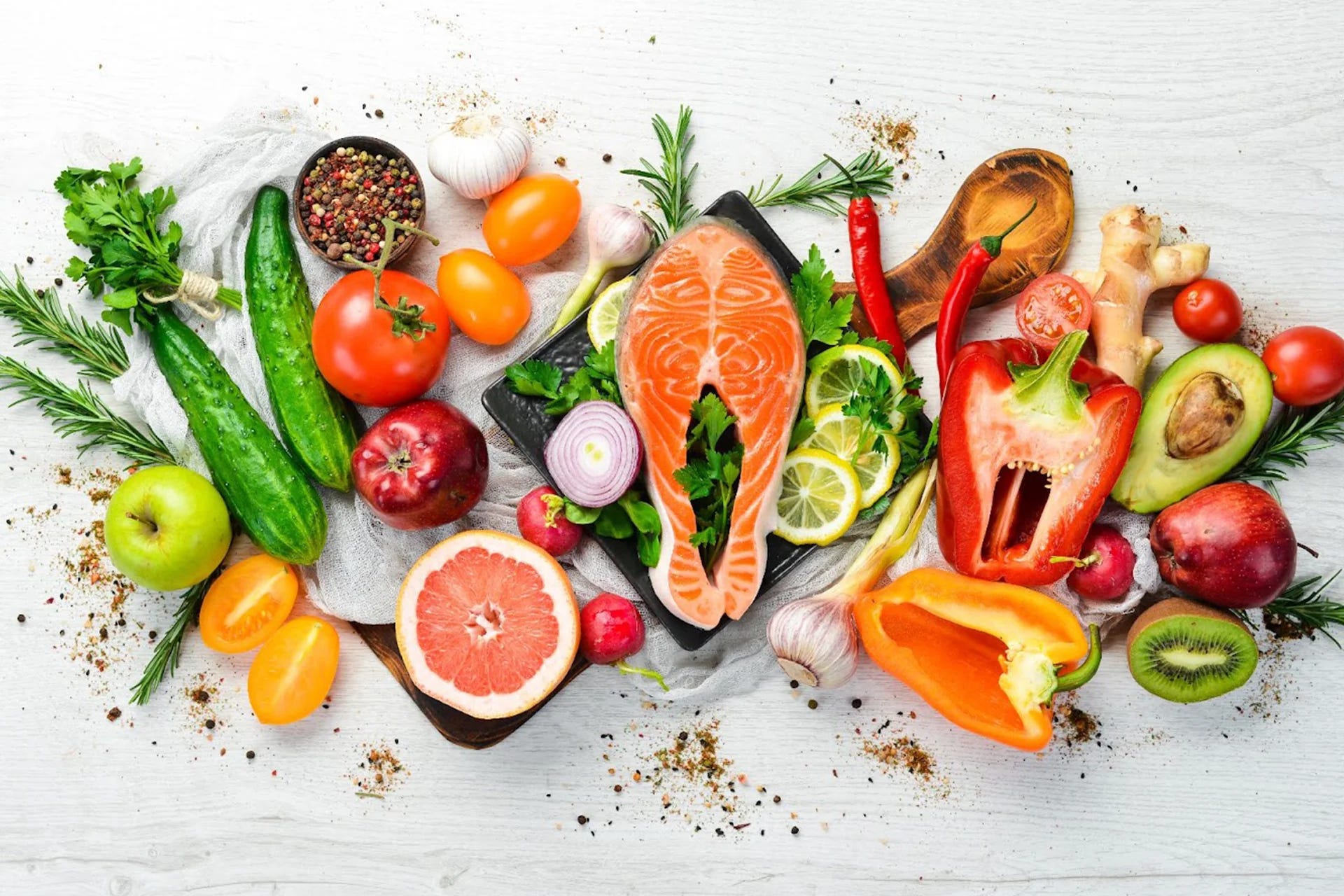
I think it is worth noting that while some MDs take the initiative to educate themselves about nutrition the institutions that certify those professionals place their emphasis on synthetic pharmaceutical drug interventions rather than maintaining optimal health through preventative measures (using food as medicine). Many men and women asking their MDs about the topic of fertility will receive scant (if any) solid nutritional info (unless they happen to work with an exemplary individual that chose to learn about the importance of nutrition on their own).
This was not always the case in the medical professional field it was not too long ago that health care specialists would have emphasized the importance of whole food nutrition and herbs to support fertility (as opposed to surgical procedures and synthetic lab made supplements/chemicals).
As I explored in my article on the true nature of Big Pharma, it was around the turn of the century that the AMA, the Rockefeller Foundation, and the Carnegie Foundation forged their partnership and began to turn medical professionals away from preventative medicine and towards symptom covering drugs. They put their money into drug-based research (oil derived pharmaceuticals) and made that the main focus of “healthcare”—a move that turned “healthcare” into “sickness management.” The Rockefellers and other prominent banking elite (and the shareholders of their subsidiary pharmaceutical corporations) have been able to control and profit enormously from the drug industry.
Now, all medical doctors in the USA are trained in medical schools that are run and/or accredited/sanctioned by the AMA. Of 129 medical schools in America, only 22 require even what amounts to basic rudimentary courses in nutrition. Medical students are not trained to see the connections between many degenerative diseases and malnutrition. Instead they are taught only how to treat with surgical or pharmaceutical methods but do not cure or alleviate the root problem or ailment. Similar numbers are reflected in medical education here in Canada. In this way, they are assured of life-long customers. Surveys conclude that over 66% of all Americans regularly take prescription drugs (with only slightly lower numbers being reflected here in Canada as well).
This is one of the reasons I felt compelled to put in the time to do this research and provide you all lists like these, as the people we were raised to trust with giving us health advice for important topics like fertility are (often through no fault of their own) often quite ignorant when it comes to this dynamic of human health.
I hope this information below can serve to be helpful for both females and males working with their health care provider (whether they are allelopathic MDs, homeopaths, nutritionists and/or herbalists). I encourage people that are seeking to start a family (and their health care providers) to do their own homework (do not take my word for it, dig into the well over 100 references at the bottom of this post and confirm what I have shared here independently for yourselves).
Fertility and Reproductive Health Enhancing whole foods and naturally occurring compounds for Females
A diet focused on ovogenesis, or egg development can improve female reproductive health and optimize fertility rates.
Harvard researchers reviewed 8 years of food diaries from 17,000+ women across the U.S., ages 25-42 years old, all with a history of infertility. They gave each woman a score based on how well she followed a specific healthy “fertility diet”.
Long story short, women who scored the highest were 66% more likely to reverse their ovulatory infertility and have a baby.
It means that you have better chances of improving your ovulation, through good foods that boost fertility naturally, than if you were to spend tens of thousands of dollars on grueling medical procedures.
Note: the researchers specified “ovulatory” infertility because they were not expecting nutrition to impact infertility due to structural issues like blocked fallopian tubes.
“A good preconception plan needs to start a MINIMUM of 4 months out for both men and women, but the longer the better! If pregnancy is on your radar this year now is the time to be really intentional about you and your partners diet.. ..& lifestyle.
And if you think that the man’s job is done once the egg has become fertilized you’re very wrong, the sperm creates the placenta so therefor the health of the man influences the entire pregnancy, plus the man makes up 50% of the genetic expression of the child so the health of both partners is equally important.” (source)
A recent study found that nutrition from the mother and father starting before conception influences the baby’s metabolic state for the rest of their life!!! This includes the baby’s ability to digest food, how well they absorb nutrients, how well they process these nutrients for energy, and so much more.
For information on herbs to help with Absent Period & Lack of Menstruation (Amenorrhea), read this. Herbal info for Miscarriage Prevention can also be found here. Information on helping with Ovarian Cysts with herbs can be found here.
Vitamins, minerals and naturally occurring compounds for Women For Fertility, During Pregnancy & Into Postpartum:
Vitamin B9
Arguable one of the most talked about nutrients for pregnancy, it is known to help reduce the risk of neural tube defects, which can impact baby’s brain or spine. Low folate status in a mother is also linked to a higher risk of congenital heart defects, having a low birth weight infant, and preterm birth.
Omega 3
Reduces inflammation, helps regulate hormones, increases blood flow to the uterus, improves implantation chances, contributes to optimal fertility (in men and women), overall health during pregnancy, as well as fetal brain and vision development.
The microbiome plays a significant role in fertility by influencing the vaginal microbiome, potentially improving sperm quality, and addressing conditions like bacterial vaginosis that can impact reproductive health.
Coenzyme Q10 (CoQ10)
A biomolecule that exists naturally in the human body and is present in every cell, it’s a potent antioxidant. Having a good amount in the blood stream has been shown to improve egg quality, sperm quality, and pregnancy rates making it beneficial for BOTH men and women to take when trying to conceive!!
Vitamin D3 & K2
Actually a hormone not a vitamin and it is directly correlated to lack of implantation in women if it’s below a certain level. Vitamin D is necessary for Calcium absorption and vitamin K directs calcium to the bones and away from soft tissues.
Found in colorful fruits and vegetables, play a role in supporting female fertility by reducing oxidative stress and inflammation, which impacts egg quality and reproductive health.
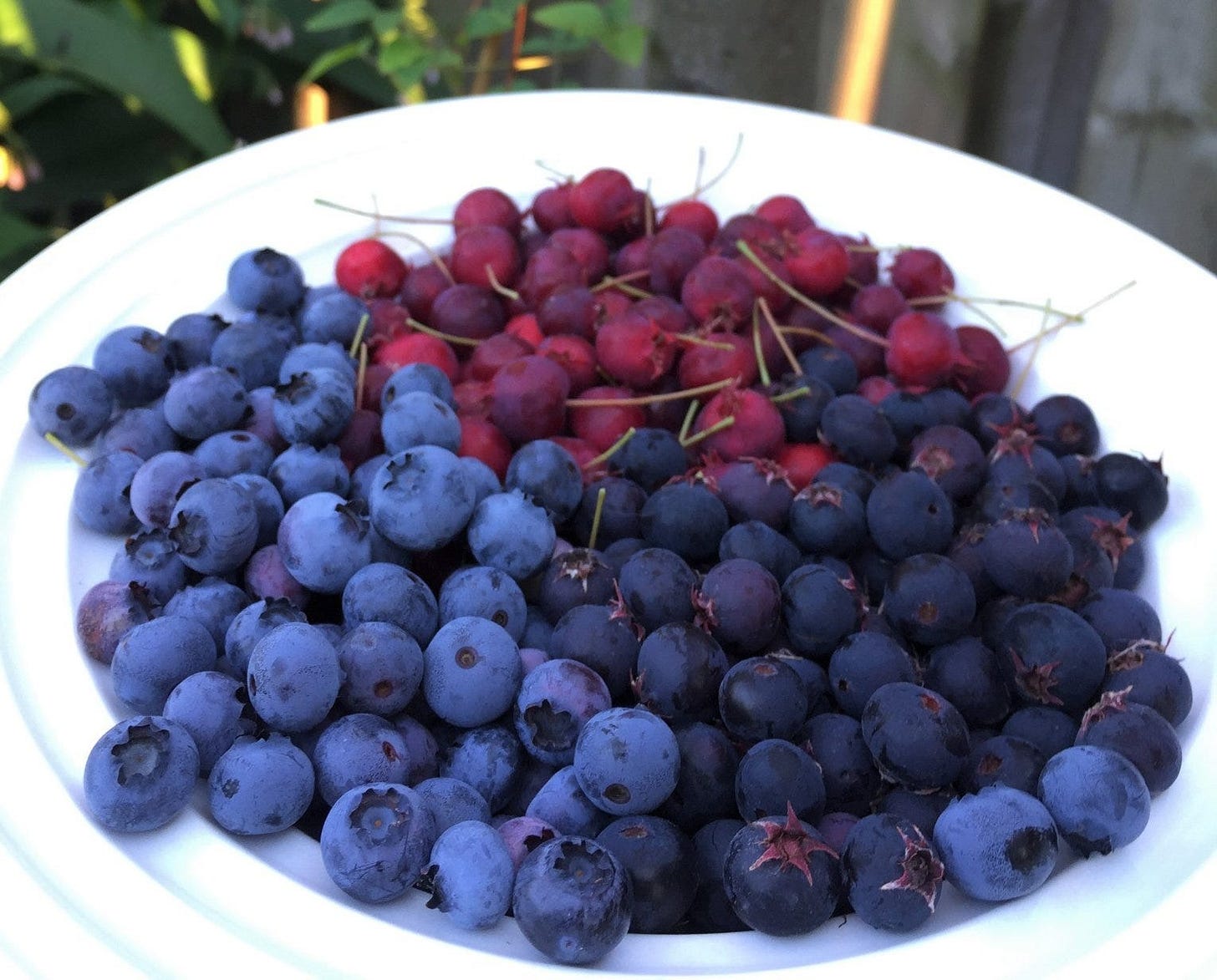
How Anthocyanins Benefit Female Fertility:
Antioxidant Properties:
Anthocyanins are powerful antioxidants that can help protect cells from damage caused by free radicals, a process known as oxidative stress. Oxidative stress can negatively impact egg quality and the overall health of the reproductive system.
Anti-inflammatory Effects:
Inflammation can disrupt the delicate balance of the reproductive system, making it harder to conceive. Anthocyanins have anti-inflammatory properties that may help reduce inflammation and improve reproductive health.
Modulation of Hormones:
Some studies suggest that anthocyanins can positively influence hormone levels, which are crucial for ovulation and successful implantation.
Improved Ovarian Health:
Anthocyanins may help protect ovarian tissue from damage caused by oxidative stress, which is important for maintaining healthy egg production.
Enhanced Egg Quality:
Antioxidants like anthocyanins can help protect eggs from damage, potentially leading to healthier eggs and a higher chance of successful fertilization.
Uterine Health:
Anthocyanins may help maintain a healthy uterine lining, which is essential for implantation and a successful pregnancy.
Magnesium
Controls follicle-stimulating hormone (FSH) FSH is the hormone that stimulates the ovaries, low magnesium can also signal to low progesterone levels, which can lead to a short luteal phase and increased miscarriage risk.
Magnesium-rich foods on a regular basis, including Hickory Nuts, walnuts, Acorns, Pawpaws (Asimina triloba fruit), spinach, chard, pumpkin seeds, almonds, avocado, cacao and bananas.
Many types of seaweed contain solid amounts of magnesium, including kelp, dulse, sea lettuce, Irish moss, and carrageen
Choline
So important for fertility and during pregnancy, it supports neural tube formation, aids placental function, and supports cognitive function from infancy to childhood when taken during pregnancy. 90% of pregnant women do not get adequate choline from their diet.
Sources of Choline:
Shiitake mushrooms
Organic (and preferably sprouted and/or fermented) Chickpeas, Soybeans, Runner Beans kidney beans, and pinto beans
Almonds cashews, brazil nuts, flax seeds, and pistachios
Quinoa
Potatoes
free range, organic eggs
organ meats from large herbivore animals
Wild-caught salmon
Organic chicken
Organic broccoli
Organic brussel sprouts
Iodine
A mineral which is not talked about enough for fertility but deficiency is a widely recognized risk factor for pregnancy loss, and maternal and neonatal thyroid problems. Iodine is essential for maternal thyroid function and is also necessary for normal thyroid function in babies.
One of the best sources of natural iodine is regeneratively grown seaweed.
Melatonin
a hormone that regulates sleep, also plays a role in fertility, improving oocyte quality and fertilization rates, especially in women of advanced maternal age. Melatonin is an antioxidant that can assist in reversing oxidative damage to oocytes therefore improving egg quality and improving the chances of conception.
Raw Milk, Hickory nuts, Reishi mushrooms, Auricularia auricula-judae (Jew's ear) mushrooms, cherries, peppers, wild fish, wild rice, goji berries, and Germinated legumes or seeds contain melatonin.
For more info on melatonin read this and this.
Foods to boost progesterone levels for a healthy pregnancy:
Progesterone is a sex hormone produced mainly in the ovaries.
It all starts with an ovary releasing an egg into the fallopian tube (a process called ovulation). After ovulation, the remaining follicle turns into a new organ, called the corpus luteum, which is responsible for making most of your progesterone.
Progesterone is critical for both getting and staying pregnant. After ovulation, progesterone levels rise to ensure that the endometrium (a.k.a. the uterine lining) is thick and receptive, allowing a fertilized egg to implant successfully.
Once implantation occurs, progesterone prevents the uterine lining from shedding and supports the growth of the embryo.
While essential for a healthy pregnancy, progesterone is also a key part of overall health. It helps you regulate your mood, supports immune function, and promotes deep sleep.
Low levels of progesterone can cause irregular menstrual cycles, a thin uterine lining that can’t support implantation, and increased risk of miscarriage.
Ultimately, this means a longer, harder time getting pregnant, and then increased risk of early loss increases.
Even though your doctor likely neglected to mention the power of nutrition, you deserve to know that the right food can promote the body’s natural production of progesterone and support overall hormone balance for better fertility.
That said, know that no single food contains progesterone itself.
Instead, foods rich in specific nutrients can aid the processes involved in progesterone production. Nutrients such as vitamin C, vitamin B6, magnesium, and healthy fats are particularly beneficial.
When using food to increase progesterone start by making sure you’re eating enough of each macronutrient: protein, carbohydrate and fats.
Protein is essential for building and repairing tissues, and making enzymes and hormones. That’s why eating enough protein ensures the body can produce the hormones needed for ovulation, and then make healthy amounts of progesterone.
High protein foods to support healthy progesterone levels:
Organic Meat, wild fish, poultry
Greek yogurt and cottage cheese
Eggs
Miso, tempeh and edamame
Carbohydrates are your body’s main energy source, and despite their bad rap, they’re equally important for hormone balance. Eating enough carbs keeps your body feeling safe, preventing an exaggerated stress response that can suppress progesterone.
Carbohydrate foods to support healthy progesterone levels:
Fruit
Winter squash and pumpkin
Potatoes, sweet potatoes and yams
organic (ideally sprouted) Beans and lentils
Whole grains like organic wild rice, oats, quinoa and wheat berries
Starchy vegetables like organic corn and peas
Healthy fats are equally vital, as they provide cholesterol, the primary building block needed for making progesterone. Low fat diets lower overall sex hormone levels, including progesterone.
Healthy high-fat foods to support healthy progesterone levels:
Fatty fish like salmon
Nuts, seeds and nut butters
Avocado and avocado oil
Olive oil
Coconut and coconut oil
When any of these three macronutrients, proteins, carbs or fats, are in short supply, the body struggles with hormone balance, leading to irregular cycles, anovulation and low progesterone.
Also, make sure you’re eating enough of the critical nutrients.
No single food contains progesterone. However, certain foods support the body’s natural production with essential nutrients needed for ovulation, and for healthy ovaries that can pump out progesterone.
Here are the six top foods to increase progesterone levels:
Egg Yolks:
While egg whites provide protein, the egg yolk provides a rich source of nutrients hard to get elsewhere in the typical American diet – like choline, preformed vitamin A and vitamin D.
When it comes to increasing progesterone egg yolks give you:
Cholesterol
Yes, this is a good thing! Cholesterol is the literal building block of progesterone and if you’re not eating enough of it, you won’t have the materials needed to make progesterone.
Vitamin A
While fruits and vegetables like sweet potato, Goji Berry, pumpkin, cantaloupe, carrots, etc. provide beta-carotene, a precursor to vitamin A, egg yolks provide the already-formed version of vitamin A, called retinol.
It’s this pre-formed vitamin A that is required to convert cholesterol into estrogen and progesterone. Studies have linked retinol deficiency to irregular ovulation and lower progesterone levels.
Lutein
Lutein is one of the antioxidants found in egg yolks – giving them their yellow hue.
Lutein is the root word in both Luteinizing Hormone (which triggers ovulation), luteal phase (when progesterone is produced), and corpus luteum (the organ that makes progesterone).
The corpus luteum is made up of lutein, explaining why they both have a yellow-color.
Chickpeas
Chickpeas, a.k.a. Garbanzo beans are one of the richest sources of vitamin B6, along with meat, poultry, tuna, salmon, etc.
Vitamin B6 acts as a cofactor for enzymes involved in making progesterone. This makes eating high vitamin B6 foods a critical step to support progesterone levels.
Research also suggests that vitamin B6 helps balance estrogen with progesterone levels, ensuring that estrogen does not become disproportionately dominant, which can weaken progesterone activity. Make sure they are organic as conventional growers (yes even non-gmo farmers) will spray their chickpeas with glyphosate as a desiccant before harvesting.
Try this recipe for enjoying chickpeas along side many other fertility enhancing foods:
Moroccan Harissa Spice Medley and Vegetable Tajine
The food from Morocco speaks to the rich history of an illustrious culture that has benefited from the abundance of many intersecting trading routes and the ‘edge effect’ of where the desert mountains meet the ocean for cultivating a wide range of nutritious and flavorful crops for centuries.
Sweet potatoes :
The high doses of Vitamin A in sweet potatoes makes the vegetable ideal for consumption by women of childbearing age to enhance their fertility. Studies on animal models have shown that Vitamin A plays an integral role in improving reproductive performance. Research has also shown that a deficiency in Vitamin A can lead to secondary infertility in women of childbearing age. Sweet potatoes also contain a healthy dose of iron, which is a crucial mineral in promoting fertility in women of childbearing age. Reports indicate that anaemia, or iron deficiency, is a cause of infertility among women. These reports have shown that treating the iron deficiency by increasing dietary intake of iron usually results in women being able to conceive a few months to a year after the treatment. Other studies have found that an increase in dietary iron intake reduces the risk of ovulatory infertility. In addition, sweet potatoes contain high doses of vitamin A, which is essential in improving reproductive performance in women of childbearing age.
Leafy Greens
Dark leafy greens like arugula, kale, spinach, Swiss chard and Bok choy are great sources of the mineral, magnesium.
Magnesium is a key player in the secretion of follicle-stimulating hormone (FSH) and luteinizing hormone (LH) from the pituitary gland, both of which are critical for triggering ovulation, and thus for progesterone production.
Chronic stress can lead to elevated cortisol levels, which in turn can prevent the production of progesterone. By supporting stress reduction and overall calm, magnesium indirectly supports progesterone levels.
Bell Peppers, tomatoes and citrus fruits
What do bell peppers, tomatoes and citrus fruits all have in common? They’re all rich sources of vitamin C.
Vitamin C accumulates in the ovaries where it literally helps the corpus luteum to secrete progesterone.
With antioxidant activity, vitamin C also protects ovarian cells from oxidative stress. This creates an overall healthier corpus luteum that can produce more progesterone after ovulation.
List of Herbal Allies for Estrogen Balance
In order to promote healthy estrogen balance, women should consider how herbal phytoestrogens protect female reproductive functions from harmful xenoestrogens, which come from human-made chemicals. Xenoestrogens may cause estrogen dominance. Because of this we must consider liver supporting herbs for natural detoxification. Endocrine nourishing herbs are also very supportive of healthy estrogen balance.
Phytoestrogens can protect the female body against xenoestrogens (artificial chemical hormone mimics) also known as xenohormones. Today, excess estrogen (or estrogen dominance) is a growing problem for women. This is in large part because of the abundance of xenoestrogens coming into our bodies from pesticides, hormone-injected animal foods, plastics, commercial body care products, polluted water, and hormone-containing drugs.
Phytoestrogens can bind to hormone receptor sites before the xenoestrogen, blocking its harmful activity. In one test, Royal Jelly inhibited the BPA-induced growth of breast cancer cells (bisphenol A, a xenoestrogen from plastic).
The major groups of phytoestrogens present in our diet are isoflavones, prenylflavonoids, coumestans and lignans. The main isoflavones are genistein, daidzein, glycitein, formononetin and biochanin A, which are mainly found in soy, soy‐based food and legumes usually in their conjugated forms like genistin, daidzin, puerarin, glycitin, ononin and sissotrin. In countries in Asia where fermented soy products are part of the traditional diet, isoflavone intake levels may amount to about 15–50 mg isoflavones per day (Eisenbrand et al., 2007). In Western industrial countries, isoflavone intake has been reported to be less than 2 mg isoflavones per day (Eisenbrand et al., 2007). Isoflavones have been studied for how they initiate activation of cell production in breast and uterus has been shown to enhance cell proliferation, necessary for growth and tissue maintenance during pregnancy and for breast milk production (Pearce and Jordan, 2004; Harris, 2007; Thomas and Gustafsson, 2011).
In the last decades, soy isoflavones have received attention because of the so called ‘Japanese Phenomenon’ connected to a lower incidence of specific chronic diseases in the Japanese women compared with the Western female population due to a higher intake of fermented soy foods from early life onwards (Watanabe et al., 2002; Korde et al., 2004; Korde et al., 2009). The fact that the prevalence of breast cancer in daughters of migrated Japanese Americans became similar to that of Caucasian Americans after changing their food habits is in line with this observation.
I will re-iterate the need for always eating either organic or homegrown legumes (such as soybeans) though, as glyphosate usage in legume cultivation is widespread and that chemical does adversely impact fertility across the board (even in small amounts).
Burdock root (Arctium lappa): Burdock root is nourishing and cleansing for the liver, aiding in hormonal balance. It helps to remove excess estrogen from the liver for proper estrogen balance in the body.
Dandelion root (Taraxacum officinale): This root aids in liver health and stimulates digestion for improved hormonal balance.
Evening Primrose Oil, cold pressed from the seed (Oenothera biennis): EPO supports overall hormonal balance through its high content of the omega-6 essential fatty acids (EFA’s), Linoleic Acid (LA) and Gamma Linolenic Acid (GLA). LA is needed for prostaglandin E and GLA is needed for the synthesis of prostaglandin E. One of the many functions of Prostaglandins is to help control regulation of hormones.
Flax seed (Linum usitatissimum): Flax seeds contain lignans, which are the second strongest group of phytoestrogens. Researchers from the University of Toronto, Canada, share of in vitro studies out of Finland, the University of California and the University of Minnesota that have found that “…flaxseed lignans moderately inhibit the cytochrome P450 enzyme aromatase, which catalyzes the conversion of androgens [testosterone and androstenedione] to estrogens (30, 31).” (The American Journal of Clinical Nutrition)
Flax is also high in fiber. The combination of lignans and fiber in flax seeds is known to help to remove excess estrogen from the body, while also protecting it from xenoestrogens.
Licorice root (Glycyrrhiza glabra): Licorice is an adaptogen herb, supporting the endocrine system for overall hormonal support. It also has the propensity to mimic estrogen (phytoestrogen). Licorice is also hepatoprotective, meaning it is protective of liver health.
Maca root (Lepidium meyenii): Maca helps to control estrogen/progesterone balance in the body.
Milk Thistle seed (Silybum marianum): Milk Thistle seed is one of the best plants for liver health. Liver health is vital for hormonal balance. The liver helps to filter toxins from the body, including excess hormones.
Red Clover aerial parts, blossom (Trifolium pratense): Red Clover is a nourishing food/herb. It is rich in a variety of vitamins and minerals. It is one of the best blood-purifying herbs, aiding in detoxification of environmental pollutants prior to conception. Rich in phytoestrogens, Red Clover may help protect the body from xenohormones.
Seaweed, leafy parts, variety of species: Seaweeds are high in fiber for improved estrogen metabolism.
Sesame seeds (Sesamum indicum): Sesame seeds have the highest oil content of any seed, providing a rich source of omega 3 and 6 EFAs (see the benefits for hormonal balance above, under Evening Primrose Oil). They also contain lignans which help promote healthy estrogen levels and overall hormonal balance.
Shatavari root (Asparagus racemosus): Shatavari’s main constituents are steroidal-saponins, suggesting its use as an estrogen regulator; the estrogen modulating in turn may contribute to menstrual cycle regulation.
Tribulus, aerial parts and fruit (Tribulus terrestris): This plant supports healthy estrogen levels in women. When used during the first part of a woman’s menstrual cycle known as the follicular phase, it has been shown to help normalize ovulation in women diagnosed with anovulatory infertility.
Cervical Mucus Enhancing Herbs
In order to support healthy cervical mucus production, we must consider herbs that supply essential fatty acids, especially omega-6. Herbs that are demulcent and bitter are supportive of mucous membrane function. We must also be sure to stay hydrated! Herbs that increase circulation to the genitals are also helpful.
Borage seed oil (Borago officinalis): High in omega-6 essential fatty acids, Borage seed oil works to increase cervical mucus and balance hormones.
Dandelion leaf and root (Taraxacum officinale): This bitter herb is stimulating to the mucous membranes, which causes them to secrete fluids. Dandelion is a very nutritive herb, helping to support liver health for hormonal balance.
Evening Primrose Oil, cold pressed seed (Oenothera biennis): This oil is high in omega-6 essential fatty acids. It works to increase cervical mucus and balance hormones.
Licorice root (Glycyrrhiza glabra): Licorice root is a demulcent, meaning it promotes healthy mucous membrane secretions. It also supports hormonal balance through endocrine support.
Marshmallow root (Althea officinalis): Also a demulcent, Marshmallow root is soothing to mucous membranes and offers support for proper function of mucus production.
Oregon Grape root (Mahonia aquifolium, nervosa): Oregon Grape root stimulates mucous membranes secretions and supports liver function.
Red Clover aerial parts, blossom (Trifolium pratense): Red Clover has been shown to increase cervical mucus, aiding vaginal dryness. It also increases circulation to the reproductive organs.
Shatavari root (Asparagus racemosus): This herb is a demulcent. Herbs that have a demulcent action contain mucilage. Mucilage lines the mucous membranes and acts as a protector and tonic for those membranes. Shatavari contains mucilage, this may be helpful for women with low cervical mucus. Learn more here…
Yarrow, aerial parts (Achillea millefolium): Yarrow is an herb of opposites, both astringent, toning for the mucous membranes, yet also moistening for them.
The stimulation of the muscles of the uterus aid in the shedding of the endometrium, stimulating regular menstrual cycles in the absence of pregnancy. This is a wonderful herb for women with absent periods, also known as Amenorrhea. If you have not had a period for a long time, or if your period is late and you know you are not pregnant, Yarrow may aid in bringing on menses. *Do NOT use Yarrow if you think you may be pregnant.
For more on Yarrow read:
Day Four: YARROW
·A powerful flowered plant, great for colds and fevers as it boosts the body’s ability to “sweat off” an infection, perfect for toning blood circulation and regulating blood pressure, as well for stimulating digestion and healing the intestinal membranes. Make some tea out of it and watch the magic happen. She is also a blessing for pollinators and attra…
Tonic Herbs for Fertility
Choose herbs that support and defends the entire body. Garlic, Goji berry (leaves and berries), elderberry, raspberry leaf and green tea are excellent examples of herbs that can be consumed daily to build the immune system and keep everything working properly. Green tea, raspberry leaf and elderberry make delicious morning teas. Raspberry is a uterine tonic favored by midwives and herbalists worldwide.
List of Tonic Herbal Allies
Because Yarrow is a uterine stimulant, it is important not to use this herb after ovulation if you think you may be pregnant. This herb is best used in preparation for pregnancy, or after pregnancy and breastfeeding, to tone the uterus. May also be used to heal stagnant fertility conditions and promote regular menses.
Balancing Act: An Herb of Opposites:
Yarrow is cooling and warming
It promotes circulation, yet is extremely astringent, stopping excessive blood flow
Drying and moistening; promotes sweating and detoxification, but strengthens and tightens tissues
Normalizes opposing conditions
Stimulates uterus to bring on menstruation, yet curbs heavy menstrual flow; effectively aiding in regulation of menstrual flow
Yarrow is a traditional tonic to stimulate the uterus to bring on menses. This works well for a boggy, weak uterus. Yarrow aids in toning the muscles of the uterus, as well as increasing muscular activity of the uterus, which serves to initiate menstrual flow. The stimulation of the muscles of the uterus aid in the shedding of the endometrium, stimulating regular menstrual cycles in the absence of pregnancy. This is a wonderful herb for women with absent periods, also known as Amenorrhea. If you have not had a period for a long time, or if your period is late and you know you are not pregnant, Yarrow may aid in bringing on menses. *Do NOT use Yarrow if you think you may be pregnant.
Studies suggest garlic has positive effects on female reproductive health, including hormonal balance and other fertility benefits.
Benefits:
Hormonal Balance: Garlic compounds like allicin and ajoene modulate the female reproductive system, improving hormonal balance and regulating the menstrual cycle.
Antioxidant Properties: Garlic is a good source of antioxidants, which plays a role in overall reproductive health.
Selenium: Garlic contains selenium, an antioxidant that has been shown to improve fertility in both men and women.
May prevent preeclampsia: Preeclampsia is a pregnancy complication that can occur after 20 weeks of pregnancy and is characterized by high blood pressure.
White Peony (Paeonia officinalis): This herb helps build the blood and increases circulation to the reproductive organs. Overall this herb has excellent hormone balancing support. It also aids in pain reduction and relaxation. White peony moves the blood in the pelvic area; good for uterine stagnant conditions including an absent period.
In traditional Chinese medicine, peony root (specifically Paeonia lactiflora) is used to address gynecological issues like menstrual problems and infertility, with some research suggesting it may improve fertility in women with polycystic ovary syndrome (PCOS).

According to a Chinese proverb “a woman who consumes peony root regularly becomes as beautiful as the peony flower.” Learn more about Bai Shao - White Peony Root here Ashwagandha : This ancient herb, renowned for its stress-reducing properties, also supports reproductive health. Ashwagandha aids in balancing hormones and improving sperm quality, making it a key component for both male and female fertility. Ashwagandha has also been shown to help with female sexual function. One study found it could improve sexual arousal, lubrication and orgasms [1].
Raspberry leaf (Rubus Idaeus) To Strengthen The Uterus:
In the realm of traditional medicine, Raspberry Leaf stands tall as a fertility ally enriched with magnesium, potassium, calcium, and antioxidants. Beyond its nutrient-rich profile, this botanical gem contains fragine, an alkaloid renowned for strengthening the uterine wall. Scientific literature supports its historical use, emphasising its potential to provide a nutrient-rich foundation for reproductive health making it an important tea to help fertility.
In addition, raspberry leaf is believed to have a relaxing effect on the uterus, which can help prepare the uterus for pregnancy. The herb is thought to tone and strengthen the muscles of the uterus, making it easier for the uterus to support a pregnancy. This can be especially beneficial for women who have had a previous miscarriage or are at a higher risk of miscarriage.
Green tea contains B vitamins and folate, which is natural folic acid. It also contains minerals, such as magnesium, caffeine, and antioxidants, such as polyphenols.
Green tea compounds such as EGCG, improve endometriosis mainly through anti-angiogenic, anti-fibrotic, anti-proliferative and proapoptotic mechanisms. Moreover, green tea enhances ovulation and reduces cyst formation in PCOS while improving generalised hyperalgesia, and reduces plasma corticosterone levels and uterine contractility in dysmenorrhea.
Polyphenols protect your body’s cells from damage that can lead to cancer and other diseases. They can also help to reduce inflammation and improve the flow of blood to the tissues in your body. Polyphenols also benefit fertility and ovulation.
Lady's Mantle (Alchemilla Vulgaris) For Reducing Tension:
Step into the world of Lady's Mantle, steeped in traditional medicine for its fertility-promoting virtues. Recent research identifies it as a potent vasorelaxant, effectively reducing tension in blood vessels. This unique quality contributes to easing menstrual pain and cramping, to create a healthy reproductive environment.
Lemon Balm (Melissa Officinalis) For Reducing Stress:
In the intricate tapestry of hormonal intricacies, Lemon Balm emerges as a calming force supported by scientific inquiry. A notable study in 2004 explored its effects on mood, revealing that participants experienced heightened feelings of calmness and focus after consuming Lemon Balm, making it a popular choice for conception tea.
Nutritious Herbs for Fertility
Oxide stress is common problem linked to fertility issues. Vitamins C and E are both powerful antioxidants that help increase fertility of both men and women. Trace minerals are important to maintain a healthy hormone balance. Both zinc and selenium are usually high on the list of minerals that nutritionists recommend for a well planned fertility program.
List of Nutritive Herbal Allies
Dandelion leaf and root (Taraxacum spp) is much more than just the world’s most common garden weed; it’s also a wonderful cleansing herb and a bountiful source of herbal nutrition, making it an excellent choice for women who would like to get pregnant or who already are.
Dandelion encourages bile production in the liver and speeds up the elimination of wastes. For fertility cleansing, dandelion leaf and root can shore up nutrients that may be lacking, while cleansing toxins like hormone disrupting chemicals that can build up and stress the liver. Further, hormone balance can be improved by the use of dandelion because it’s the liver’s job to metabolize excess hormones.
When women embark on a fertility journey, I often encourage them to try liver cleansing herbs like dandelion first. I’ve found that a more regular cycle can result with the use of dandelion and other liver cleansing herbs. Many women report less cramping and less PMS when they use these types of herbs too.
If you’re already pregnant, dandelion is a gentle diuretic for pregnancy-related water retention. It can help fight fatigue, system sluggishness, and constipation, all common pregnancy issues. Dandelion is a high source of vitamin A, B, C, D, calcium, potassium and iron, and is healthy and safe for moms-to-be.
Rhodiola Rosea and Rhodiola integrifolia:
Premature Ovarian Failure or Primary Ovarian Insufficiecy (POI) is a condition in which women lose their fertility and period before age 40.
Researchers gave Rhodiola to 40 study participants who had experienced premature ovarian failure. At the end of the study, 25 women had regained their period, and 11 were pregnant.
While this benefit of Rhodiola is not part of the conventional standard of care for fertility treatment, this study helps demonstrate why many traditional herbalists have recommended Rhodiola for fertility.
Royal Jelly: a natural substance known for its fertility-enhancing properties promotes folliculogensis (the process by which ovarian follicles, which contain immature oocytes (eggs), develop and mature, ultimately leading to ovulation) and increases ovarian hormones. Rich in amino acids, lipids, sugars, vitamins, and most importantly, bioactive compounds like royalactin, Royal Jelly powder supports reproductive health, hormone balance, and may improve egg and sperm quality.
Nettle leaf (Urtica Dioica) For Detoxification:
Nettle is a herb that has been traditionally used to improve fertility and increase the chances of conception. It has some fantastic detoxification properties which are essential for maintaining a healthy reproductive system as it helps eliminate toxins from the body.
The leaves of the nettle plant are rich in vitamins and minerals, including iron, calcium, and magnesium, which are important for reproductive health. These nutrients can help regulate menstrual cycles, improve overall fertility, and increase the chances of conception. This is why it’s a chosen favourite when it comes to fertility boosting tea!
Nettle leaf also contributes to the toning of the uterus. A toned uterus is important for supporting a healthy pregnancy and facilitating the implantation of the fertilized egg.
Nettle also Improves Lactation In Nursing Mothers.
Nettle is traditionally used as a galactagogue, meaning it helps increase breast milk supply in nursing mothers
A clinical study completed in 2018 found that mothers who drank an herbal tea containing Stinging Nettle saw an increase in milk production after seven days.
Propolis resin
Chickweed herb
Flax seed
Alfalfa herb
The following foods (and food groups) boost your odds of conceiving. This fertility diet will likely benefit you, whether you’re going through IVF or struggling with fertility-related issues like endometriosis and PCOS (polycystic ovary syndrome).
Fruits and berries
Fruit consumption was found to promote fertility, according to a 2018 study. Women who ate fruit three or more times a day were the fastest to become pregnant. In fact, women in this group had up to 19% shorter pregnancy time than those who ate fruits less than one to three times a month.
Elderberries in particular offer both nutrients and research suggests elderberry extracts positively influence female reproductive hormones and ovarian function
Sunflower Seeds
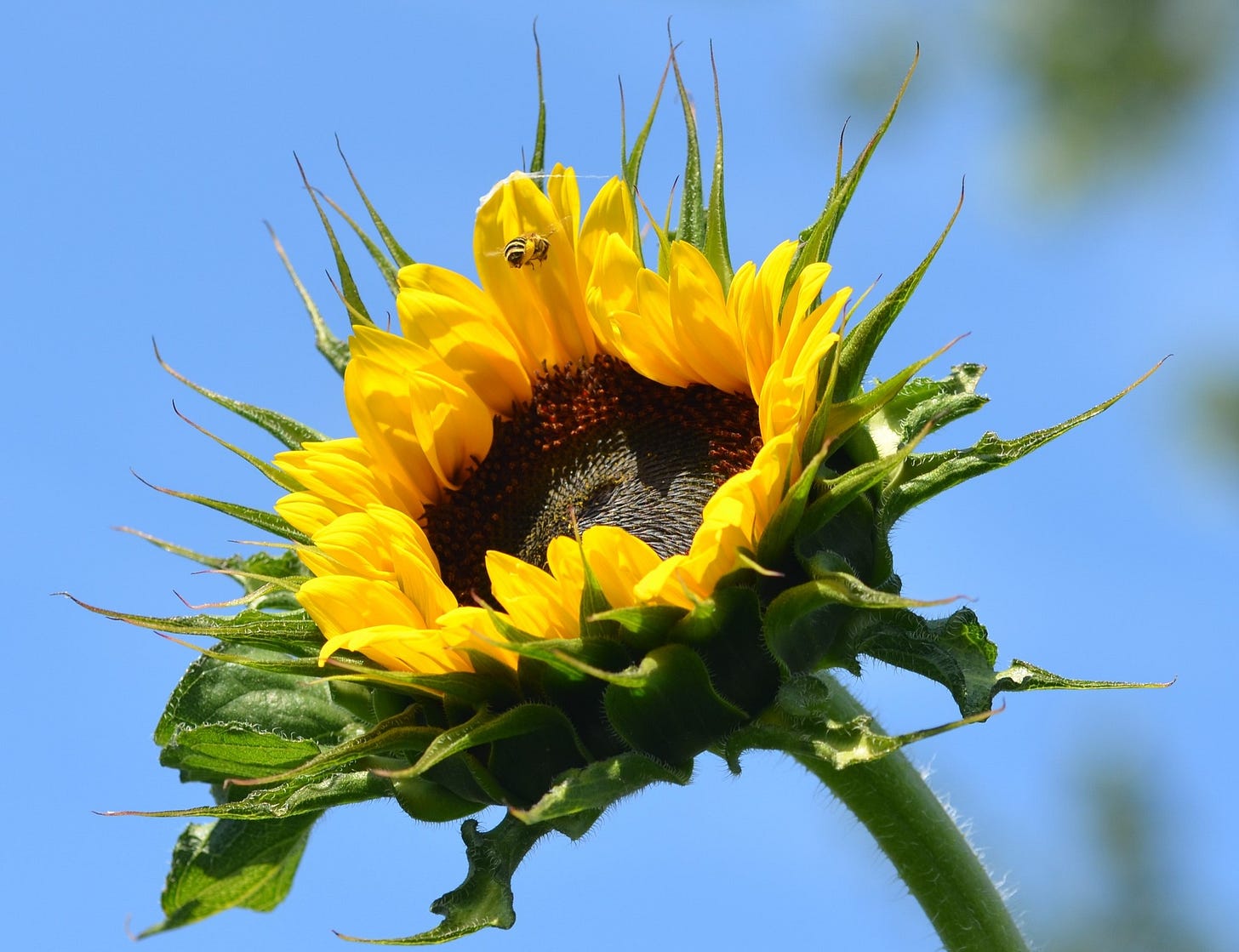
Did you know that vitamin E is an essential micronutrient for women trying to get pregnant?
Vitamin E possesses powerful antioxidative benefits that may help alleviate some of the harm caused by environmental pollutants and unhealthy lifestyle habits contributing to poor fertility health among women. Scientific data showed that due to the antioxidative nature of vitamin E, it can “exert beneficial effects” against reproductive issues like unexplained infertility and habitual abortions (when there are three or more miscarriages).
That’s why sunflower seeds may be your next go-to snack in between meals. Just one ounce (28 grams) of dry roasted sunflower seeds will provide you with 49% of your Daily Value (DV) requirements for vitamin E.
Dark Green Leafy Vegetables (like Kale)
Another abundant source of folate, dark green leafy vegetables are also recommended as a fertility-boosting food for women.
Kale, a nutrient-rich leafy green, can contribute to female fertility due to its high content of folate, iron, and calcium, which are essential for reproductive health and egg quality.
According to The Institute of Medicine’s Food and Nutrition Board of the National Academy of Sciences, individuals with a female reproductive system capable of becoming pregnant should increase folate intake before they are even pregnant.
They say to do this until the 12th week of pregnancy. Doing so can help tone down the risk of neural tube defects in your baby should you eventually carry a child.
Try folate from whole food sources like broccoli, spinach, Kale, Brussels sprouts, and asparagus. After all, this micronutrient is vital for proper and healthy fetal development even before you’re expecting.
Asparagus
Asparagus is a spring crop that contains vitamin K, folate (B9), and phytochemicals. Vitamin K is good for blood clotting and plays a key role in bone, artery, and cell health. Asparagus is good for the brain, DNA generation, and repair, reduces inflammation, and prevents birth defects. Phytochemicals help to prevent cognitive decline and cancer cell growth.
Eggs
Eggs are a great source of protein and contain several vital nutrients beneficial for fertility, such as:
Folate
Iron
Selenium
Omega-3 fatty acids
Choline
Zooming in on choline, it’s an essential nutrient that our bodies don’t make enough of. That’s why we have to get the rest of what we need from our diet, such as scrambled, poached, and half-boiled eggs.
As well, they are rich in Vitamins B12, D, A and E, all crucial for fertility health. And it keeps going, they contain iron, zinc, selenium, choline and carotenoids that benefit overall health, hormone production, ovulation and improved fertility outcomes.
Per a study in the American Journal of Epidemiology, a diet rich in choline — and possibly methionine (a protein-building amino acid) and betaine (derived from choline) — was linked to a lower risk of neural tube defects.
Seaweed
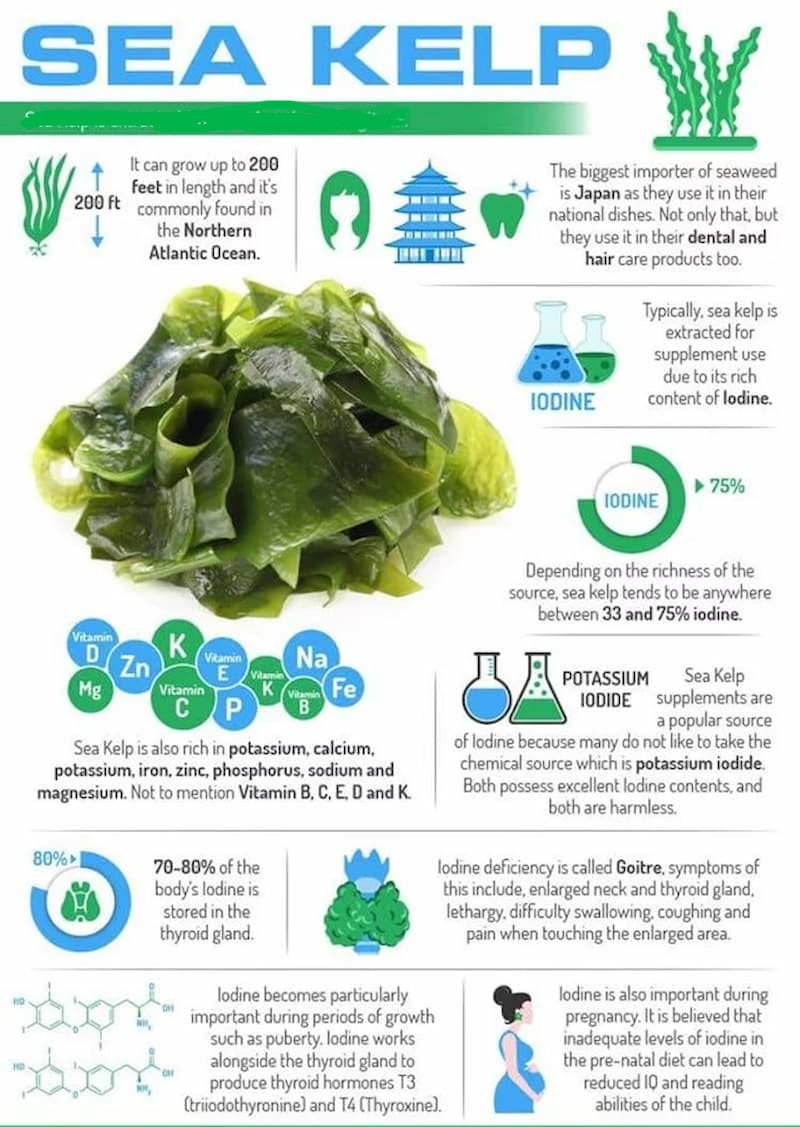
Seaweed is a rich source of nutrients that helps to maintain hormonal balance, and blood sugar levels, and increase fertility. Seaweed also helps to remove excess estrogen which aids endometriosis, PCOS, ovarian cysts, and uterine fibroids, in all estrogen-dominant disorders and to increase fertility. The seaweed category comprises kelp, hiziki, dulse, arame, kombu, arame, agar, and wakame.
Beans & Lentils (organic)
This study says that by eating 5% of your total energy intake as vegetable protein instead of animal protein, you can have >50% lower risk of ovulatory infertility. This means that protein coming from beans, lentils, chickpeas and legumes helps females improve your fertility outcomes. As well, they are low in saturated fats and high in essential nutrients like fibre, selenium, magnesium, folate, zinc, B vitamins, iron, and more!
Citrus Fruit
These are high in vitamin C, potassium, flavonoids, carotenoids and other antioxidants, copper, phosphorus, fiber, B vitamins, and more. As well, look at this research study that says citrus fruits help increase fertility in females!
Chili Peppers:
Rich in vitamin C, – even more so than oranges – chilis support sperm quality in men and help women's bodies absorb iron from the foods they eat.
Some myths about spicy food being bad for women seeking to get pregnant float around the internet. Eating spicy food during pregnancy is 100 percent safe for your baby. Really! It can’t hurt your little one. Though — 2019 research does suggest that eating certain foods during pregnancy can change the “flavor” of your amniotic fluid.
So you could be influencing your baby’s taste buds with all those Pad Thai dishes, sriracha sandwiches and hot wings, and they might show a preference for certain familiar flavors later on. Not that that’s a bad thing, just FYI.
Pomegranate
Pomegranate is a fruit full of sweetness and health. Pomegranate contains antioxidants, and nutrients such as vitamin C, K, folate, and other minerals to help increase fertility. You can add them to your breakfast, salads, lunch, dinner even in snacks, or enjoy them plain. Antioxidants will help to stimulate the uterus by enhancing the blood flow to the womb to promote healthy uterus lining for implantation.
Hickory nuts and Walnuts
We can’t talk about fertility without mentioning nuts. They are nutrient powerhouses! Further to why, they are high in so many fertility nutrients such as, Omega 3 fatty acids, plant-based protein, fibre, Vitamin E, antioxidants like polyphenols and melatonin as well as vitamins and minerals like B vitamins, magnesium, phosphorus, copper, manganese, zinc and selenium. To sum it up, all of these nutrients have a great impact and benefit to your reproductive and fertility health. They contain a great amount of magnesium. This essential mineral can boost progesterone in the body and can even promote blood flow to the uterus. This is a crucial factor in improving the chances of getting pregnant. Lastly, Hickory nuts and walnuts are rich in antioxidant compounds. These can help fight the oxidative stress caused by free radicals, among the leading factors of egg deterioration.
Chia Seeds
Fourth to the plate are chia seeds. These seeds are small, nutrient-dense and high in nine essential amino acids, which are essential for hormone production. As well, beyond being high in Omega 3 fatty acids , they are balanced with Omega 3 and omega 6 fatty acids, which is crucial for overall health.
Avocado
Fifth to be mentioned are Avocados. This unique fruit, known for its creamy texture and rich flavor, is wonderful for fertility health. It offers a wide variety of vitamins, minerals, healthy fats, and beneficial compounds. Because avocados are rich in healthy fats, Vitamin K, E, C and B vitamins and minerals like potassium, magnesium and copper, as well as antioxidants, fibre and phytosterols, they support female fertility in many different ways. People trying to conceive or are already expecting tend to eat less folate and potassium than recommended. Given that avocados are a rich source of these two essential micronutrients, it makes sense to include them in fertility diets for women.
Also, avocados possess high levels of fiber, monounsaturated fats, and fat-soluble antioxidants associated with better health, birth outcomes, and breast milk quality.
Amaranth and Quinoa
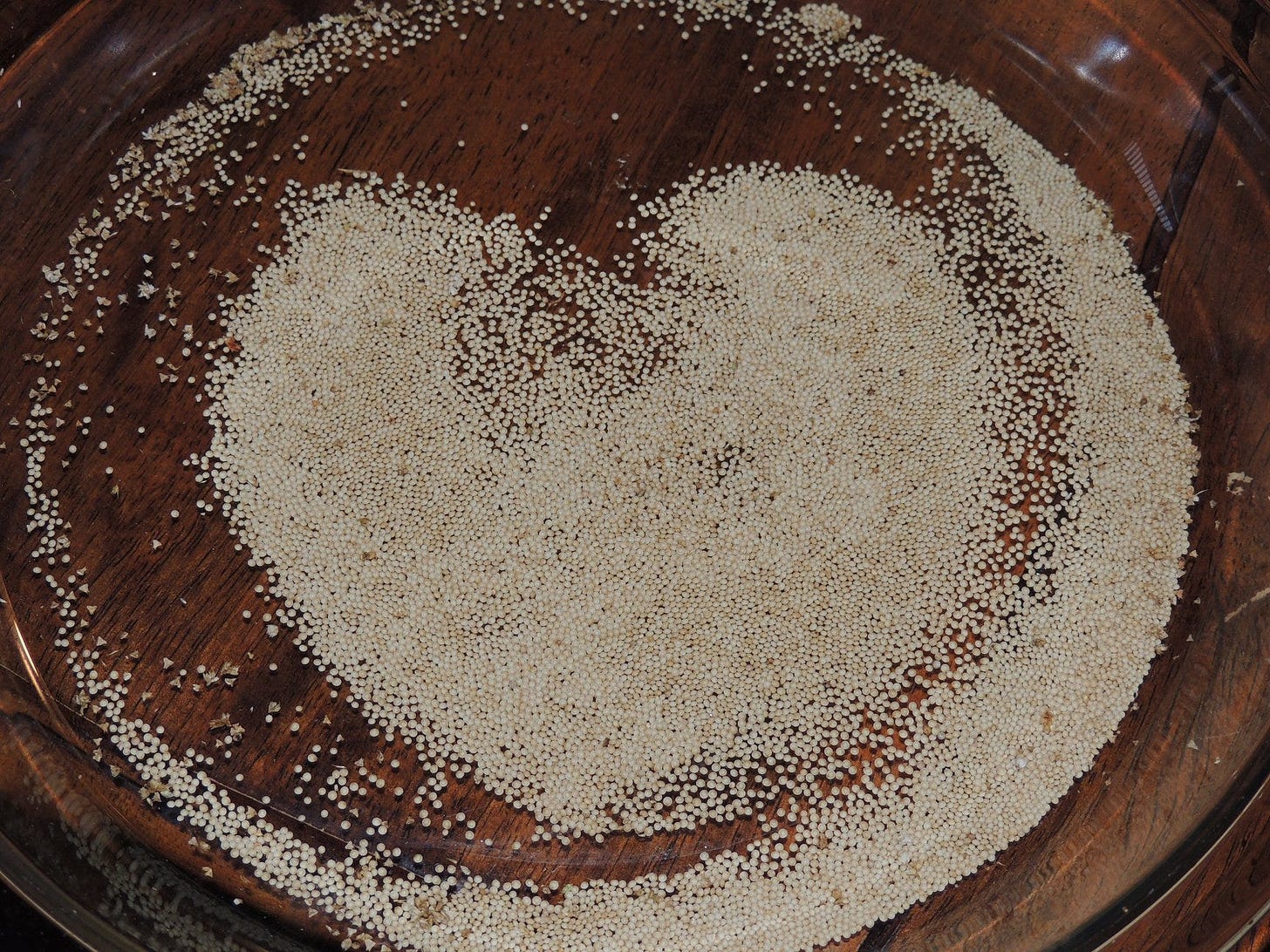
Amaranth and Quinoa are seeds. We eat them like a grain but they are actually considered to be seeds. Because of that, they are gluten-free and contains a variety of vitamins, minerals, and beneficial compounds that help support you. Some nutrients include protein, fibre, Vitamin B1, B2, B3, B6 and folate, as well as minerals like iron, magnesium, phosphorus, manganese, zinc and copper. Plus, these are is rich in antioxidants and great sources of healthy fats too.
Salmon
Fatty fishes, such as salmon, are highly recommended in a fertility diet due to their high content of Omega-3 fatty acids, vitamin D, and selenium. These micronutrients are all essential for ensuring optimal fetal development throughout pregnancy. However, if possible, make sure to make it wild-caught salmon, as this contains lower quantities of mercury.
Oysters
Oysters are a good source of zinc. Oysters are found to be one of the best foods for fertility with their aid to increase fertility. Oysters increase libido and production of good quality eggs in women. Oysters can aid to improve male potency and increase the chances of conception. Zinc in oysters is good to promote proper cell growth and ensure a healthy pregnancy.
Antioxidant Rich Berries
Small, colorful and packed with nutrients, these health-promoting fruits are not to be skipped. Specifically, elderberries, cloudberries, black currants, strawberries, blueberries, raspberries, and blackberries are high in Vitamin C and E, both important for fertility health. All are rich in fibre, antioxidants, potassium, Vitamin K, phytochemicals and more, they can be eaten fresh or frozen.
Pumpkin Seeds
When toasted, they’re known as pepitas, and these delicious seeds are chock full of fiber, vitamin E and zinc. Zinc is an important nutrient for both male and female fertility. Research has linked zinc to healthy sperm production in men + improved ovulation in women.
Beets
The beautiful magenta color in beets is due to their high antioxidant content. Antioxidants fight off damaging free radicals in the body to improve egg quality, prevent miscarriage, reduce inflammation and make a more welcoming home for baby-to-be. In other words, beets are one of the best foods that boost fertility naturally.
Beets are also a great source of:
Vitamin C – think immune-boost, adrenal support & building block for collagen protein that makes your skin more supple and elastic;
Fiber – promotes blood sugar and hormone balance;
Folate – which you need on board preconception to reduce risk of neural tube defects in babe-to-be.
Fun Fact: Beet greens are just as nutritious as those deep red roots. Sauté the greens and add to an egg frittata, or use them raw in smoothies. Beet greens can be bitter, but cooking them with fertility fats, like extra virgin olive oil or grass-fed butter, cuts the bitterness. Sauté with a dash of honey or maple syrup, garlic and red chili flakes for a scrumptious side dish.
Water
It is crucial! It helps supply nutrients, helps you feel better during the day and helps to support your hormone production and so much more. The bottom line is drink water! You can try mixing it with lemons or limes, add chia seeds to it, flavour it with herbs, drink it super cold or piping hot, just get it in your body, to help you help yourself!
Above are foods that help build blood which is essential for Mother’s growing a baby. Here is an additional article on 15 Superfoods for Pregnancy. Always check with your health care provider when taking on any nutritional program.
Immune System Related Fertility Issues
In people with immunological fertility problems, their body identifies part of reproductive function as an enemy and sends Natural Killer (NK) cells to attack. Some of the herbs on this list have been found through studies to reduce immunological response or aid the body in a proper immune response. Adaptogen herbs are very helpful for people with immune-related fertility issues.
Ashwagandha root (Withania somnifera): Ashwagandha supports overall endocrine system function, proper immune response, and aids in possible autoimmune fertility issues.
Bee Propolis (contains pine tree sap, similar to Pycnogenol): Bee propolis may also contain immunomodulating properties. This may be beneficial for autoimmune-related fertility issues such as recurrent miscarriage due to immunological response (mothers body attacks and rejects the fetus), autoimmune-related Premature Ovarian Failure and antisperm antibody.
Cordyceps mushroom (Cordyceps sinensis): Cordyceps has been found in human trials to help restore normal macrophage and natural killer cell activity. It normalizes immune function.
Cordyceps has been revered across the ages in traditional Chinese medicine as a tonic to restore vigour, enhance sexual function and boost fertility. Modern studies have begun to shed light on the practices that traditional wisdom has laid forth, revealing Cordyceps' potential to naturally stimulate libido and support reproductive health.
Several studies uncovered that Cordyceps Militaris has the capacity to increase sexual appetite and sexual performance in both women and men[1].
Further studies have indicated that Cordyceps may have the potential to support fertility in women by helping to regulate the endocrine system, boosting the most bioactive form of estrogen E2. E2 helps to maintain egg health and prepare the uterus to successfully support fertilised eggs[3].
Also, a study published in the journal Fertility and Sterility in 2013 found that cordyceps supplementation improved implantation rates in women with RIF undergoing in vitro fertilization (IVF). The study found that the implantation rate was significantly higher in the group of women who took cordyceps (42.5%) than in the group of women who took a placebo (25%).
Another study, published in the journal Reproductive Biology and Endocrinology in 2015, found that cordyceps supplementation improved endometrial receptivity and pregnancy outcome in women with unexplained recurrent implantation failure (RIF) undergoing IVF. Endometrial receptivity is the ability of the lining of the uterus to support the implantation of a fertilized egg. The study found that cordyceps supplementation significantly improved endometrial receptivity and pregnancy outcome in women with RIF undergoing IVF.
A third study, published in the journal Journal of Traditional Chinese Medicine in 2017, found that cordyceps supplementation improved implantation and pregnancy outcomes in women with recurrent implantation failure (RIF) undergoing in vitro fertilization (IVF). The study found that cordyceps supplementation significantly improved implantation rate, clinical pregnancy rate, and live birth rate in women with RIF undergoing IVF.
Dong Quai root (Angelica sinensis): A person with impaired immune function may greatly benefit from Dong Quai because of its supportive actions on the body systems associated with the immune system, inflammation, and the stress response. Dong Quai has been shown to have immunomodulatory effects, which aids the entire immune system, helping the body to reduce the incidence of autoimmune reaction. Helping the body to mediate immune system and inflammation response will also help to curb excessive scar tissue and adhesion formation.
Echinacea flower, root, seed (Echinacea purpurea, E. angustifolia): One of the most important plants for stimulating the immune system, Echinacea is best used for acute situations where immune function support is needed immediately.
Licorice root (Glycyrrhiza glabra): This plant is an immunomodulator, helping to mediate immune system response in people with autoimmune disease. Licorice root is supportive of overall endocrine function for hormonal balance as well.
Maca root (Lepidium meyenii): Maca is a nourishing food for the endocrine system, aiding the pituitary, adrenal, and thyroid glands (all involved in hormonal balance.) It is also supportive of both immune and stress responses in the body.
Rehmannia root, Di Huang (Rehmannia glutinosa): Rehmannia supports proper insulin levels, blood pressure, and the inflammation response, and is protective of liver health.
Reishi mushroom (Ganoderma lucidum): Reishi strengthens the immune system. It also down-regulates an excessive immune response (common in autoimmune disease), while enhancing monocyte, macrophage, and T lymphocyte activity. Reishi offers anti-inflammatory and stress support as well.
Shatavari root (Asparagus racemosus): Not only does this herb support healthy fertility, it is an immune system and nutritive tonic. Shatavari supports overall immune system function.
Shiitake mushroom (Lentinula edodes): Shiitake supports a healthy immune system.
Tribulus, aerial parts and fruit (Tribulus terrestris): Shown to decrease the effects of antisperm antibodies. A Bulgarian study in 1998, published online at Harvard.edu, using Tribulus on couples with antisperm antibodies, found a 61% increase in conception
Okay now we`ll move over to learning about how to enhance Male fertility, yes it is just as important! (especially when you account for the new science in epigenetics)
Vitamins, minerals and naturally occurring compounds for enhancing Male fertility:
What a man eats during the preconception stage is just as important as what the woman is eating, especially if you are experiencing fertility issues. There are specific nutrients men need. Here are some of the important reasons for men to eat a Fertility enhancing Diet:
Protecting and encourage healthy DNA – DNA is passed on and will be responsible for creating half of your child, the other half being provided by the woman. Certain chemicals and nutritional deficiencies can damage DNA – smoking, pesticides, alcohol and chemicals (GMO “food” and airborne toxins). Average male sperm counts are plummeting globally. Eating healthy foods that contain DNA-protecting antioxidants and nutrients can help to reverse the damage. In modern times, test show an average of 80% of the sperm produced by a healthy male is DNA-damaged. Much of this is from the ubiquitous radiation we are being dosed with by artificial EMFs, so be sure to look at this list of Radioprotective, Radiomitigative and Radiomodulatory whole foods and naturally occurring plant/fungal compounds to protect your DNA from that particular widespread source of DNA damage.
Environmental factors, which can be difficult to manage, play a significant role in male infertility. Exposure to hormone-disrupting chemicals in plastics, artificial EMF emitting electronics, food packaging, pesticides, Big Pharma drugs and personal care products (like aluminium laced deodorant) is directly linked to reduced sperm counts. These toxins can also lead to malformed sperm and decreased libido. Furthermore, rising rates of testicular and prostate cancers in younger men that have received mRNA injections, as well as an unprecedented increase in breast cancers among men, have been associated with these dangerous genetically polluting injections and hormonal disrupting toxins (like glyphosate).
Promote sperm health – eating a nutrient-dense diet can help to not only prevent damage to your sperm, but can also help to promote sperm health. Nutrients such as zinc, selenium and vitamin C (plus many others) have been shown to help increase sperm health, motility and mobility. Just over the last 50 years, male sperm counts have declined rapidly – originally a common/healthy number was 500 million. Now most doctors still hope to see 20 million sperm/mL in a semen sample.
Health during conception = healthy pregnancy = healthy baby – Your future child will be created from you and your partner’s DNA. Preparing for conception helps to set you up for a healthy pregnancy and baby. Switching your eating habits at least 3 months before conception can help you create healthy sperm (sperm is produced in a 3-month cycle; what you eat today creates the sperm you will be using 3 months from now) as well as supports the eating habits of your pregnant partner.
Encourage and support healthy libido – a poor diet low in nutrients and hydration can cause low libido and hormonal issues for men. This can make it hard for couples to conceive and also cause sperm to be of less than optimal health.
In up to 50% of cases, infertility issues stem solely from the male. According to some data, the quality of human semen has deteriorated by 50%–60% over the last 40 years.
Male fertility plays a vital role in conception. Issues such as low sperm count, poor sperm motility, or abnormal sperm shape can all reduce the likelihood of successful fertilization. Fortunately, lifestyle choices, including diet, improve these factors and boost male fertility.
Bioactive food compounds such as ascorbic acid, α-tocopherol, polyunsaturated fatty acids, trace elements, carnitines, N-acetylcysteine, and coenzyme Q10, have been shown to improve male gametogenesis (the formation of specialized cells that contain the genetic material for reproduction), modulate epigenetics of germ cells, and the epigenetic signature of the offspring, restoring offspring metabolic health induced by stressors during early life. This indicates that, from a father’s perspective, preconception is a valuable window of opportunity where a father can essentially take on the role of a nurturer and protector even before the baby has been conceived through intentionally optimizing the genetic material he will be passing onto his children via nutrition and herbal interventions. These nutritional and herbal interventions filled with bioactive food compounds can maximize sperm epigenetic integrity and promote adequate fetal growth and development, thus giving his children a healthy start in life to potentially prevent chronic disease in adulthood.
Previously, the sperm epigenome was not of significant importance, as it was thought that, after fertilization, all epigenetic marks were erased. However, with the passing of the years and the advancement of science, studies have increasingly demonstrated that epigenetic information carried by spermatozoa can indeed be transmitted between generations [98,99,100,101,102].
Modern epigenetic science offers us the knowing that we (and our offspring) are not prisoners to the genetic story we have been handed (with regards to pre-dispositions to particular diseases). Through modulating Epigenetics with food, herbs and exercise, we can actively shift gene regulation process in the favor of more healthy outcomes for the next generation via choices we make in the now [21].
Folic acid and vitamins B2, B6, and B12 in particular are essential for metabolism and are involved in DNA methylation. Thus, they can impact the offspring’s epigenome profile [139].
Epigenetic changes occur during spermatogenesis, including significant reorganization of sperm chromatin structure, thus allowing the sperm cell to become highly specialized [22]. Therefore, spermatogenesis is particularly vulnerable to epigenetic alterations. We know know that in the 90-s prior to conception the epigenome is especially plastic and susceptible to changes induced by environmental factors, such as the male diet [23,24].
Certain vitamins, minerals, naturally occurring compounds and whole foods can enhance the rate of spermatogenesis (sperm production) as well as enhance sperm mobility and shape.
Male semen is a mixture of secretions of different glands. It includes acid phosphatase, citric acid, inositol, copper, calcium, zinc and magnesium, fructose, seminogelin, vitamins C and E, prostaglandins, carnitine, glycerophosphato-choline, and neutral alpha-glucosidase. Additionally, sperm also consists of protein, carotenoids, electrolytes-sodium, and potassium, or glucose, selenium, urea, lactic acid, and cholesterol [25,78,79].
Ascorbic acid, α-tocopherol, polyunsaturated fatty acids (PUFAs), trace elements, carnitines, N-acetylcysteine, coenzyme Q10, and folate have been evaluated to improve male gametogenesis, modulate epigenetics of germ cells, and the epigenetic signature of the offspring, restoring offspring metabolic health induced by stressors during early life.

Many of these key components, which are essential for proper spermatogenesis and maturation of spermatozoa and their functioning, are sourced from food. Thus, insufficient supply in the diet is be crucial with regard to spermatogenesis, sperm quality, and male fertility [6,25,80]. According to the available research data, comparing the semen composition of men, a reduced content of zinc, magnesium, calcium, copper, and selenium was observed in infertile subjects as compared to men with normal fertility [81,82].
The trace elements selenium, calcium, copper, manganese, magnesium, sodium, potassium, and zinc are part of the seminal composition, representing key nutritional factors for proper male reproductive physiology, normal spermatogenesis, sperm maturation, motility, and function [33,77,78]. Calcium is essential for sperm cell quality, hyperactivation, the capitulation of sperm, and acrosome reaction, leading to sperm penetration into the oocyte [78]. Magnesium is also involved in spermatogenesis, sperm cell motility, quality, and ejaculation, while sodium and potassium are involved in sperm motility and capacitation [78].
Research studies indicate that healthy dietary models clearly correlate with better sperm quality and a lower possibility of abnormalities in such parameters as sperm quantity, concentration, and motility, as well as with reduced sperm DNA fragmentation [6,7,20,26].
It is worth reiterating that adverse environmental factors in a man’s life, such as malnutrition, obesity, sedentary lifestyle, stress, alcohol intake, smoking and drug abuse, and exposure to pollution or radiation make the man more susceptible to developing reproductive pathological conditions, including subfertility or infertility [7,33,34,35].
The sperm maturation period is approx. 3 months, so to produce healthy sperm you need these nutrients consistently for 3 months prior to starting trying to conceive.
Healthy dietary models clearly correlate with better sperm quality and a smaller risk of abnormalities in parameters such as sperm count, sperm concentration and motility, and lower sperm DNA fragmentation. Apart from mineral components such as zinc and selenium, the role of omega-3 fatty acids and antioxidant vitamins should be emphasized, since their action will be primarily based on the minimization of oxidative stress and the inflammation process.
The male fertility diet does not differ much from a woman’s fertility diet, except for the fact that males should avoid a phytoestrogen-rich diet as eating a diet made up of predominantly phytoestrogen-rich legumes can destabilize testosterone levels and potentially result in low motile sperm count and poor sperm morphology. For instance soybeans are particularly high in isoflavone phytoestrogens, so while studies show that eating some organic soy beans intermittently does not deleteriously impact testosterone or sperm count, if one was eating tofu every single day that could have a cumulative negative effect on male reproductive health.
That said, eating foods that contain phytoestrogens in amounts that are not more than 40% of one’s daily diet shows no impact on testosterone, sperm health nor estrogen levels in men.
Researchers conducting a 2020 review concluded that the research to date shows no effect of phytoestrogens on semen quality or infertility risk if the ratio of phytoestrogen containing foods is 40% or less. In fact, when eaten in moderation, they noted that some studies show a beneficial effect.
For example, a 2020 study in the United Kingdom involving 1,907 males with difficulty conceiving found that small amounts of the soy isoflavone daidzein appeared to be a protective factor for sperm motility.
Also, in 2018, a study on protein supplements taken in moderation showed that soy had no effect on testosterone levels in males. In the study, 48 college-aged men did resistance training for 12 weeks. Some took soy protein, some took whey protein, and others took a placebo.
While whey protein resulted in higher testosterone levels, amount of soy they ingested in that study did not decrease it. It also did not increase estrogen levels.
A 2021 review of 38 previous clinical trials showed the same conclusion. The researchers found no evidence that either eating moderate amounts of organic soy or isoflavones affected testosterone or estrogen levels in males.
I will re-iterate the need for always eating either organic or homegrown legumes (such as soybeans) though, as glyphosate usage in legume cultivation is widespread and that chemical does adversely impact fertility across the board (even in small amounts).
Also, some specific nutrients need to be focused on in addition to eating a whole food Fertility Diet. Here are some of the most important nutrients needed for sperm health and the foods that are rich in those nutrients.
Zinc -
This mineral is probably the most important nutrient when it comes to male fertility and as a result men who are zinc deficient are more likely to experience infertility.
Supplementation with zinc has been found to increase testosterone, sperm count and motility. One double-blind, randomized, placebo-controlled trial published in Fertility and Sterility finds men who take folic acid and zinc together experience a stunning 74% increase in total sperm count!
On top of that our body uses zinc to make antioxidants. Antioxidants are substances that we can either obtain from our diet, or produce in our bodies, that protect our cells from damage by unstable molecules called free radicals. Antioxidants are incredibly important in male fertility and sperm health because sperm cells, and the DNA that is contained within the sperm, is very vulnerable to free radical damage. Therefore men trying to optimise their sperm quality need to increase their antioxidant levels. Zinc is needed for the body to produce an antioxidant called SOD and higher levels of SOD improve sperm number and motility whereas lower levels was associated with poorer DNA quality in the sperm.
Zinc is present from eggs, shellfish, cashew nuts, pumpkin seeds, and dairy products. You can also get zinc from black-eyed peas, kidney beans and lima beans (especially when fermented). Other foods high in zinc include oysters, organic lean red meat, poultry and fermented veggies.
Zinc cannot be stored in the body, so regular daily intake is necessary when trying to optimise male fertility.
Vitamin B₉ (Folic Acid)
Why It’s Important: While folic acid is often associated with women, it’s equally vital for men. It aids in the production of healthy sperm and reduces the risk of chromosomal abnormalities.
Where to Find It: Leafy greens and beans (ideally fermented or sprouted) are rich in folic acid.
Vitamin B12
Vitamin B12 has been shown to increase sperm counts. In a 2017 metanalysis out of Jordan University of Science and Technology, articles and abstracts from September 1961 to March 2017 showed that “Since 2000, a number of studies proposed vitamin B12 as a candidate therapy to recover or enhance semen quality. Sinclair [29] proposed vitamin B12 as a nutritional therapy that improved semen quality, mainly sperm count and motility. In 2006, vitamin B12 was suggested as one of the candidate drugs to manage male infertility due to its positive effects on sperm parameters, particularly sperm count [30]. In 2013, an oral antioxidant treatment including vitamin B12 was found to improve sperm vitality, motility, and DNA integrity [31].”
Many people are deficient in B12– meat-eaters and vegetarians alike. Healthy levels of B12 depend on healthy digestion, which most people lack due to eating a highly processed diet with no fermented (probiotic rich) foods.
Vitamin C & Vitamin E
Vitamin C and vitamin E are both antioxidant nutrients that we can obtain directly from our diet. The combination of these two nutrients has been shown to keep the DNA within sperm healthy and the health of this DNA can have a significant impact on chances of conception and achieving a healthy pregnancy.
Vitamin D -
There is a clear relationship between vitamin D levels and male reproductive health. Vitamin D deficiency is believed to result in lower testosterone levels and poor sperm quality. In one clinical trial men who were tested for vitamin D deficiency and then had it treated saw their testosterone levels and sperm quality improve alongside their vitamin D levels.
Why It’s Important: Vitamin D links directly to testosterone production and sperm quality. Low levels of vitamin D often associate with reduced fertility in men.
Where to Find It: Ensure you get enough sunlight exposure, and consider fortified dairy products and egg yolks as additional sources.
Fungi exposed to sunlight are a great source of VD3 in the winter.
Selenium & Cysteine
Since the 1970s our intake of selenium has been gradually dropping due to the depletion of selenium from the soil in which our vegetables are grown and animals graze. It is very difficult to get enough selenium even from a balanced diet and this is bad news for male fertility. Selenium plays a role in the process of sperm production, called spermatogenesis, and ensures proper motility of sperm, helping them swim to their destination.
Like zinc, selenium is used by the body to produce an important antioxidant to protect sperm from free radical damage. Together with the amino acid cysteine, selenium is used by the body to produce an antioxidant called glutathione. You may have never heard of it but glutathione is the single most important antioxidant for male fertility, protecting sperm from damage during sperm production.
Brazil nuts are a good source of selenium.
L-Carnitine
This amino acid is a necessary nutrient for sperm cells to function normally. Research published in Fertility and Sterility and the International Journal of Andrology shows that supplementing with L-Carnitine helps to normalize sperm motility in men with low sperm quality and can help increase sperm count. Carnitine and CoQ10 have been shown to work synergistically when combined.
Carnitines are amines mostly provided from the diet (75%), and they can also be synthesized from essential amino acids such as lysine and methionine [90,91]. They act as co-factors in mitochondrial β-oxidation of long-chain fatty acids to enhance cellular production of energy [91]. Carnitine also protects cell membranes and DNA against ROS [92]. L-carnitine and L-acetyl-carnitine are the two major carnitine forms, which were found in the epididymal fluid and sperm cells [60]. The studies of Balercia et al. (2005) [60] and Lenzi et al. (2004) [61] evaluated the supplementation of L-carnitine and acetyl-L-carnitine, alone or in combination, for six months. In a placebo-controlled double-blind randomized trial, Lenzi et al. (2004) study showed that l-carnitine (2 g/day) and l-acetyl-carnitine (1 g/day), for six months, increased sperm cell motility in infertile males with oligo-astheno-teratozoospermia, mainly in groups with lower baseline sperm cell motility levels [61]. Balercia et al. (2005) demonstrated that, in a placebo-controlled double-blind randomized trial, the therapy with l-acetyl-carnitine (3 g/day for six months), alone or in combination with l-carnitine (l-carnitine 2 g/day plus l-acetyl-carnitine 1 g/day for six months), increased sperm cell motility; the combined therapy led to straight progressive velocity improvement after three months [60].
Foods rich in L-Carnitine are: nuts, seeds, and many vegetables, including artichokes, asparagus, beet greens, broccoli, Brussels sprouts, collard greens, garlic, mustard greens, okra, and parsley.
L-arginine
L-arginine is an amino acid that is typically found in organic meat, turkey, goji berries, peanuts, pumpkin seeds and Cacao/dark chocolate. It is a multi-tasker when it comes to male fertility, undertaking a number of key roles. In the body l-arginine relaxes blood vessels ensuring proper blood flow to the male reproductive organs, delivering nutrients and oxygen necessary for sperm production.
Oak acorns are also a great source.
L-arginine also supports the energy production process within sperm cells and this leads to better sperm motility. Sperm are very active compared to other cells and, as a result, energy production within the sperm cell is very important. Better energy production within sperm cells will ensure good sperm motility, helping the sperm move more efficiently through the female reproductive tract.
N-Acetyl-L-Cysteine (NAC) -
NAC is a precursor to glutathione, a powerful antioxidant, supplementation has been studied with respect to various sperm parameters and male fertility.
Following treatment with N-acetylcysteine, ROS activity was evaluated as an approach for male infertility treatment. Ciftci et al. (2009) showed that N-acetylcysteine supplementation (600 mg/day) for three months improved the volume, motility, and viscosity of semen, probably due to reduced serum ROS production [50]. Moreover, the Safarinejad and Safarinejad (2009) study demonstrated that supplementation of N-acetylcysteine (600 mg) plus selenium (200 μg), orally and daily for 26 weeks, improved sperm cell concentration, motility, and normal morphology percent in infertile men with idiopathic oligo-asthenoteratospermia; however, no data of pregnancy occurrence were reported by authors [47].
Probiotic rich foods - Microbiome diversity is incredibly important for overall health and sperm health. Eating probiotic rich foods like Sauerkraut and Kimchi improves sperm quality and fertility by reducing oxidative stress, improving sperm motility and concentration and enhancing testosterone levels.
Anthocyanins, improve male fertility by reducing oxidative stress and enhancing sperm quality, including sperm count and motility.
CoQ10 - CoQ10 serves as a powerful antioxidant that protects sperm cells from damage and improves their energy levels, which enhances motility.
It can be synthesized by the human body and also be obtained through salmon, tuna, beef, nuts, and seeds [86]. Three studies have evaluated the influence of coenzyme Q10 on sperm parameters in infertile men [51,52,53]. In these studies, 200 or 300 mg/day of coenzyme Q10 was supplemented for different durations (24 to 26 weeks). Safarinejad et al. (2009) results showed that 300 mg/day for 26 weeks improved sperm cell density, motility, and morphology [51]. The Balercia et al. (2009) study showed that 200 mg/day for 6 months increased the level of coenzyme Q10 and ubiquinol in seminal plasma after treatment and was effective in improving sperm cell motility [52]. Ubiquinol, a reduced form of coenzyme Q10, also improved sperm cell density, motility, and morphology [53].
Where to Find It: You can get CoQ10 from organ meats, fatty fish, and whole grains.
Omega 3 -
Why It’s Important: Omega-3s improve sperm count and motility while also reducing inflammation, which can negatively affect fertility.
Where to Find It: Include fatty fish like salmon, Hickory nuts, walnuts, and flaxseeds in your diet for a healthy dose of omega-3s.
Tomatoes:
Let’s start with the most famous of the nightshade vegetables: Tomatoes. A large study conducted by the Harvard School of Public Health in Boston examining the connection between sperm quality and antioxidants revealed some interesting facts. For example, high amounts of lycopene werde found in tomatoes. This ingredient is not only considered to be absolutely vital for the body to fight cancer cells as lycopene prevents cell changes, but it also positively influences the shape of sperm. The more lycopene the participants in the study consumed, the fewer malformed sperm were found by the scientists. So next time you go shopping, don’t forget to stock up on those tomatoes!
Rhodiola rosea:
An adaptogenic herb, has shown promise in supporting male fertility by improving sperm parameters, potentially due to its antioxidant and stress-reducing properties.
Here's a more detailed look at the potential benefits:
Improved Sperm Parameters:
Studies suggest that rhodiola rosea polysaccharides (RPs) can improve sperm motility, mitochondrial activity, acrosomal integrity, and plasma membrane integrity.
Antioxidant Effects:
Rhodiola helps protect sperm from oxidative stress, which can damage sperm and reduce fertility.
Stress Reduction:
As an adaptogen, rhodiola can help the body cope with stress, which can negatively impact fertility.
Traditional Use:
Rhodiola has a long history of use in traditional medicine to treat stress-induced fatigue and depression, enhance physical performance and work productivity, and impotence.
Chili Peppers:
Not only tomatoes are helpful in improving fertility, but also vegetables with a high amount of beta-carotene. Researchers at the Harvard School of Public Health in Boston found that peppers in particular, just like carrots and apricots, can positively influence fertility with their high level of beta-carotene. Carotene is known to improve sperm mobility. Moreover paprikas contain vitamin C, which adds up to the considerable health benefits of this vegetable.
Rich in vitamin C, – even more so than oranges – chilis support sperm quality in men and help both men and women's bodies absorb iron from the foods they eat.
Capsaicin is the main capsaicinoid in chilli peppers that have numerous biological roles in the body such as antioxidant, anti-inflammatory, anticarcinogenic, analgesic, counterirritant and antiarthritic properties. Numerous studies have shown increased oxidative stress in men with varicocele that is caused by dilation of the spermatic vein and increase of testicular temperature. Capsaicin can restore the mean of sperm oxidative stress, sperm concentration and motility. Capsaicin helps reduction of oxidative stress level and could improve mean of sperm concentration and motility in varicocele condition.
Elderberries Sambucus nigra L. (black elder)
Elderberry extract has been shown to have a considerable in effect on enhancing the sperm motility, vitality and oxidative profile.
Another study found that an elderberry-supplemented diet improved spermatogenesis, indicating its potential as a complementary radioprotective food that protects your DNA for reproduction. 8.
Echinacea :
A 2021 study found there was an increase in sperm motility (movement) as well as a protective function noted in the sperm morphology (shape) after treatment with echinacea.
Other studies carried out on ducks and rams have found improved reproductive performance when supplementing the animals’ diets with echinacea.
Another study found that echinacea offered positive effects on quality and fertility of sperm.
Tongkat Ali (Eurycoma longifolia):
This herb boosts testosterone production, increases sperm count, and improves sperm motility. It has been proven to enhance sperm volume and motility in men aged 30 – 55, extending the fertility window for couples.
Animal human clinical trials on Tongkat Ali showed increases in sperm count between 99% to 256% in healthy adults.
It also offers anti-cancer benefits, including support for prostate cancer treatment.
Leavy Greens (like Kale)
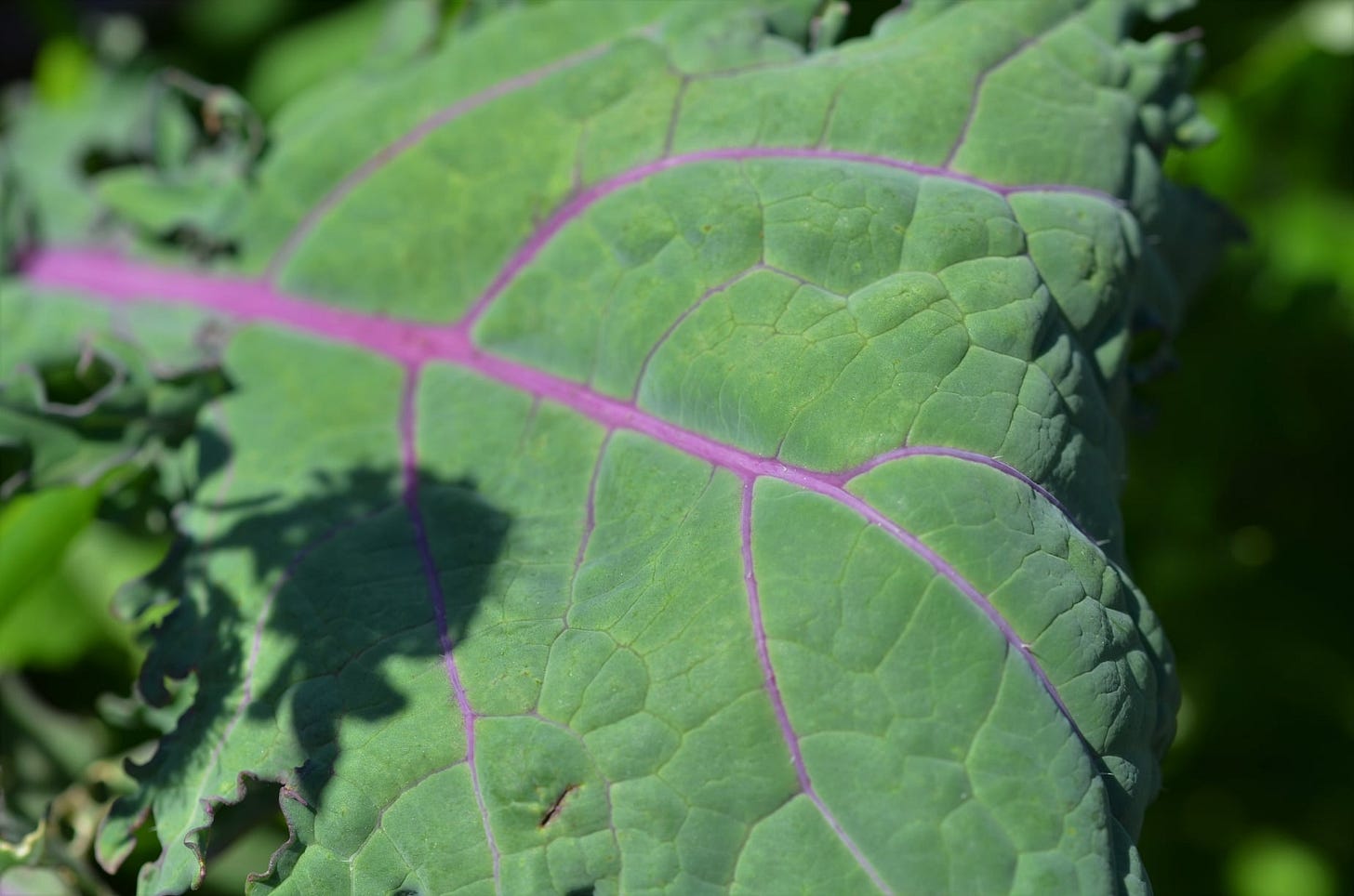
Being a good source of folate (folic acid), contribute to healthy sperm production and overall male fertility by supporting cell division and DNA synthesis.
We all know that eating our greens is important for our overall health, but when it comes to male fertility – it’s crucial.
Dark, leafy greens like spinach and kale are some of the best foods for male fertility. They’re bursting with essential nutrients for healthy conception – including folate. Folate (aka folic acid) is well known to help reduce the risk of birth defects when women take it before or during pregnancy. However it can also help improve sperm production – leading to faster, healthier swimmers – and more of them!
Ginseng
Ginseng species nourish and tone the male reproductive system. As adaptogens, ginseng species help the body resist the effects of stress, increasing energy and decreasing fatigue. There is evidence that suggests Asian Panax ginseng supports normal sperm count. Ginseng combinations like Chinese red ginseng and American ginseng are great for optimum male fertility.
This hearty root is considered to be one of the best male sexual tonics. Clinical observation has shown American ginseng to support healthy libido, erectile dysfunction and enhance male sexual performance.
American ginseng provides gentle, deep, nourishing support to the nervous system. American ginseng has been found to provide excellent immune system support and strengthens the HPA (hypothalamus-pituitary-adrenal) axis, according to Ethnobotonist and Registered Herbalist David Winston in Adaptogens: herbs for strength, stamina, and stress relief. The HPA axis is vital to proper hormonal balance, stress management, and immune system strength.
Benefits of American ginseng:
Supports sex drive and sexual performance through increased stamina.
Supportive of healthy stress response, aiding in hormonal balance.
Supportive for proper immune system function.
Supports proper digestion for improved absorption and assimilation of nutrients from food, important for overall fertility health.
Goji Berries:
Goji berries/leaves and are a couple great examples of foods/herbs that can help with detox/protecting cells as well as optimizing reproductive function/fertility (and they are both relatively easy to grow in a wide range of climates).
For more information on Goji : https://gavinmounsey.substack.com/p/the-many-gifts-of-the-goji
These berries Enhance Fertility And Sexual Health through multiple vectors.
The Chinese were really the first to explore the benefits of goji berry, specifically goji berry and sex. They were the first to give this powerfully nutritious fruit a reputation as an aphrodisiac. In traditional Chinese applications, the fruit is administered to strengthen the adrenal system, which is believed to be a center of sexual energy.
So highly regarded was this wolfberry benefit in early Chinese medicine that it even found its way into an ancient, Chinese proverb. It warns men who travel away from their lovers: “He who travels one thousand kilometers from home should not eat goji.”
Studies have shown that goji berries can increase testosterone levels in men, thereby improving their sexual health. They can also work as a potential alternative remedy for erectile dysfunction.
How Goji Berries Benefit Male and Female Fertility:
Goji berries have been used to improve male and female fertility for over 2000 years. Packed with antioxidants goji berries are a great way to increase your fertility naturally in both men and women.
They have a number of benefits for the reproductive system including:
Increasing sperm count and strength
Improving sex drive
Improving reproductive hormone function
Benefitting the ovaries
The Antioxidant Effects of Goji Berries for Fertility
One of the major causes of male infertility is oxidative stress. Oxidative stress is caused by molecules known as free radicals attacking and damaging cells. It is thought to be involved in as many as 30–80% of cases of male infertility. Oxidative stress reduces sperm production and function, leading to a decreased chance of natural conception or successful IVF.
Goji berries have also been used to improve the fertility of women, especially those with premature ovarian failure.
Goji berries are known to have powerful antioxidant effects. Antioxidants are chemicals which protect cells from damage due to oxidative stress. Therefore, consuming goji berries on a regular basis could help to improve sperm count and quality, providing numerous benefits for fertility
Pertinent studies and data:
Lycium barbarum polysaccharides: Protective effects.. ..and beneficial effect on sexual behavior and reproductive function..:
https://www.sciencedirect.com/science/article/abs/pii/S0024320506001226?via%3Dihub
Effect of Goji Berry (Lycium barbarum) Supplementation on Reproductive Performance..:
https://www.ncbi.nlm.nih.gov/pmc/articles/PMC8227310/
Ginger:
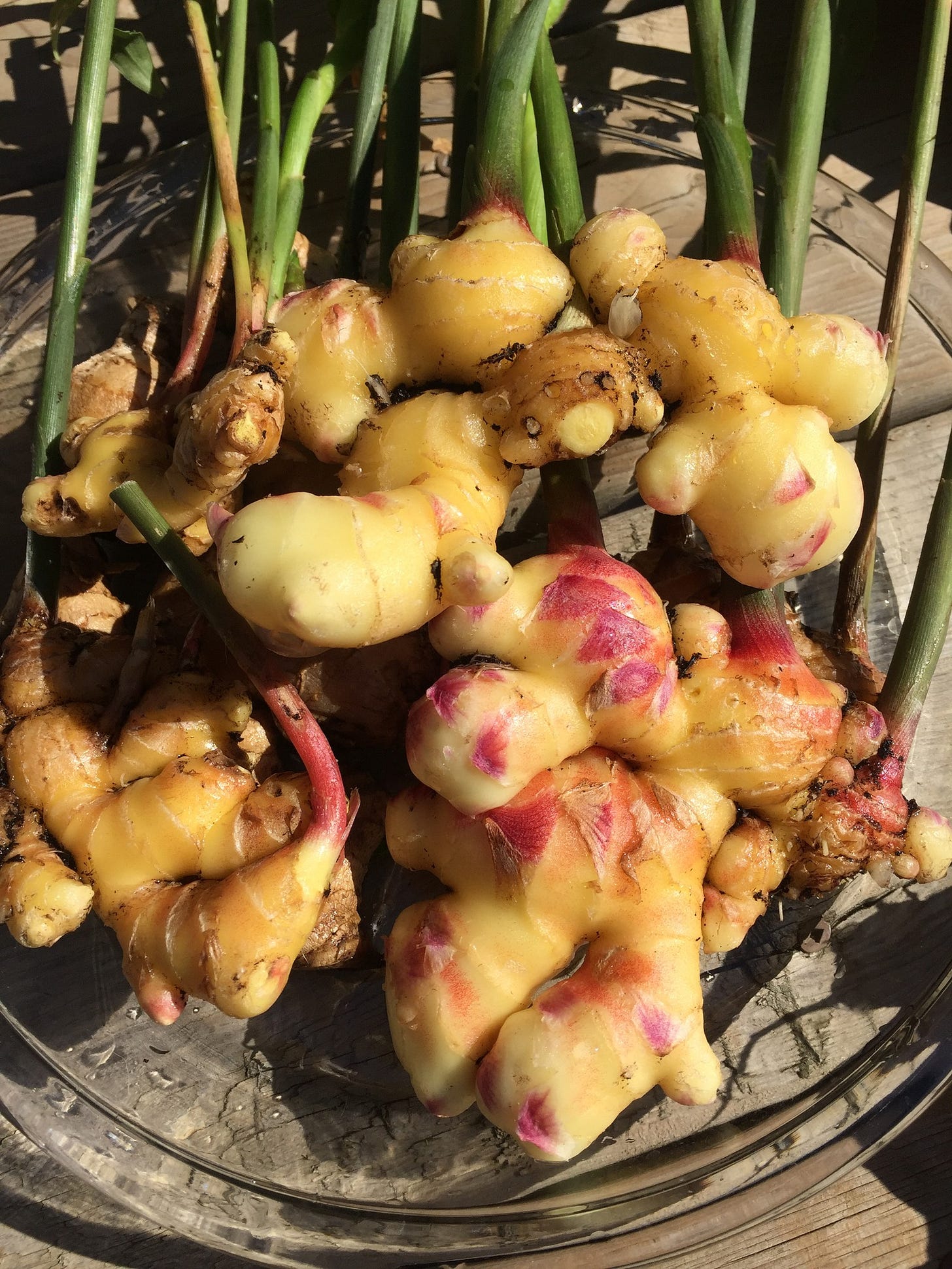
Ginger Protects the DNA: Ginger protected sperm DNA against oxidative damage in a study of 100 infertile men. All men took 500 mg of ginger powder daily for 3 months, after which their sperm DNA quality greatly increased. Ginger’s DNA-protective effects are not important only for fertility. Ginger essential oil also reduced DNA damage from a mold toxin (aflatoxin B1) in cells.
Ashwagandha:
This ancient herb, renowned for its stress-reducing properties, also supports reproductive health. Ashwagandha aids in balancing hormones and improving sperm quality, making it a key component for both male and female fertility.
Human studies proved that royal jelly has a beneficial effect on sperm count and motility and improves the fertilizing ability of male gametes.
Pine pollen contains all four major androgen (male sex) hormones, androstenedione, testosterone, dehydroepiandrosterone (DHEA), and androsterone (Danuše, 2019). Because androgen hormones are present in pine pollen, once digested or absorbed, pine pollen raises testosterone levels almost immediately (Wong, 2019).
Hickory Nuts, Walnuts or Brazil Nuts
Hickory nuts and Walnuts: These are known as a fertility superfood! Rich in omega-3 fatty acids, they reduce inflammation and regulate your hormones. Plus, they contain magnesium and antioxidants, crucial for hormones and egg and sperm health. Regular walnut consumption is linked to improved sperm quality, motility, and morphology.
Brazil nuts: Brazil nuts are packed with selenium, a mineral essential for thyroid and hormone health. Selenium prevents cell damage in eggs and sperm, boosting fertility. One ounce of Brazil nut provides almost 1000% of your daily selenium needs. Wow! Additionally, Brazil nuts offer healthy fats and zinc, which are vital for hormone balance, egg development, and sperm production.
Leafy Greens:
Why It Matters: Leafy greens like spinach and kale pack a punch of folic acid, essential for healthy sperm production and reducing the risk of genetic abnormalities.
What to Eat: Incorporate spinach, kale, Swiss chard, and arugula into your meals.
Colorful Fruits:
Why It Matters: Fruits like berries and citrus fruits burst with antioxidants, particularly vitamin C, which helps protect sperm from damage and improve motility.
What to Eat: Enjoy a variety of blueberries, elderberry, goji berry, strawberries, oranges, and kiwis.
Healthy Whole Herb Choices for Male Fertility:
Ginkgo biloba
is a key herb to revitalize circulation and improve erectile function. When a man’s circulation is normalized, well-being is increased, and healthy sexuality and fertility are enhanced.
Ginkgo can dilate blood vessels and improve blood circulation to all the parts of the body, including the genitals, which eventually helps improve reproductive health. It improves sexual health by increasing libido. It has positive effects on maintaining the hormonal balance through proper serotonin levels, thereby decreasing the reasons that cause erectile dysfunction. However, it may have some side effects, including GI distress and headaches, according to the research, so take cautiously for these purposes. [16]
Ginkgo biloba protects against testicular damage and oxidative stress:
https://scialert.net/fulltext/?doi=ijp.2016.340.350
Ginkgo biloba increases testicular mitochondrial NAD+ significantly:
https://www.ncbi.nlm.nih.gov/pmc/articles/PMC5215564/
Ginkgo biloba for sexual dysfunction:
https://pubmed.ncbi.nlm.nih.gov/9611693/
Schisandra chinensis (aka Five Flavor Fruit):
Schisandra (Schisandra chinensis) has been revered for thousands of years as one of 50 “fundamental herbs” in Traditional Chinese Medicine (TCM) because of its adaptogen and tonic effects on the body–effects that prove beneficial for male and female fertility health.
The TCM text titled the Divine Husbandman’s Classic of the Materia Medica, that dates back to the first century BC, was the first to outline the health benefits of Schisandra berries and seeds. Schisandra contains large amounts of lignans, volatile oils, glycosides and organic acids. Each active constituent works together as a whole to offer this herb’s medicine.
Breakdown and Detoxify the Body of Excess Estrogen:
The primary active constituents in Schisandra are lignans. Lignans are a type of phytoestrogen that are found in a variety of plant foods. Bacteria in the human intestines convert lignans to lignan precursors which are known to have weak, but beneficial estrogenic activity within the body. These lignan precursors and the plant’s fiber attach to excess estrogen so it can be removed via the body’s systems of elimination.
Schisandra chinensis or Wu Wei Zi, is traditionally used in Chinese medicine and some studies suggest it positivelys impact fertility, including improving sperm count, motility, and morphology, as well as potentially regulating hormones and addressing conditions like hyperprolactinemia.
Cordyceps mushrooms ( Cordyceps militaris and Cordyceps sinensis):
Cordyceps has been shown to enhance male sexual function, enhancing sperm production and motility.
Cordyceps has been revered across the ages in traditional Chinese medicine as a tonic to restore vigour, enhance sexual function and boost fertility. Modern studies have begun to shed light on the practices that traditional wisdom has laid forth, revealing Cordyceps' potential to naturally stimulate libido and support reproductive health.
Several studies uncovered that Cordyceps Militaris has the capacity to increase sexual appetite and sexual performance in both women and men[1]. Additionally, research has confirmed that Cordyceps mushroom can also increase testosterone levels in men and improve sperm quality[2], both key factors in successful conception and a healthy pregnancy!
Tribulus fruit (Tribulus terrestris)
Strengthens the male reproductive system, and improves both sperm count and motility. Additionally, early Bulgarian research shows Tribulus may be a helpful herb for recovery from varicocele (varicose vein within spermatic cord), a common cause of male infertility.
Tribulus is very effective in improving sperm count, motility, and morphology when combined with dietary and exercise changes.
The main part of Tribulus that aids in fertility for men is a constituent called protodioscin. This constituent improves DHEA levels in the male body. In men with ED, it has been found they have low levels of DHEA. Some studies have shown that Tribulus, increases natural DHEA levels needed for proper erection. Protodioscin is also the main constituent that is responsible for Tribulus’ aphrodisiac qualities. Increase in sexual desire when using this plant has been reported by both men and women.
A Bulgarian study performed in 1998, published at Harvard.edu, showed a 61% increase in conception for couples with antisperm antibodies (immune system attacks sperm cell), who were taking Tribulus. The average time it took couples to conceive after treatment was 5 months.
Benefits of Tribulus:
Shown to increase in sex hormone production in both men and women.
Supports LH and testosterone production in men.
Helps to increase in sperm count, motility, and health.
Decreases the effects of antisperm antibodies.
Improves DHEA levels to treat erectile dysfunction.
Fo-ti, also known as Ho Shou Wu or He Shou Wu, root (Polygonum multiflorum):
Traditionally used for men who have low libido, low sperm count, erectile dysfunction, and poor sperm motility, Fo-ti supports fertility longevity.
Saw Palmetto berry (Serenoa repens)
Saw Palmetto is nourishing to the entire endocrine system, which helps improve overall reproductive function in men. Men with high stress, poor immune function, poor lifestyle, and dietary habits have shown to respond well to this herb. This plant is classified as an adaptogen and is antiandrogenic, anti-inflammatory, a demulcent, a urinary antiseptic, and an immune amphoteric. Saw Palmetto is also a reproductive amphoteric. Which means it normalizes reproductive function.
Saw Palmetto is deeply nourishing to the body when taken for many months consistently. Consistent use of this herb has been shown to bring about the greatest long-term health benefits.
Benefits of Saw Palmetto:
Helps increase low sperm count
Supports stress and immune system response to treat chronic fatigue
Helps improve libido
Deeply nourishing to the body for long-term support
Maca Root (Lepidium meyenii)
Often called “the herbal Viagra,” is excellent as an endurance and libido enhancer. Modern Maca research reveals animals with low testosterone given maca experience a significant improvement in sexual activity.
One of maca’s main actions is to stimulate and nourish the hypothalamus which regulates the pituitary gland, acting as a tonic for the hormone system. When the pituitary gland functions optimally, the entire endocrine system becomes balanced, because the pituitary gland controls the hormone output of the other three glands.
In a small, clinical, human 2001 study in the Asian Journal of Andrology, 9 men who were given gelatinized maca for 4 months at 1,500 – 3,000 mg a day, and the men who took it experienced an increase in libido, sperm count, motility of sperm, increased DHEA levels, decreased anxiety and stress, lowered blood pressure, balanced iron levels, and an increase in adrenal androgens.
Benefits of maca:
Supports hormonal balance
Increases energy, stamina, and mental clarity
Supports the thyroid
Supports normal sexual function
——————-
Enhancing Nutrient Absorption for Optimal Fertility
You can eat the most nutrient-dense foods, but if your body isn’t absorbing them properly, you’re still at a deficit. Gut health plays a major role in fertility because a well-functioning digestive system ensures you absorb key nutrients like folate, zinc, and omega-3 fatty acids—all essential for egg and sperm quality.
Chronic inflammation in the gut, caused by processed foods (often contaminated with glyphosate), high sugar intake, can lead to poor absorption and micronutrient deficiencies. Supporting digestion with whole, anti-inflammatory foods and gut-healing practices (like baby making miso soup or bone broth and probiotic fermented foods) creates the right environment for conception.
More info on Healthy Herbs for Male Fertility:
More info on Supporting Female Fertility with Herbs
Female infertility and herbal medicine: An overview of the new findings:
https://www.ncbi.nlm.nih.gov/pmc/articles/PMC8498057/
Clearing up the Confusion on Phytoestrogens:
https://natural-fertility-info.com/phytoestrogens-hormones.html
A Plant Based Guide For Healthier Periods & Reproductive Health:
Non-Dietary Stimulus that enhances fertility:
Our reproductive health is influenced by more than just food and a lack or presence of toxins in the body. Life style choices and even perspectives can also directly impact fertility. Here are some non-dietary forms of stimulus that enhance fertility rates for both makes and females.
-Moderate Exercise
Moderate exercise is safe and can even be beneficial for fertility, improving ovulation and hormone balance, especially for women with PCOS.
Moderate exercise can positively impact male fertility by improving sperm quality, count, and motility, as well as regulating reproductive hormones and reducing oxidative stress.
-Spending time in the forest
Forest bathing, also known as "shinrin-yoku" in Japanese, involves immersing yourself in nature to reap its health benefits, and one of the key reasons is that forests generally have higher oxygen levels and are rich in phytoncides (natural oils released by trees) that can boost the immune system, mitochondrial health (which enhances sperm and egg production) and reduce stress (which can cause pregnancy complications).
In recent years, the practice of mindfulness meditation has gained popularity for its ability to reduce stress and increase overall well-being. However, what many people may not realize is that mindfulness meditation can also have a profound effect on the ability to conceive a child.
Studies have shown that practicing mindfulness can improve fertility, both in women and men, by reducing stress and increasing relaxation.
In recent studies, it has been found that practicing mindfulness meditation can increase the production of the DHEA hormone . People who practice meditation would also have a DHEA rate 43% higher than those who do not practice! This hormone is essential for fertility in both men and women, as it helps to maintain a healthy ovulation cycle and increases the vitality of eggs. So, by practicing mindfulness meditation regularly, women can potentially improve their chances of getting pregnant. Additionally, those who have struggled with fertility issues may also benefit from the boost in DHEA levels that meditation provides. So not only can mindfulness meditation benefit overall health and well-being, it can also aid in the journey towards starting a family.
For more info on the many health benefits of meditation, read:
Fertility Friendly and Fertility Enhancing Recipes:
These recipes contain many ingredients that help to optimize both female and male fertility:
Thai Roasted Sweet Potato, Carrot and Ginger Soup
One of our favorite ways to enjoy several of our best producing crops (ginger, carrots, cilantro, sweet potato and chili peppers) is Thai Sweet Potato Soup. Typically, around mid winter we use the last of our stored carrots, sweet potatoes, ginger (and many other ingredients) to make a huge batch of this super nutritious, warming, delicious and inviting…
Jeweled Tabbouleh with Ancient Grains and North African Spices
·This salad is a refreshing way to enjoy many nourishing and innate immune system optimizing whole foods into a vibrant and delicious meal.
30 Reasons To Make Your Own Sauerkraut and Include a Daily Forkful In Your Diet (and a basic recipe from my book to make your own at home).
·Preserved cabbage looks simple (and the process to make raw cabbage i…
Garden Minestrone Soup
·I have always loved minestrone soup over since my childhood as my mom was a great soup maker. When her homemade version was not available I would go to the grocery store to try and find a facsimile but it was never the same. Thus, minestrone was one of the very first soups I taught myself to make in my youth and I have been improving on my recipe ever s…
Cream of Pine and Mushroom Soup (essence of the northern food forest in a bowl)
·(This post serves as the 22nd post which is part of the Stacking Functions in the Garden, Food Forest and Medicine Cabinet : The Regenerative Way From Seed To Apothecary series).
Sprouted Black Bean Burgers
·Even if your not vegetarian these burgers are worth the effort and can put ‘many a meat patty’ to shame in the flavor department. That plus the bonus of easy of storage/re-heating makes these bad boys a win win for any burger lover.
Wild Rice / Amarnath Seed Dosa Batter and Purple Pakoras
·I created a fermented wild rice, lentil and amaranth batter (which was originally intended to be used for making a kind of Indian flat bread called Dosa) but ended up experimenting and discovering some other amazing uses for the batter (which I now like even …
Five Bean Spring Chili with Ramps, Nettles and Sautéed Morels
·I recently used some spring harvests of Ramps, Nettles, Garlic Mustard, Goji leaves/shoots, Morels and combined it with dried beans, frozen garden tomatoes as well as Goji Berries, freeze dried garden peppers, some fermented fire roasted hot peppers and dried spices/herbs from our 2023 harvests (with some wild rice and
Popped Amaranth Triple Berry Banana Bread
·This Super Nutritious and delicious Banana bread is made with Mayan superfoods, ca…
Vegetable Borscht
·This stuff is a powerhouse for nutrition and tastes amazing. Roasting the beets with skins on preserves their juicy flavors and mineral content. Grating them into the soup after cooking/cooling makes this one easy to construct. Pan frying the wild rice prior to adding to the soup splits them open as they cook adding a nice meaty texture. The shiitake mu…
The 5 Grain Bibim-Buddha Bowl
·This "Buddha Bowl" type dish has a main theme of Korean flavors but this meal is also a passport and an invitation to embark upon a pilgrimage with your senses to visit several different cultures. It includes region specific ingredients that…
https://fertility-nutritionist.com/resource-center/?e-filter-80c4c32-category=recipes
Addressing the misanthropic over-population propaganda:
All the metrics we have show that fertility is plummeting worldwide. Propagandists that want to frame that trend in a positive or benign light will tell you that is “driven by factors like increased access to education and employment for women, changing societal norms, and rising costs of raising children” but that story neglects to give you the full picture.
In reality, there has been a concerted effort on the part of some eugenicists to actively poison the population on a massive scale (using a range of different vectors of attack) with the express intent of lowering fertility rates and those involuntary eugenics operations are exacerbated by the trend of industrial pollutants of modern civilization finding their way into our water, food and homes through apathetic corporations being driven by profits and not really caring whether their customers live or die.
Globally, fertility rates are declining, with many countries now below the replacement level of 2.1 children per woman, meaning populations are not replacing themselves.
The global TFR has more than halved over the past 70 years, and plummeted exponentially in the last 4 years especially.
If you’re a Millennial or a younger Gen Xer, you’ll probably see the start of a long-term decline in human population due to the global collapse in fertility. That’s something that’s never happened before with Homo sapiens.
Global fertility isn't just declining, it's collapsing.
“There are any number of maps . . .
Source: visualcapitalist.com
and graphs . . .
Source: ourworldindata.org
and infographics . . .
Source: imf.org
. . . that document this phenomenon, but the numbers speak for themselves.” - James Corbett, from this article)
A few recent headlines to set the mood:
“U.S. Population Growth Continues Slow Recovery From Pandemic” - WSJ
“China Told Women to Have Babies, but Its Population Shrank Again” - NYT
“Does declining birth rate spell doom for Britain?” - The Week
“France joins list of countries where birth rates are declining” - Semafor
“Is South Korea Disappearing?” - NYT
Other pertinent studies and articles:
“Genealogy of a Controversy: Development of an Anti-Fertility Vaccine”
“Development of immunological methods of fertility regulation” (by the WHO)
“Reports of Women Shedding Uterine Lining Surged in 2021, Research Shows”
“New Lawsuit Alleges Merck’s Gardasil HPV Vaccine Caused Infertility”
“Vaccine Boom, Population Bust: Study Queries the Link Between HPV Vaccine and Soaring Infertility”
Journal Andrology published a peer-reviewed paper showing large decreases in sperm counts among men after the second dose of Pfizer’s mRNA Covid jab.
Study Links Genetically Engineered Corn to Infertility
80% of Americans test positive for infertility-linked chemical (it is found in Cheerios and Quaker products)
Contraceptive Chemicals Found in Top Ten Fast Food Samples
Full lab report for Fast Food Testing. Downloadable PDF of report here: tinyurl.com/5n827dn5
World’s Population to Fall for First Time Since the Black Death
https://archive.is/2s4fv
“Infertility: A Diabolical Agenda”
https://odysee.com/@Belfasteye.com:9/CHD-Films-Presents-%E2%80%94-Infertility-A-Diabolical-Agenda:6
It is a multi-pronged global fertility destroying operation. Injections delivered by big pharma are only one of many means through which they are crippling the fertility of most human beings.
Today, twenty million U.S. men are characterized as semen infertile. Millions more are described as semen sub-fertile. Poor sperm motility (rather than low sperm count) affects about 10% of infertile men.
Thankfully, via proper exercise, hydration, breath work and diet we can render many of the toxins and artificial EMFs that are being weaponized against us inert/harmless once they enter the human body and flushing them out. The injectable genetic weapons are a different story, but they are avoidable.
Also for any of you that are saying “You lying anti-vaxxer! Overpopulation is a big problem and we need to get rid of more dirty polluting cancerous humans to save the Earth!” I will state the following.
Even if our global population is increasing (and all the data I shared above is wrong) why do you choose to internalize the misanthropic propaganda of oligarchs that see you as an expendable peasant?
As I stated in this post, Humans are not born as an inevitable imposition on the biosphere. Our numbers on this planet could be a blessing rather than a curse if we just had the courage dig deep and use our unique gifts to be in service of life.
Instead of internalizing the false idea that portrays humans like a plague or a cancer on the Earth, I advocate we instead use our free will (and the sentience that so many humans covetously claim is unique to our species) to instead choose to define ourselves as co-creators of beauty, abundance and diversity.
Our ancient ancestors have shown us by example that it is possible to become a positive force for impacting nature in a way that honors and nurtures life, rather than defining our selves as takers, users and consumers.
Destruction and degeneration are not inevitable. Humans are not inherently parasitic and extractive as the anti-human globalist propaganda implies.
Humans have the capability of either being takers/consumers (extracting from the Earth but giving nothing back) or givers (living within a web of reciprocal gift exchanges).
Both choices can be observed in individuals in our lives and cultures throughout history.
As Lyla June says in this video clip we can use these human hands to proliferate amazing abundance, becoming an asset to the Earth and making her feel grateful for our presence.
Rather than see the fact that we have billions of humans on the Earth as a problem, see the perceived problem as a solution and opportunity in disguise.
We have billions of hands available to do sacred regenerative works on the Earth right now! What a blessing!
Given all the environmental (pollutants) and anthropogenic (intentional) pressures that exist in the world around us which can hinder fertility, I offer the following list.
What to avoid when trying to start a family
Avoiding and/or protecting oneself against/detoxing fertility harming substances and environmental factors is just as important as the nutritional support side of things. Thus, I have gathered this info so you can both protect natural fertility (while also enhancing/regenerating that innate capacity using the nutritional/herbal info above).
Things that both males and females should avoid when they want to start a family via natural reproduction:
Endocrine Disrupting Compounds
Endocrine-disrupting chemicals (EDCs) can mimic hormones, block their production, and make it difficult for the cells in your body to use the hormones made available to them. Since the 1940s, chemical manufacturing has increased significantly, leading to 84,000 human-made chemicals now in existence. The Endocrine Society estimates that 1,000 or more of these chemicals can be considered endocrine-disrupting chemicals (EDCs) based on their properties.
EDCs are associated1 with female fertility issues such as increased risk of miscarriage, implantation failure, lower quality of sperm and viable eggs, and a shortened number reproductive years. Environmental exposures to EDCs may be linked to uterine fibroids, endometriosis, and polycystic ovary syndrome (PCOS).
Negative effects of EDCs on thyroid function, which can affect ovarian follicle development. While impossible to eliminate all exposure, reducing exposure to environmental chemicals known as EDCs can have a positive impact on hormones and fertility. It would be impossible to avoid them all as some of these compounds are so ubiquitous on Earth now that they are found in ocean, rain and snow samples in Antarctica. These chemicals have been described as “omnipresent”17 (widespread in our environments), considering they're found in the air, food, tap water, household products, toys, furniture, and cosmetics.
Knowledge is power when it comes to endocrine disruptors. By understanding these chemicals and their sources, we can take proactive steps to minimize their impact.
Swapping out plastics you use around the house, such as food containers, with BPA-free plastic, glass or stainless steel is a smart move. Regular vacuuming and dusting can also minimize household dust that can wind up collecting disruptors. Flame retardants, found in many couches, mattresses, and other furniture can accumulate in household dust26. Look for personal care and household products labeled as free from common endocrine disruptors like BPA, phthalates, and parabens. This includes items like shampoos, lotions, makeup, soaps, and cleaning products. Opting for disruptor-free products can greatly reduce your daily exposure. Drinking natural spring water (never bottled) or filtered water can help remove contaminants that may disrupt hormonal balance. Additionally, avoiding single-use plastic water bottles not only reduces plastic waste but also decreases your exposure to BPA and phthalates that can leach from the plastic, especially when the bottle is warmed (such as in the sun or in a hot car) and reused many times. Switch to food storage containers, pots, and pans that are made from glass, stainless steel, or ceramic cookware. Try to avoid using plastic containers, and be sure to avoid microwaving food in plastic as heat can cause harmful chemicals to leach into your food.
Avoid non-stick products:
Switch out non-stick cookware that often contains PFOA or similar substances for steel, ceramic, or cast iron cookware instead.
For more info on EDCs : https://pmc.ncbi.nlm.nih.gov/articles/PMC8632730/
Vaccines
(many of which are filled with heavy metals, including but not limited to Aluminium, and other ingredients that can damage fertility). While all of the main ones on the market likely deleteriously impact fertility, the following specific vaccines have been studied for their specific fertility damaging effects:
-Whole Cell Pertussis Vaccines
-hCG Vaccines
-The HPV Vaccine
-The Anthrax Vaccine
-The Porcine zona pellucida contraceptive vaccine.
mRNA Genetic Injections
(despite aggressive propaganda campaigns intended to convince you otherwise, these are not the same as conventional vaccines, but rather are gene based injections that contaminate the genome of the victim receiving the injection).
A Freedom of Information request alongside an in-depth dive into the only pregnancy/fertility study performed on the Pfizer Covid-19 injection has revealed that Medicine Regulators and Pfizer chose to publicly cover-up alarming abnormalities of the developing foetus and falsely downgraded the actual risk of Covid-19 vaccination during pregnancy by suppressing documented findings of the clinical data.
These decisions led to medical professionals, who are far too trusting of Medicine Regulators, to wrongly inform pregnant women that the Covid-19 injections are perfectly safe during pregnancy, leading to many pregnant women feeling pressured to get vaccinated.
As of 2022, this fraud and deception had already caused at least 4,113 foetal deaths due to Covid-19 vaccination in the USA alone (this number is inevitably exponentially higher now), and a further study shows Covid-19 vaccination actually increases the risk of suffering a miscarriage by at least 1,517%.
Pesticides
(The prolonged decline in male fertility in the form of sperm concentrations has been shown to be connected to the use of pesticides. Eating fruits and vegetables with high amounts of pesticide residue—such as strawberries, spinach, peppers, or grapes—can also reduce women’s chances of conceiving and bearing children.)
Pesticides and Male Fertility:
Sperm Quality:
Studies show that pesticide exposure can negatively affect sperm quality, including sperm concentration, motility, and morphology.
Sperm Counts:
Research consistently demonstrates that exposure to pesticides can lead to a decline in sperm quality and a reduction in sperm counts.
Endocrine Disruption:
Some pesticides act as endocrine-disrupting chemicals (EDCs), interfering with the normal function of hormones that regulate the reproductive system.
Pesticides and Female Fertility:
Reduced Fecundability:
Some studies suggest that pesticide exposure can lead to reduced fecundability (the ability to conceive) in women.
Increased Time to Pregnancy:
Women exposed to pesticides experience a longer time to pregnancy.
Infertility Conditions:
Pesticide exposure has been linked to an increased risk of certain female infertility conditions, such as premature ovarian failure (POF), polycystic ovary syndrome (PCOS), and endometriosis.
Spontaneous Miscarriage:
Some studies have observed an increased risk of spontaneous miscarriage in women exposed to pesticides, particularly in female agricultural workers.
Dietary Pesticide Exposure:
Consuming fruits and vegetables with high pesticide residues are associated with lower probabilities of pregnancy and live birth.
Herbicides
(some of which, such as glyphosate, are also endocrine disruptors)
Fungicides
(Some fungicides are known to disrupt the endocrine system and may lead to reproductive and developmental abnormalities)
Aluminium
(aluminum exposure negatively impacts female fertility through disrupting hormones and male fertility, via leading to reduced sperm count and quality, and decreased testosterone levels. The EPA found that North American adults consume between 9-30mg of aluminum in food daily when the average amount (from natural sources) should be less than 5 mg. Aluminum has a long history of being known as a neurotoxin. While the influential government health organizations in Canada and the United States have slacked on studying the health effects of this chemical, Europe has banned various ingredients containing aluminum. Artificial coloring agents are high in aluminium. These lake dyes are shown to contain especially harmful quantities:
Red #40 (Allura Red)
Yellow #5 (Tartrazine)
Yellow #6 (Sunset Yellow)
It’s a common ingredient, and many product groups haven’t figured out how to (or just do not care enough to) replace this metal preservative (for example, in baby formula).
Aluminum is found in “health” products including antacids, buffered aspirin, antiperspirants and some vaccines. Aluminum can come in the form of what are called “compounds”. This means that this element is often paired off with other active ingredients in your products. For example, if you use traditional antiperspirant, we bet that you’ll find something along the lines of “aluminum zirconium tetrachlorohydrex GLY” on the back of it. Aluminum derivatives can be found in cosmetics as well, We’re talking lipstick, blush, and almost any other make up product. Chocolate-flavored beverages, like hot chocolate and certain dairy products, may contain added aluminum, according to Kylie Gearhart, RD. Firming agents in pickled foods, baking powder, biscuits, tarts, cereal, rice milk and non-organic olive oil (among other foods) can also contain elevated levels of aluminum.
Also avoid aluminium laced sunscreen,
Cooking foods in aluminum pots or pans can cause small, trace amounts of aluminum to leach into the food you're preparing, according to the ATSDR. This can expose people to higher amounts of aluminum than using cookware made of glass or stainless steel.
Alcohol
(Alcohol consumption, even in small amounts, can negatively impact fertility in both men and women, potentially making it harder to conceive and increasing the risk of complications during pregnancy.)
Xenoestrogens
Some of the most common xenoestrogens in addition to atrazine (and some other herbicides) include:
-Birth control pills, which are designed to not break down and thus cycle back into the water supply (this is a common problem in areas that reuse waste water, particularly China, where oral contraceptives are widely used).
-Processed and unfermented Soy (excluding fermented forms like in Miso, Tempeh or Natto), is a food that comprises a significant portion of the food supply.
-Bisphenol A and S found in many plastics, which constantly contact our bodies and food.
-Phalates (also found in many plastics, including IV supplies used in industrial medical practices)
-Parabens (these are uses for fragrances in many cosmetic products).
-DDT and PCBs are highly dangerous mutagenic chemicals. Despite their known toxicity (Monsanto, the initial PCB producer, saw within three years 23 of their 24 researchers develop disfigured faces) it took decades, and in some cases almost a century of activism, to remove them from the market.
Smoking
(whether it is cigarettes or cannabis, inhaling large amounts of smoke is damaging regardless)
Stress
(chronic or extreme stress can negatively impact fertility by disrupting hormones, affecting ovulation, and potentially leading to anovulation or other reproductive issues.)
Stevia
(and other “Non-caloric Sweeteners” and/or artificial sweeteners like aspartame). Thanks again for the heads up on Stevia
Processed meats
High intensities of artificial EMFs (from devices such as “Smart Meters”, 5G internet routers, smart phones pressed against your body all day and Starlink receiver dishes)
Sleep Deprivation and late night blue light smart device screen exposure.
Being plugged into devices all hours of the nights with glowing screens beaming artificial light in your face interrupts your Circadian rhythm and this can have cumulative deleterious impacts on fertility for both men and women.
We know it's bad to stare at smartphone or tablet screens at night, but these habits can mess with more than just your sleep cycle. According to research published in the journal Fertility and Sterility, artificial nighttime light exposure can harm both your ability to conceive and fetal development if you're already pregnant. Late-night light exposure can suppress melatonin production, the "sleep hormone," that's also produced in the reproductive tract and blocks eggs from damaging free radicals, particularly during ovulation. Insufficient melatonin production can also disrupt a developing fetus' internal clock, resulting in long-term problems, researchers suggest.
Skin care products that contain retinol and Accutane, as well as GLP-1 agonists.
Big Pharma drugs
(There are certain medications, particularly certain antidepressants and mood stabilizers, that can affect your ability to conceive by making your body produce more prolactin, a hormone that interferes with ovulation.)
Processed foods
Especially those with high carbohydrates and processed sugars
Sugar-sweetened beverages
(such as soda pop)
Mercury-rich fish
(types of fish which tend to be high in mercury are those that live longer, or are predatory and therefore consume higher levels of mercury by eating other fish, such as Tuna, shark, marlin and swordfish).
Excessive Coffee
(or any other high caffeine beverage)
Water-Based Lubricants
(especially those containing ingredients like glycerin or parabens, can negatively impact sperm motility and viability.)
Excessive Exercise—or Being Sedentary
(at least 30 minutes of moderate to vigorous exercise most days of the week offers a net positive to female and male fertility. Excessive exercise, particularly high-intensity workouts or more than 7 hours of aerobic exercise per week, can negatively impact ovulation and menstrual regularity, potentially increasing the risk of infertility. In males, excessive or strenuous exercise can negatively affect sperm quality and potentially lead to infertility by causing hormonal imbalances and increased oxidative stress.
For more info on how much is too much exercise, read this and this.
Psychological toxins:
While avoiding the physical toxins that directly damage the human reproductive system (listed above) is a great step in the right direction, there are also non-physical toxins that are weaponized against us which end up damaging fertility and lowering birth rates in the long run.
These toxins damage the landscape and ecosystem of the heart and mind, sending out ripple effects into both our bodies and the world around us through the systems these mind viruses and mind toxins train us to promote and support.
Below are a few psychological toxins that I suggest avoiding if you want to start a healthy family and ensure that future generations will be able to as well.
Pornography
Pornography use is associated with lower sperm concentration, total sperm count, and certain hormone levels impacting fertility.
Studies have found that earlier pornography use was associated with lower levels of serum prolactin (PRL), follicle-stimulating hormone (FSH), and progesterone (Prog), as well as lower sperm concentration and total sperm count. Follicle-stimulating hormone (FSH) is crucial for female fertility, as it regulates the menstrual cycle and stimulates egg development in the ovaries, preparing them for ovulation.
Researchers speculate that this link between pornography addiction and lower male as well as female fertility rates is not so much related to the physical action of masturbation but rather due to psychological impacts that manifest themselves into deleterious biological impacts.
Pornography also destroys human drive. Compared to pulling out one’s phone and watching titillating videos, taking a person out and having a conversation is difficult and uninteresting. Compared to the easy pleasure of pornography, the lasting pleasure of a happy marriage is perceived as relatively pointless to the porn addict. Compared to the stress-free satisfaction of virtual sex, the hard-won satisfaction of raising children is seen as unrealistic.
It also impacts couples, as it rejects the notions of consent, monogamy, stability and occults the profound connection of sexuality with the dignity of human procreation.[3]
“pornography is a neurological weapon rewiring the brains of an entire generation of men in ways neurologically indistinguishable from severe drug addiction”
- James Corbett (from Remote Amazon Tribe Gets Internet Access . . . You ALREADY KNOW What Happens Next!)
However, besides acknowledging the harm that pornography inflicts on the interpersonal relationships, few people consider pornography’s effect on the community, as for example the impact of pornography on demography and the decrease in birth rate.
Subtle effects of porn consumption such as a reluctance to commit to a relationship will thus multiply into entire generations unwilling to enter or stay into stable relationships based on fidelity and monogamy. Since a stable relationship is one of the first basis to start a family, porn consumption thus impacts the wish to have children. Porn consumption is linked with the decrease of fertility in Europe as it dissuades adults from committing in a relationship and taking on the responsibility of having a child.
It promotes a society of instant enjoyment and comfort rather than a society that generates life and accepts the joyful responsibility of caring for children, who are the treasure for a dynamic and healthy society. As stated by Auguste Meyrat, pornography “has effectively sterilized whole generations of men who now lack the initiative to marry and have children”. (source)
Considering all of these deleterious impacts on psychology and biology, whether one wants to start a family or not I think it would be wise to engage in “Eye-Bouncing” (to use a term from James Corbett’s Solutions Watch Series) when it comes to pornography. This is especially so if one wants to have a healthy relationship, marriage and start a family.
- Anti-Human/ Misanthropic propaganda
This form of psychological toxin attempts to condition you to see humans as inherently degenerative and as a “disease” or “cancer” on the Earth. This artificially maintained state of self-loathing and self-destructive thinking leads to the ultra-slow motion mutli-generational form of suicide that is depopulation through feeling guilty or fearful about having a child.
- Anti-Nature/ Ecocidal and Anthropocentric propaganda and belief systems
This form of psychological toxin attempts to condition you to see the living Earth and all our fellow non-human community members as nothing more than a collection of “resources” which we are entitled to extract, exploit, and convert into profitable commodities, disposable superficial sources of pleasure/comfort and city building materials. This artificially maintained state of hubris, extractivism, self-entitlement, accelerationism, exceptionalism, imperialism and exploitative thinking leads to one internalizing ego-flattering propaganda narratives based in delusions of grenduer. That results in a diminishing of the beauty of Creation and concurrently degrades the health of our offspring.
This simultaneously results in lowering fertility rates as it encourages more aspects of nature which we depend on to remain healthy (water, oxygen, soil ect.) to be contaminated and/or diminished as the juggernaut of industrial civilization (and it’s corporation dominated governments) convert old growth forest, rivers, wetlands, ocean habitat, living soil, and biodiverse mountain habitat into chemical dependant monocultures, uniform disposal/plastic products, toxic waste dumps, strip malls, deserts and reduce these facets of the living Earth into the raw materials for building “smart cities”, transhumanist tech infrastructure, autonomous weapons systems and walmarts leaving a trail of EDCs, other fertility damaging toxins and nutritionally depleted soil in its wake. This trend is promoted by the transhumanists, techno-optimists, corporate profiteers and apathetic self-important demographics.
As
pointed out in a conversation with James Corbett people that wake up to the globalist anti-human eugenics agenda can sometimes become stuck in yet another mind trap which is become “anti-nature” (supporting exploitative industries that profit GNP and corporations they favor and associating that with “freedom”, while they are simultaneously cheering for industries that are poisoning their bodies).Statism
Through investing oneself in the religion of statism, having faith that a big brother figure is looking out for our well being and feeding into that hyper-centralized corporation dominated racketeering operation, one is vulnerable to their stealth eugenics operations and also is actively (and winningly) funding the pumping of fertility damaging toxins into the environment.
Statist regimes also sometimes engage in tax funded sterilization operations of minority demographics deemed as “subhuman”. Also, As I explored in my essay, Why Involuntary Governance Is Not Compatible With The Permaculture Ethical Compass and as James Corbett has explored in multiple articles and podcasts (including Our Leaders Are Psychopaths and What Is Sustainable Development? among many others) statist regimes tend to not only attract sociopaths and psychopaths into positions of power, but they also actively re-shape the minds of citizens to be more apathetic, sociopathic and psychopathic. This leads to people actively supporting industries like the war racket (which is a massive polluter and fills the water, air and soil with fertility damaging chemicals).
Detoxing Endocrine-disrupting chemicals
They are inevitably already in our bodies and they are everywhere around us, so while mitigating exposure leading up to reproducing is helpful it is wise to take a two pronged approach to both detox while avoiding them where you can.
How to Support Your Natural Detox System
Your body has a detox system that includes the liver, gut, kidneys, lungs, and skin. The liver is the primary organ that neutralizes and prepares environmental toxins and metabolic waste for elimination. Your gut (through bowel movements) and kidneys (through urination) largely contribute to their removal.
Your liver requires specific nutrients to enable it to do its job effectively. By eating a diet that supports both liver and gut health, you are supporting your body in eliminating EDCs.
Exercise & Sweat Regularly
Sweating helps eliminate toxins through your skin, which is a detox organ, plus it generally supports your overall health.
Get regular, moderate exercise:
Aim for regular, moderate exercise, meaning not too little or too much. Choose exercises that you enjoy and that help you destress and feel uplifted. Try jogging, walking outdoors, circuit training, swimming, or dancing for example
Ensure Your Water Supply Is Clean and Clear of Endocrine Disruptors
The water you drink can be a potential source of harmful chemicals, therefore you’ll want to consume the best quality water that you can.
Filter your drinking water:
Using a high-quality water filter can help remove contamination with industrial chemicals, pesticides, and pharmaceuticals.
Replace filters as needed:
It's essential to regularly check and maintain your water filtration system to ensure it effectively filters out these harmful substances.
ased on the scientific studies to-date, there are a number of natural foods/substances that have shown positive results in detoxifying and reducing the toxic effects of glyphosate exposure. Always ensure you are getting at the very least organically grown or grow / forage for it yourself if you want an effective detox.
Foods:
A nutrient-rich diet also supports hormone production and can help keep inflammation and oxidative stress under control.
Get adequate protein and fiber:
Protein provides essential amino acids that are required for liver detoxification, while fiber aids in gut health and can help regulate cholesterol and blood sugar levels, as well as support the microbes that help with estrogen metabolism. Foods high in quality protein and fiber include wild-caught fish, free-range organic eggs, grass-fed meats, legumes, nuts, vegetables, berries, and seeds.
Eat colorful, antioxidant-rich foods:
Including a variety of colorful, antioxidant-rich foods in your diet is key to combating oxidative stress, which can disrupt hormonal balance. Foods rich in antioxidants include berries, leafy greens, cruciferous veggies, citrus fruits, herbs, spices, legumes, tea, and dark chocolate. These support ovarian health, protect against free-radical damage, and provide necessary vitamins and miners to support liver detoxification.
Consume healthy fats:
Make sure to consume enough essential fatty acids, especially omega-3s, monounsaturated fats, and polyunsaturated fats (in moderation). Healthy sources of fats include salmon, sardines, olive oil, avocado, nuts, and seeds.
Other foods that are particularly helpful in detoxing Endocrine Disruptors such as glyphosate:
– Raphanus sativus (Radish)
– Dark Green vegetables
– Probiotic/fermented foods (such as Sauerkraut, kimchi and sauerkraut/kimchi juice)
- Chlorella has a well-documented history of helping remove heavy metals and other toxins like dioxin from the body expeditiously. Its high concentration of chlorophyll and fiber seems to be a big part of its exceptional detox benefits. It’s almost certain, considering the mechanism, that Chlorella (and spirulina) help pull out BPAs and other plastic residue.
Chlorella is a good source of protein, GLA, and phytochemicals, B12, B2, B3, iron, magnesium, Beta Carotene, and a bunch of powerful phytochemicals. Chlorella stimulates the growth of friendly bacteria. Furthermore, chlorella’s cell walls act to absorb toxic compounds within the intestines, restoring proper gastrointestinal pH and helping to promote normal peristalsis. And it is another chelator, as it is also very negatively charged, attracting positively charged molecules.
- Spirulina - Chlorella is green algae, but spirulina is more of a blue-green in color. These two algae have a lot in common. Chlorella’s green hue demonstrates that it’s richer in chlorophyll than spirulina, and chlorella is said to have stronger detoxification properties. But spirulina is an even better source of protein, and it offers iron, B1, B2, B3, B6, B12, calcium, potassium, zinc, and a host of microminerals.
Minerals:
– Sulfur
– Manganese
– Fulvic acid
– Humic acid
and/or a product called “ION Gut Health” (developed by Dr.Zach Bush and his team)
Charcoal and Clay:
– Activated charcoal
– Bentonite clay
Herbs:
– Eleutherococcus senticosus (Siberian Ginseng)
– Taraxacum officinalis (Dandelion)
– Rhamnus frangula (Alder buckthorn)
– Rhodiola rosea (Rhodiola)
– Carduus marianus (Silybum marianum; milk thistle)
– Arctium lappa (Burdock root)
- Schisandra chinensis (Five Flavor Fruit)
– Berberis vulgaris (Barberry; the active ingredient in barberry is berberine)
– Chelidonium majus (Greater celandine)
– Withania somnifera (Ashwagandha)
A study published in the December 2014 issue of the Journal of Environmental & Analytical Toxicology ( https://www.hilarispublisher.com/open-access/oral-application-of-charcoal-and-humic-acids-influence-selected-gastrointestinal-microbiota-2161-0525.1000256.pdf ) found that the oral application of certain natural substances were able effectively reduce urinary levels of glyphosate. The researchers used a combination of the following substances (also listed above):
-fulvic acids
-humic acids
-activated charcoal
-bentonite clay
-sauerkraut juice
They concluded that a charcoal-sauerkraut juice combination and humic acids reduced glyphosate excretion by urine and led to the improved health.
Another interesting study from October 2010 published in the Journal of Occupational Medicine and Technology ( https://occup-med.biomedcentral.com/articles/10.1186/1745-6673-6-3#Tab1 ) investigated the mechanism of action of liver cells exposed to glyphosate and possible protection by precise medicinal plant extracts.
N-Acetyl-Cysteine (NAC) is an amino acid that supports detoxification pathways through glutathione production. N-Acetyl-Cysteine can be taken in supplement form for liver and detox support. In addition, NAC has been shown to be beneficial in supporting egg and sperm health.
Drs. Joseph Mercola and Stephanie Seneff, PhD, recommend supplementing daily with the amino acid glycine for glyphosate detox.
They describe how (once in the body) the glycine serves to displace the structurally bound glyphosate and reduce its retention / reuse by outnumbering the glyphosate.
𝗙𝗼𝗼𝗱𝘀 𝘁𝗵𝗮𝘁 𝗰𝗼𝗻𝘁𝗮𝗶𝗻 𝗚𝗹𝘆𝗰𝗶𝗻𝗲:
– Spirulina
– Seaweed
– Watercress
– Amaranth (greens and seeds)
– Organic Bone Broth
– Spinach
– Legumes (runner beans, soybeans, peanuts and peanut butter, peas, mung beans, lentils, and kidney beans etc, preferably fermented as miso paste if it is soy beans).
– Organic Gelatin (such as you would use to make jello or gummies)
– Asparagus
– Nuts and seeds (such as pumpkin or squash seeds, hemp seeds, butternuts, walnuts, sunflower seeds, almonds, flax seeds, sesame seeds and chai seeds)
– Cabbage
– Bamboo shoots
– Kale
– Yogurt/ Kefir (from grass fed animals or you`ll get loaded up with glyphosate from their gmo grain feed)
N-acetyl cysteine (NAC) is a supplement form of cysteine.
𝗖𝘆𝘀𝘁𝗲𝗶𝗻𝗲 𝗶𝘀 𝗳𝗼𝘂𝗻𝗱 𝗶𝗻 𝗮 𝗿𝗮𝗻𝗴𝗲 𝗼𝗳 𝗵𝗶𝗴𝗵-𝗽𝗿𝗼𝘁𝗲𝗶𝗻 𝗳𝗼𝗼𝗱𝘀 𝗮𝗻𝗱 𝘀𝗼𝗺𝗲 𝘃𝗲𝗴𝗲𝘁𝗮𝗯𝗹𝗲𝘀/𝗵𝗲𝗿𝗯𝘀, 𝘀𝗼𝗺𝗲 𝗲𝘅𝗮𝗺𝗽𝗹𝗲𝘀 𝗶𝗻𝗰𝗹𝘂𝗱𝗲:
– shiitake mushrooms
– spirulina
– yogurt or cheese (from grass fed animals or you`ll get loaded up with glyphosate from their gmo grain feed)
– eggs (from organically raised chickens)
– sunflower seeds
– organic sourdough bread
– Dates
– Ginseng
– legumes (same story as above, fermented is better, especially with soy beans and obviously watch out for the ones dosed with glyphosate)
– Peppers
– Cabbage
– Garlic
– Onions
– Kale
– Nuts (pecans, cashews, hazelnuts, almonds, and Brazil nuts)
– Seeds (sesame seeds, amaranath seeds, hemp seeds etc)
𝗙𝗼𝗼𝗱𝘀 𝘁𝗵𝗮𝘁 𝗰𝗼𝗻𝘁𝗮𝗶𝗻 𝗚𝗹𝘂𝘁𝗮𝗺𝗶𝗻𝗲:
– Spirulina
– Seaweed (such as dulse, nori or kombu)
– Yogurt and Ricotta Cheese (from grass fed animals or you`ll get loaded up with glyphosate from their gmo grain feed)
– Legumes (same story as above)
– Red cabbage
– organic Eggs
– Nuts
– Parsley
– Dark Leafy Greens (such as amaranth greens, mustard greens, spinach, collard greens, kale, lettuce, radish greens, and cilantro, are good sources of glutamine)
– Organic Bone Broth
– Nuts and seeds (such as cashews, hazelnuts, pistachios, coconut milk, pumpkin or squash seeds, hemp seeds, butternuts, walnuts, sunflower seeds, almonds, flax seeds, brazil nuts, sesame seeds and chai seeds).
For more info on detoxing:
https://natural-fertility-info.com/10-detox-tips.html
Now that we have all we need to plant and nurture metaphorical heirloom seeds and sabotage the depopulation agenda, lets not forget that many of these fertility enhancing foods and herbs can be grown at home! So lets get to planting some literal heirloom seeds in the garden too! Perhaps I will make that number 26 next year! ;)
Well that is all for me today my friends. I hope you find this information to be helpful and empowering if you are someone that is looking to become a mother or father in a natural way.
References:
https://pmc.ncbi.nlm.nih.gov/articles/PMC7291266/
https://greenmedinfo.com/pharmacological-action/fertility-agents
https://www.healthline.com/nutrition/16-fertility-tips-to-get-pregnant
https://www.elite-ivf.com/herbs-for-fertility/
https://www.orientalremediesgroup.com/top-30-foods-you-should-eat-to-boost-your-fertility/
https://natural-fertility-info.com/fertility-herbs
https://www.drlisawatson.com/wp-content/uploads/2011/06/Fertility-Diet.pdf
Meletis, Chris, N.D. & Liz Brown. (2004) Enhancing Fertility. Basic Health Publications.
Leung, K. W., & Wong, A. S. (2013). Ginseng and male reproductive function. Spermatogenesis, 3(3). doi:10.4161/spmg.26391. Retrieved from: https://www.tandfonline.com/doi/abs/10.4161/spmg.26391
https://pmc.ncbi.nlm.nih.gov/articles/PMC5429336/
https://web.archive.org/web/20240518002339/https://fertility-nutritionist.com/thicken-uterine-lining-for-pregnancy/
Fertility Tests for Men: How to Check Fertility in Men. (n.d.). Retrieved from: https://www.webmd.com/infertility-and-reproduction/guide/male-fertility-tests#1
Tierra, Michael, L.Ac., OMD, A.H.G. and Leslie Tierra, L.Ac., A.H.G. (1998) Chinese Traditional Herbal Medicine, Vol. 1 & 2, Lotus Press.
Protich, M., D. Tsvetkov, B. Nalbanski, R. Stanislavov, M. Katsarova. (1981) Clinical trial of Tribestan on infertile males. Scientific-technical Report, Akush Ginekol (Sofiia). 1983;22(4):326-9
https://fertility-nutritionist.com/food-to-increase-progesterone/
Malviya, N., Jain, S., Gupta, V., & Vyas, S. (2011). Recent studies on aphrodisiac herbs for the management of male sexual dysfunction–a review. Acta Poloniae Pharmaceutica Drug Research, 68(1), 3-8. Retrieved from: http://ptfarm.pl/pub/File/Acta_Poloniae/2011/1/003.pdf
https://greenmedinfo.com/article/fertility-outcomes-can-be-improved-melatonin-it-enhances-progesterone-receptor
https://pubmed.ncbi.nlm.nih.gov/28844822/
https://draxe.com/health/natural-infertility-treatment-remedies/
https://jenniferwaters.net/integrative-fertility-tips-ovarian-health/
"Efficacy and tolerability of a standardized extract of Vitex agnus-castus (chaste tree/monks pepper) in the treatment of premenstrual syndrome (PMS): a multicenter, randomized, double-blind, placebo-controlled study." This study was published in the Journal of Women's Health and Gender-Based Medicine in 2003, and it found that a standardized extract of chaste tree berries was effective in reducing symptoms of premenstrual syndrome (PMS) and improving overall quality of life in women with PMS.
"Herbal remedies in gynecology: A review of the scientific evidence." This study, published in the International Journal of Gynecology & Obstetrics in 2010, found that chaste tree berry extract was effective in reducing symptoms of PMS and improving overall menstrual cycle regularity in women.
"The effects of red raspberry leaf on female hormonal balance." This study, published in the Journal of Midwifery & Women's Health in 2002, found that red raspberry leaf may have positive effects on female hormonal balance, including reducing symptoms of PMS and improving overall menstrual cycle regularity.
"An examination of the phytoestrogen content of red raspberry leaf." This study, published in the Journal of Herbal Medicine in 2009, found that red raspberry leaf contains phytoestrogens, compounds that have estrogen-like effects on the body, and may have benefits for female reproductive health.
"The effects of red raspberry leaf on pregnancy and labor: a systematic review." This study, published in the Journal of Midwifery & Women's Health in 2012, found that red raspberry leaf may have positive effects on pregnancy and labor outcomes, including reducing the risk of preterm birth and speeding up labor.
"The effects of nettle on menstrual cycle regularity and symptoms of premenstrual syndrome." This study, published in the Journal of Alternative and Complementary Medicine in 2002, found that nettle may have benefits for menstrual cycle regularity and reducing symptoms of PMS.
"An examination of the phytoestrogen content of nettle." This study, published in the Journal of Herbal Medicine in 2005, found that nettle contains phytoestrogens, compounds that have estrogen-like effects on the body, and may have benefits for female reproductive health.
Barton-Schuster, D., CH, Doula. (n.d.). American Ginseng: Male Fertility Tonic. Retrieved from: http://natural-fertility-info.com/american-ginseng-male-fertility-tonic.html
Winston, D., & Maimes, S. (2007). Adaptogens: herbs for strength, stamina, and stress relief. Rochester, VT: Healing Arts Press.
Barton-Schuster, D., CH, Doula. (n.d.). Tribulus Terrestris: Fertility Herb for Both Men and Women…. Retrieved from: http://natural-fertility-info.com/tribulus-fertility.html
Stanislavov, R., & Nikolova, V. (2000). Tribulus terrestris and human male fertility: I. Immunological Aspects. Comptes Rendus de l’Academie Bulgare des Sciences, 53(10), 107. Retrieved from: http://articles.adsabs.harvard.edu/full/2000crabs..53j.107s/J000107.000.html
Rodriguez, H., C.H., CMT. (n.d.). Maca, Wonder Herb For Fertility…. Retrieved from: http://natural-fertility-info.com/maca
Gonzales, G. F., Cordova, A., Gonzales, C., Chung, A., Vega, K., & Villena, A. (2001). Lepidium meyenii (Maca) improved semen parameters in adult men. Asian Journal of Andrology, 3(4), 301-303. Retrieved from: http://www.asiaandro.com/archive/1008-682X/3/301.htm
Barton-Schuster, D., CH, Doula. (n.d.). Saw Palmetto for Improved Male & Female Fertility. Retrieved from: http://natural-fertility-info.com/saw-palmetto-fertility.html
Tenney, D. (1997). Yohimbe: (Pausinystalia johimbe). Pleasant Grove, UT: Woodland Publishing.
Rafiean-Kopaei M., Movahedi M., Systematic Review of Premenstrual, Postmenstrual and Infertility Disorders of Vitex Agnus Castus. [NCBI] [PubMed]
The Everything Fertility Book: All you need to know about fertility, conception, and a healthy pregnancy published by Simon and Schuster. 2010. [GoogleBooks]
Halder S., Sharma A., A Review of Urtica Dioica L. DOI: 10.20959/wjpps201710-10249. [Research Gate]
O Kennedy D., Little W., Scholey A., Attenuation of laboratory-induced stress in humans after acute administration of Melissa officinalis (Lemon Balm). DOI: 10.1097/01.psy.0000132877.72833.71 [PubMed]
S. Ivancheva, M. Nikolova and R. Tsvetkova, Pharmacological activities and biologically active compounds of Bulgarian medicinal plants. Phytochemistry: Advances in Research, 2006, vol. 37661, pp. 87–103.
Takir S., Altun I.H., Suzgec-Selcuk S., Mat A., Uydes-Dogan B.S., Vasorelaxant and blood pressure lowering effects of alchemilla vulgaris: A comparative study of methanol and aqueous extracts. doi: 10.4103/0973-1296.149733 [NCBI]
Winston, David, and Maimes, Steven. (2007) Adaptogens Herbs for Strength, Stamina, and Stress Relief. Rochester, Vermont: Healing Arts Press
Romm, Aviva, M.D. (2010) Botanical Medicine for Women’s Health. St. Louis, Missouri: Churchill Livingstone
Ali, A. F., & Awadallah, A. (2003). Bee propolis versus placebo in the treatment of infertility associated with minimal or mild endometriosis: a pilot randomized controlled trial. A modern trend. Fertility and Sterility, 80, 32. Retrieved from: https://www.fertstert.org/article/S0015-0282(03)01886-7/fulltext
Stanislavov, R. & Nikolova, V. (2000) Tribulus terrestris and Human Male Fertility: I. Immunological Aspects. Comptes Rendus de l’Academie Bulgare des Sciencesi, vol. 53, p.10:107 (2000). Retrieved from: http://articles.adsabs.harvard.edu/full/2000crabs..53j.107s/J000107.000.html
Mahdi, A.A. , Shukla, K.K., Ahmad, M.K., Rajender, S., Shankhwar, S.N., Singh, V. and Dalela, D. (June 18, 2011) Withania somnifera Improves Semen Quality in Stress-Related Male Fertility. Evid Based Complement Alternat Med. 2011; 2011: 576962. doi: [10.1093/ecam/nep138] Retrieved from http://www.ncbi.nlm.nih.gov/pmc/articles/PMC3136684/
Brooks, J.D., Ward, W.E., Lewis, J.E., Hilditch, J., Nickell, L., et al. (February 2004). Supplementation with flaxseed alters estrogen metabolism in postmenopausal women to a greater extent than does supplementation with an equal amount of soy. The American Journal of Clinical Nutrition, Volume 79, Issue 2, Pages 318–325, https://doi.org/10.1093/ajcn/79.2.318. Retrieved from https://academic.oup.com/ajcn/article/79/2/318/4690098
Wang, J. G., Anderson, R. A., Graham, G. M., Chu, M. C., Sauer, M. V., Guarnaccia, M. M., & Lobo, R. A. (2007). The effect of cinnamon extract on insulin resistance parameters in polycystic ovary syndrome: a pilot study. Fertility and Sterility, 88(1), 240-243. Retrieved online from: http://www.fertstert.org/article/S0015-0282%2806%2904555-9/abstract
Yates, B. (N.d.). SCHISANDRA (Schisandra chinensis) An Overview of the Research and Clinical Indications. Retrieved from https://www.gaiaherbs.com/uploads/A_Research_Review_of_Schisandra-1366989279.pdf
Gonzales GF, Cordova A, Vega K, et al. Effect of Lepidium meyenii (maca) on sexual desire and its absent relationship with serum testosterone levels in adult healthy men. Andrologia. 2002;34:367-72. Retrieved from https://www.ncbi.nlm.nih.gov/pubmed/12472620
Gonzales GF, Córdova A, Vega K, et al. Effect of Lepidium meyenii (maca), a root with aphrodisiac and fertility-enhancing properties, on serum reproductive hormone levels in adult healthy men. J Endocrinol 2003;176:163-8. Retrieved from https://www.ncbi.nlm.nih.gov/pubmed/12525260
Shin, Y. S., Zhao, C., Zhang, L. T., & Park, J. K. (2015). Current Status and Clinical Studies of Oriental Herbs in Sexual Medicine in Korea. The world journal of men’s health, 33(2), 62-72. Retrieved from https://www.ncbi.nlm.nih.gov/pmc/articles/PMC4550598/
Chevallier, Andrew. (1997) The Encyclopedia of Medicinal Plants. New York, New York: DK Publishing
Green, J. (2007). The male herbal: The definitive health care book for men&boys. Berkeley, CA: Crossing Press.
Committee on Herbal Medicinal Products (HMPC). (9 July 2013). Assessment report on Angelica sinensis (Oliv.) Diels, radix. EMA/HMPC/614586/2012. Retrieved from https://www.ema.europa.eu/documents/herbal-report/final-assessment-report-angelica-sinensis-oliv-diels-radix-first-version_en.pdf
Ley, Beth M. Ph.D. (2003). Castor Oil! It’s Healing Properties. BL Publications.
Hobbs, Christopher, L.Ac. (2003) Vitex – The Women’s Herb. Summertown, Tennessee: Healthy Living Publications.
Schaart, E. (2021) No more babies? the hormone-altering chemicals threatening human procreation, POLITICO. Available at: https://www.politico.eu/article/no-more-babies-expert-warns-that-hormone-altering-chemicals-threaten-human-procreation/#:~:text=Sperm%20counts%20are%20set%20to,leading%20scholar%20Shanna%20Swan%20says.&text=There’s%20a%20looming%20solution%20to,leading%20scholar%20of%20reproductive%20health. (Accessed: 17 May 2024).
Salgado, R M et al. “Effect of oral administration of Tribulus terrestris extract on semen quality and body fat index of infertile men.” Andrologia vol. 49,5 (2017): 10.1111/and.12655. doi:10.1111/and.12655
Ambiye, V. R., Langade, D., Dongre, S., Aptikar, P., Kulkarni, M., & Dongre, A. (2013). Clinical Evaluation of the Spermatogenic Activity of the Root Extract of Ashwagandha (Withania somnifera) in Oligospermic Males: A Pilot Study. Evidence-based complementary and alternative medicine : eCAM, 2013, 571420. https://doi.org/10.1155/2013/571420
Jothi, Shankar, et al. “Eurycoma Longifolia: An Overview on the Pharmacological Properties for the Treatment of Common Cancer.” Journal of Public Health in Africa, U.S. National Library of Medicine, 16 Mar. 2023, www.ncbi.nlm.nih.gov/pmc/articles/PMC10365645/. Accessed 18 May 2024.
An Alternative Medicine Study of Herbal Effects on the Penetration of Zona-Free Hamster Oocytes and the Integrity of Sperm Deoxyribonucleic Acid – Sciencedirect, www.sciencedirect.com/science/article/pii/S0015028298004762. Accessed 18 May 2024.
Habbema JD, Collins J, Leridon H, Evers JL, Lunenfeld B, te Velde ER. Towards less confusing terminology in reproductive medicine: a proposal. Hum Reproduc. (2004) 19:1497–501. doi: 10.1093/humrep/deh303
Markiewicz L., Garey J. Adlercreutz H., Gurpide E. (1993) In vitro bioassays of non-steroidal phytoestrogens. Journal of Steroid Biochemistry and Molecular Biology. 45: 5: 399-405. Retrieved from: https://www.sciencedirect.com/science/article/abs/pii/096007609390009L
Hsieh C.Y., Santell R.C., Haslam S.Z., Helferich W.G. (1998) Estrogenic effects of genistein on the growth of estrogen receptor-positive human breast cancer (MCF-7) cells in vitro and in vivo. Cancer Research. 1 58:17 3833-8. Retrieved from: http://cancerres.aacrjournals.org/content/58/17/3833.long
Rabat, M. (July 2002) Plant Estrogens: Natural Hope for Menopause Symptoms, Vegetarian Times.
Tilgner, S. Phytoestrogens.(n.d.) Retrieved from: https://www.planetherbs.com/theory/phytoestrogens.html
Nakaya M., Onda H., Sasaki K., Yukiyoshi A., Tachibana H., Yamada K. (2007 Jan) Effect of royal jelly on bisphenol A-induced proliferation of human breast cancer cells. Bioscience, Biotechnology, Biochemistry. 71(1):253-5. Retrieved from: https://www.jstage.jst.go.jp/article/bbb/71/1/71_60453/_article
Weed, S. (n.d.) Menopausal Years, the Wise Woman Way. Retrieved from: http://www.susunweed.com/Article_Menopausal_Years.htm
Setchell K.K.D., Gosselin S.S.J., Welsh M.M.B., Johnston J.J.O., Balistreri W.W.F., et al. (1987) Dietary estrogens – a probable cause of infertility and liver disease in captive cheetahs. Gastroenterology. 93:225–233. Retrieved from: https://www.gastrojournal.org/article/0016-5085(87)91006-7/pdf?referrer=https%3A%2F%2Fwww.ncbi.nlm.nih.gov%2F
Patisaul, H., Jefferson, W. (2010) The pros and cons phytoestrogens. Frontiers in Neuroendocrinology, 31(4): 400–419. Retrieved from: http://www.ncbi.nlm.nih.gov/pmc/articles/PMC3074428/
Okukpe, K.M., Adeloye, A.A., Belewu, M, Annongu, A.A. (May 2012) Investigation of Phytohormonal Potential of Some Selected Tropical Plants, Research Journal of Medicinal Plant 6(6):425-432. Retrieved from: https://www.researchgate.net/publication/269471668_Investigation_of_Phytohormonal_Potential_of_Some_Selected_Tropical_Plants
Milligan S.R., Kalita J.C., Heyerick A., Rong H., De Cooman L., De Keukeleire D. (June 1999) Identification of a potent phytoestrogen in hops (Humulus lupulus L.) and beer. The Journal of Clinical Endocrinology and Metabolism. 84(6):2249-52. Retrieved from: https://academic.oup.com/jcem/article/84/6/2249/2864760
Wisniewski, A., Klein, S., Lakshmanan Y., Gearhart, J. (April 2003) Exposure to genistein during gestation and lactation demasculinizes the reproductive system in rats. Journal of Urology, 169:1582-1586. Retrieved from: http://www.sciencedirect.com/science/article/pii/S0022534705638244
Barron, J. Benefits of Soy and Soy Protein Dangers. Natural Health Newsletter 9/11/2012. Retrieved from: http://jonbarron.org/article/benefits-dangers-soy-products#.Vyl7qj9mlvo
https://thedietologist.com.au/foods-to-avoid-when-ttc/
Pick, M.. Phytotherapy: The Key To Hormonal Balance. Retrieved from: https://www.womentowomen.com/hormonal-health/phytotherapy-the-key-to-hormonal-balance/
Oerter K.K., Janfaza M., Wong J.A., Chang R.J.. (2003, Sept.) Estrogen bioactivity in fo-ti and other herbs used for their estrogen-like effects as determined by a recombinant cell bioassay. The Journal of Clinical Endocrinology and Metabolism;88(9):4077-9. Retrieved from: https://academic.oup.com/jcem/article/88/9/4077/2845682
Sahelian, R., (2015, August) Fo-Ti herb and root health benefit, extract and supplement – Chinese herbal medicine used for hair health, does it help with hair growth? RaySahelian.com. Retrieved from: http://www.raysahelian.com/fo-ti.html
Kilgour, G., (2009) Fo ti root. Secrets of Longevity. Retrieved from: http://www.secrets-of-longevity-in-humans.com/fo-ti-root.html
Ombelet W, Cooke I, Dyer S, Serour G, Devroey P. Infertility and the provision of infertility medical services in developing countries. Hum Reproduc Update. (2008) 14:605–21. doi: 10.1093/humupd/dmn042
PubMed Abstract | CrossRef Full Text | Google Scholar
Anderson K, Nisenblat V, Norman R. Lifestyle factors in people seeking infertility treatment - a review. Austr N Zeal J Obstetr Gynaecol. (2010) 50:8–20. doi: 10.1111/j.1479-828X.2009.01119.x
PubMed Abstract | CrossRef Full Text | Google Scholar
Vander Borght M, Wyns C. Fertility and infertility: definition and epidemiology. Clin Biochem. (2018) 62:2–10. doi: 10.1016/j.clinbiochem.2018.03.012
PubMed Abstract | CrossRef Full Text | Google Scholar
Firns S, Cruzat VF, Keane KN, Joesbury KA, Lee AH, Newsholme P, et al. The effect of cigarette smoking, alcohol consumption and fruit and vegetable consumption on IVF outcomes: a review and presentation of original data. Reproduc Biol Endocrinol. (2015) 13:134. doi: 10.1186/s12958-015-0133-x
PubMed Abstract | CrossRef Full Text | Google Scholar
Dorfman SF. Tobacco and fertility: our responsibilities. Fertility Steril. (2008) 89:502–4. doi: 10.1016/j.fertnstert.2008.01.011
PubMed Abstract | CrossRef Full Text | Google Scholar
7. Kunzle R, Mueller MD, Hanggi W, Birkhauser MH, Drescher H, Bersinger NA. Semen quality of male smokers and nonsmokers in infertile couples. Fertility Steril. (2003) 79:287–91. doi: 10.1016/S0015-0282(02)04664-2
PubMed Abstract | CrossRef Full Text | Google Scholar
8. de Jong AM, Menkveld R, Lens JW, Nienhuis SE, Rhemrev JP. Effect of alcohol intake and cigarette smoking on sperm parameters and pregnancy. Andrologia. (2014) 46:112–7. doi: 10.1111/and.12054
PubMed Abstract | CrossRef Full Text | Google Scholar
9. Mutsaerts MA, Groen H, Huiting HG, Kuchenbecker WK, Sauer PJ, Land JA, et al. The influence of maternal and paternal factors on time to pregnancy–a Dutch population-based birth-cohort study: the GECKO Drenthe study. Hum Reproduc. (2012) 27:583–93. doi: 10.1093/humrep/der429
PubMed Abstract | CrossRef Full Text | Google Scholar
10. Oostingh EC, Hall J, Koster MPH, Grace B, Jauniaux E, Steegers-Theunissen RPM. The impact of maternal lifestyle factors on periconception outcomes: a systematic review of observational studies. Reproduc Biomed Online. (2019) 38:77–94. doi: 10.1016/j.rbmo.2018.09.015
PubMed Abstract | CrossRef Full Text | Google Scholar
11. Klonoff-Cohen H, Natarajan L. The concerns during assisted reproductive technologies (CART) scale and pregnancy outcomes. Fertility Steril. (2004) 81:982–8. doi: 10.1016/j.fertnstert.2003.08.050
PubMed Abstract | CrossRef Full Text | Google Scholar
12. Purewal S, Chapman SCE, van den Akker OBA. depression and state anxiety scores during assisted reproductive treatment are associated with outcome: a meta-analysis. Reproduc Biomed Online. (2018) 36:646–57. doi: 10.1016/j.rbmo.2018.03.010
PubMed Abstract | CrossRef Full Text | Google Scholar
13. Domar AD. Stress and infertility in women: Is there a relationship? Psychother Prac. (1996) 2:17–27. doi: 10.1002/(SICI)1520-6572(199622)2:2<17::AID-SESS3>3.0.CO;2-5
CrossRef Full Text | Google Scholar
14. Miller N, Herzberger EH, Pasternak Y, Klement AH, Shavit T, Yaniv RT, et al. Does stress affect IVF outcomes? A prospective study assessing cortisol levels and stress questionnaires for women undergoing through IVF treatments. Reproduc Biomed Online. (2019) S1472-6483(19)30062-8. doi: 10.1016/j.rbmo.2019.01.012
PubMed Abstract | CrossRef Full Text | Google Scholar
15. Rich-Edwards JW, Goldman MB, Willett WC, Hunter DJ, Stampfer MJ, Colditz GA, et al. Adolescent body mass index and infertility caused by ovulatory disorder. Am J Obstetr Gynecol. (1994) 171:171–7. doi: 10.1016/0002-9378(94)90465-0
PubMed Abstract | CrossRef Full Text | Google Scholar
16. Sivestris E, Cohen M, Menezo Y. Oxidative stress (OS) and DNA methylation errors in reproduction. A place for a support of the one carbon cycle (1-C cycle) before conception. Womens Health Gynecol. (2016) 2:30.
17. Jokela M, Elovainio M, Kivimäki M. Lower fertility associated with obesity and underweight: the US National Longitudinal Survey of Youth. Am J Clin Nutr. (2008) 88:886–93. doi: 10.1093/ajcn/88.4.886
PubMed Abstract | CrossRef Full Text | Google Scholar
18. Group ECW. Nutrition and reproduction in women. Hum Reproduc Update. (2006) 12:193–207. doi: 10.1093/humupd/dmk003
CrossRef Full Text | Google Scholar
19. WHO. Obesity and Overweight. Geneva (2013).
20. Bellver J, Ayllon Y, Ferrando M, Melo M, Goyri E, Pellicer A, et al. Female obesity impairs in vitro fertilization outcome without affecting embryo quality. Fertility Steril. (2010) 93:447–54. doi: 10.1016/j.fertnstert.2008.12.032
PubMed Abstract | CrossRef Full Text | Google Scholar
21. Amudha MR S., Kannan K., Manavalan R.. An updated overview on causes, diagnosis management of infertility. Int J Pharmacy Sci Revised Res. (2013) 18:155–64. Available online at: http://globalresearchonline.net/journalcontents/v18-1/23.pdf
22. Field SL, Dasgupta T, Cummings M, Orsi NM. Cytokines in ovarian folliculogenesis, oocyte maturation and luteinisation. Mol Reproduc Dev. (2014) 81:284–314. doi: 10.1002/mrd.22285
PubMed Abstract | CrossRef Full Text | Google Scholar
23. Silvestris E, de Pergola G, Rosania R, Loverro G. Obesity as disruptor of the female fertility. Reproduc Biol Endocrinol. (2018) 16:22. doi: 10.1186/s12958-018-0336-z
PubMed Abstract | CrossRef Full Text | Google Scholar
24. Azziz R, Carmina E, Chen Z, Dunaif A, Laven JS, Legro RS, et al. Polycystic ovary syndrome. Nat Rev Dis Primers. (2016) 2:16057. doi: 10.1038/nrdp.2016.58
CrossRef Full Text | Google Scholar
25. Amato MC, Vesco R, Vigneri E, Ciresi A, Giordano C. Hyperinsulinism and polycystic ovary syndrome (PCOS): role of insulin clearance. J Endocrinol Invest. (2015) 38:1319–26. doi: 10.1007/s40618-015-0372-x
PubMed Abstract | CrossRef Full Text | Google Scholar
26. Hillier SG. Current concepts of the roles of follicle stimulating hormone and luteinizing hormone in folliculogenesis. Hum Reproduc. (1994) 9:188–91. doi: 10.1093/oxfordjournals.humrep.a138480
PubMed Abstract | CrossRef Full Text | Google Scholar
27. Poretsky L, Grigorescu F, Seibel M, Moses AC, Flier JS. Distribution and characterization of insulin and insulin-like growth factor I receptors in normal human ovary. J Clin Endocrinol Metabol. (1985) 61:728–34. doi: 10.1210/jcem-61-4-728
PubMed Abstract | CrossRef Full Text | Google Scholar
28. Polak K, Czyzyk A, Simoncini T, Meczekalski B. New markers of insulin resistance in polycystic ovary syndrome. J Endocrinol Invest. (2017) 40:1–8. doi: 10.1007/s40618-016-0523-8
PubMed Abstract | CrossRef Full Text | Google Scholar
29. Collier CA, Bruce CR, Smith AC, Lopaschuk G, Dyck DJ. Metformin counters the insulin-induced suppression of fatty acid oxidation and stimulation of triacylglycerol storage in rodent skeletal muscle. Am J Physiol Endocrinol Metabol. (2006) 291:E182–9. doi: 10.1152/ajpendo.00272.2005
PubMed Abstract | CrossRef Full Text | Google Scholar
30. Clark AM, Ledger W, Galletly C, Tomlinson L, Blaney F, Wang X, et al. Weight loss results in significant improvement in pregnancy and ovulation rates in anovulatory obese women. Hum Reproduc. (1995) 10:2705–12. doi: 10.1093/oxfordjournals.humrep.a135772
PubMed Abstract | CrossRef Full Text | Google Scholar
31. Kiddy DS, Hamilton-Fairley D, Bush A, Short F, Anyaoku V, Reed MJ, et al. Improvement in endocrine and ovarian function during dietary treatment of obese women with polycystic ovary syndrome. Clin Endocrinol. (1992) 36:105–11. doi: 10.1111/j.1365-2265.1992.tb02909.x
PubMed Abstract | CrossRef Full Text | Google Scholar
32. Gower BA, Chandler-Laney PC, Ovalle F, Goree LL, Azziz R, Desmond RA, et al. Favourable metabolic effects of a eucaloric lower-carbohydrate diet in women with PCOS. Clin Endocrinol. (2013) 79:550–7. doi: 10.1111/cen.12175
PubMed Abstract | CrossRef Full Text | Google Scholar
33. Shahini N, Shahini I, Marjani A. Prevalence of metabolic syndrome in turkmen ethnic groups in gorgan. J Clin Diagn Res. (2013) 7:1849–51. doi: 10.7860/JCDR/2013/6035.3331
PubMed Abstract | CrossRef Full Text | Google Scholar
34. Livshits A, Seidman DS. Fertility issues in women with diabetes. Women's Health. (2009) 5:701–7. doi: 10.2217/WHE.09.47
PubMed Abstract | CrossRef Full Text | Google Scholar
35. Iniguez G, Torrealba IM, Avila A, Cassorla F, Codner E. Adiponectin serum levels and their relationships to androgen concentrations and ovarian volume during puberty in girls with type 1 diabetes mellitus. Hormone Res. (2008) 70:112–7. doi: 10.1159/000137656
PubMed Abstract | CrossRef Full Text | Google Scholar
36. Vujkovic M, de Vries JH, Lindemans J, Macklon NS, van der Spek PJ, Steegers EA, et al. The preconception Mediterranean dietary pattern in couples undergoing in vitro fertilization/intracytoplasmic sperm injection treatment increases the chance of pregnancy. Fertility Steril. (2010) 94:2096–101. doi: 10.1016/j.fertnstert.2009.12.079
PubMed Abstract | CrossRef Full Text | Google Scholar
37. Hammiche F, Vujkovic M, Wijburg W, de Vries JH, Macklon NS, Laven JS, et al. Increased preconception omega-3 polyunsaturated fatty acid intake improves embryo morphology. Fertility Steril. (2011) 95:1820–3. doi: 10.1016/j.fertnstert.2010.11.021
PubMed Abstract | CrossRef Full Text | Google Scholar
38. Inskip HM, Godfrey KM, Robinson SM, Law CM, Barker DJ, Cooper C, et al. Cohort profile: the Southampton Women's Survey. Int J Epidemiol. (2006) 35:42–8. doi: 10.1093/ije/dyi202
PubMed Abstract | CrossRef Full Text | Google Scholar
39. Toledo E, Lopez-del Burgo C, Ruiz-Zambrana A, Donazar M, Navarro-Blasco I, Martinez-Gonzalez MA, et al. Dietary patterns and difficulty conceiving: a nested case-control study. Fertility Steril. (2011) 96:1149–53. doi: 10.1016/j.fertnstert.2011.08.034
PubMed Abstract | CrossRef Full Text | Google Scholar
40. Anderson K, Norman RJ, Middleton P. Preconception lifestyle advice for people with subfertility. Cochr Database Syst Rev. (2010) 4:CD008189. doi: 10.1002/14651858.CD008189.pub2
CrossRef Full Text | Google Scholar
41. Mumford SL, Alohali A, Wactawski-Wende J. Dietary protein intake and reproductive hormones and ovulation: the BioCycle study. Fertility Steril. (2015) 104:e2. doi: 10.1016/j.fertnstert.2015.07.005
CrossRef Full Text | Google Scholar
42. Chavarro JE, Rich-Edwards JW, Rosner BA, Willett WC. Protein intake and ovulatory infertility. Am J Obstetr Gynecol. (2008) 198:210 e1–7. doi: 10.1016/j.ajog.2007.06.057
PubMed Abstract | CrossRef Full Text | Google Scholar
43. Chavarro JE, Rich-Edwards JW, Rosner BA, Willett WC. Diet and lifestyle in the prevention of ovulatory disorder infertility. Obstetr Gynecol. (2007) 110:1050–8. doi: 10.1097/01.AOG.0000287293.25465.e1
PubMed Abstract | CrossRef Full Text | Google Scholar
44. Mioni R, Chiarelli S, Xamin N, Zuliani L, Granzotto M, Mozzanega B, et al. Evidence for the presence of glucose transporter 4 in the endometrium and its regulation in polycystic ovary syndrome patients. J Clin Endocrinol Metabol. (2004) 89:4089–96. doi: 10.1210/jc.2003-032028
PubMed Abstract | CrossRef Full Text | Google Scholar
45. Chavarro JE, Rich-Edwards JW, Rosner BA, Willett WC. A prospective study of dietary carbohydrate quantity and quality in relation to risk of ovulatory infertility. Eur J Clin Nutr. (2009) 63:78–86. doi: 10.1038/sj.ejcn.1602904
PubMed Abstract | CrossRef Full Text | Google Scholar
46. Saldeen P, Saldeen T. Women and omega-3 Fatty acids. Obstetr Gynecol Survey. (2004) 59:722–30; quiz 45–6. doi: 10.1097/01.ogx.0000140038.70473.96
PubMed Abstract | CrossRef Full Text | Google Scholar
47. Mumford SL, Chavarro JE, Zhang C, Perkins NJ, Sjaarda LA, Pollack AZ, et al. Dietary fat intake and reproductive hormone concentrations and ovulation in regularly menstruating women. Am J Clin Nutr. (2016) 103:868–77. doi: 10.3945/ajcn.115.119321
PubMed Abstract | CrossRef Full Text | Google Scholar
48. Ferroni P, Barbanti P, Della-Morte D, Palmirotta R, Jirillo E, Guadagni F. Redox mechanisms in migraine: novel therapeutics and dietary interventions. Antioxidants Redox Signal. (2018) 28:1144–83. doi: 10.1089/ars.2017.7260
PubMed Abstract | CrossRef Full Text | Google Scholar
49. Cornet D, Amar E, Cohen M, Ménézo Y. Clinical evidence for the importance of 1-carbon cycle support in subfertile couples. Austin J Reprod Med Infertil. (2015) 2:1011. Available online at: https://www.researchgate.net/profile/Yves_Menezo/publication/278381279_Austin_Journal_of_Reproductive_Medicine_Infertility/links/59dce0d30f7e9bdd752dd6a5/Austin-Journal-of-Reproductive-Medicine-Infertility.pdf
50. Birben E, Sahiner UM, Sackesen C, Erzurum S, Kalayci O. Oxidative stress and antioxidant defense. World Allergy Organ J. (2012) 5:9–19. doi: 10.1097/WOX.0b013e3182439613
PubMed Abstract | CrossRef Full Text | Google Scholar
51. Wu X, Iguchi T, Itoh N, Okamoto K, Takagi T, Tanaka K, et al. Ascorbic acid transported by sodium-dependent vitamin C transporter 2 stimulates steroidogenesis in human choriocarcinoma cells. Endocrinology. (2008) 149:73–83. doi: 10.1210/en.2007-0262
PubMed Abstract | CrossRef Full Text | Google Scholar
52. Vural P, Akgul C, Yildirim A, Canbaz M. Antioxidant defence in recurrent abortion. Clin Chim Acta Int J Clin Chem. (2000) 295:169–77. doi: 10.1016/S0009-8981(99)00255-7
PubMed Abstract | CrossRef Full Text | Google Scholar
53. Mayne ST, Wright ME, Cartmel B. Assessment of antioxidant nutrient intake and status for epidemiologic research. J Nutr. (2004) 134:3199S−200S. doi: 10.1093/jn/134.11.3199S
PubMed Abstract | CrossRef Full Text | Google Scholar
54. Schisterman EF, Gaskins AJ, Mumford SL, Browne RW, Yeung E, Trevisan M, et al. Influence of endogenous reproductive hormones on F2-isoprostane levels in premenopausal women: the BioCycle Study. Am J Epidemiol. (2010) 172:430–9. doi: 10.1093/aje/kwq131
PubMed Abstract | CrossRef Full Text | Google Scholar
55. Showell MG, Brown J, Clarke J, Hart RJ. Antioxidants for female subfertility. Cochr Database Syst Rev. (2013) 8:CD007807. doi: 10.1002/14651858.CD007807.pub2
CrossRef Full Text | Google Scholar
56. Chavarro JE, Rich-Edwards JW, Rosner BA, Willett WC. Use of multivitamins, intake of B vitamins, and risk of ovulatory infertility. Fertility Steril. (2008) 89:668–76. doi: 10.1016/j.fertnstert.2007.03.089
PubMed Abstract | CrossRef Full Text | Google Scholar
57. Nouri K, Walch K, Weghofer A, Imhof M, Egarter C, Ott J. The Impact of a Standardized oral multinutrient supplementation on embryo quality in in vitro fertilization/intracytoplasmic sperm injection: a prospective randomized trial. Gynecol Obstetr Invest. (2017) 82:8–14. doi: 10.1159/000452662
PubMed Abstract | CrossRef Full Text | Google Scholar
58. Murto T, Skoog Svanberg A, Yngve A, Nilsson TK, Altmae S, Wanggren K, et al. Folic acid supplementation and IVF pregnancy outcome in women with unexplained infertility. Reproduc Biomed Online. (2014) 28:766–72. doi: 10.1016/j.rbmo.2014.01.017
PubMed Abstract | CrossRef Full Text | Google Scholar
59. Palmirotta R, Lovero D, Silvestris E, Simone V, Lanotte L, Quaresmini D, et al. Characterization of a rare nonpathogenic methylenetetrahydrofolatereductase (MTHFR) gene mutation p.Lys215del in a southern italian family. Hum. Mutat. (2017) 38:120–1. doi: 10.1002/humu.23132
PubMed Abstract | CrossRef Full Text | Google Scholar
60. Murto T, Yngve A, Skoog Svanberg A, Altmae S, Salumets A, Wanggren K, et al. Compliance to the recommended use of folic acid supplements for women in Sweden is higher among those under treatment for infertility than among fertile controls and is also related to socioeconomic status and lifestyle. Food Nutr Res. (2017) 61:1334483. doi: 10.1080/16546628.2017.1334483
PubMed Abstract | CrossRef Full Text | Google Scholar
61. Nelen WL, Blom HJ, Thomas CM, Steegers EA, Boers GH, Eskes TK. Methylenetetrahydrofolate reductase polymorphism affects the change in homocysteine and folate concentrations resulting from low dose folic acid supplementation in women with unexplained recurrent miscarriages. J Nutr. (1998) 128:1336–41. doi: 10.1093/jn/128.8.1336
PubMed Abstract | CrossRef Full Text | Google Scholar
62. Palmirotta R, Carella C, Silvestris E, Cives M, Stucci SL, Tucci M, et al. SNPs in predicting clinical efficacy and toxicity of chemotherapy: walking through the quicksand. Oncotarget. (2018) 9:25355–82. doi: 10.18632/oncotarget.25256
PubMed Abstract | CrossRef Full Text | Google Scholar
63. Menezo Y, Lichtblau I, Elder K. New insights into human pre-implantation metabolism in vivo and in vitro. J Assist Reproduc Genet. (2013) 30:293–303. doi: 10.1007/s10815-013-9953-9
PubMed Abstract | CrossRef Full Text | Google Scholar
64. Toivonen KI, Lacroix E, Flynn M, Ronksley PE, Oinonen KA, Metcalfe A, et al. Folic acid supplementation during the preconception period: a systematic review and meta-analysis. Prevent Med. (2018) 114:1–17. doi: 10.1016/j.ypmed.2018.05.023
PubMed Abstract | CrossRef Full Text | Google Scholar
65. Psaltopoulou T, Kosti RI, Haidopoulos D, Dimopoulos M, Panagiotakos DB. Olive oil intake is inversely related to cancer prevalence: a systematic review and a meta-analysis of 13,800 patients and 23,340 controls in 19 observational studies. Lipids Health Dis. (2011) 10:127. doi: 10.1186/1476-511X-10-127
PubMed Abstract | CrossRef Full Text | Google Scholar
66. Rees K, Hartley L, Flowers N, Clarke A, Hooper L, Thorogood M, et al. 'Mediterranean' dietary pattern for the primary prevention of cardiovascular disease. Cochr Database Syst Rev. (2013) 8:CD009825. doi: 10.1002/14651858.CD009825.pub2
CrossRef Full Text | Google Scholar
67. Ajala O, English P, Pinkney J. Systematic review and meta-analysis of different dietary approaches to the management of type 2 diabetes. Am J Clin Nutr. (2013) 97:505–16. doi: 10.3945/ajcn.112.042457
PubMed Abstract | CrossRef Full Text | Google Scholar
68. Dinu M, Pagliai G, Casini A, Sofi F. Mediterranean diet and multiple health outcomes: an umbrella review of meta-analyses of observational studies and randomised trials. Eur J Clin Nutr. (2018) 72:30–43. doi: 10.1038/ejcn.2017.58
PubMed Abstract | CrossRef Full Text | Google Scholar
69. Karayiannis D, Kontogianni MD, Mendorou C, Mastrominas M, Yiannakouris N. Adherence to the Mediterranean diet and IVF success rate among non-obese women attempting fertility. Hum Reproduc. (2018) 33:494–502. doi: 10.1093/humrep/dey003
PubMed Abstract | CrossRef Full Text | Google Scholar
70. Godman H. Adopt a Mediterranean Diet Now for Better Health Later. Boston, MA: Harvard Health Publishing (2013).
71. Yang X, Wu LL, Chura LR, Liang X, Lane M, Norman RJ, et al. Exposure to lipid-rich follicular fluid is associated with endoplasmic reticulum stress and impaired oocyte maturation in cumulus-oocyte complexes. Fertility Steril. (2012) 97:1438–43. doi: 10.1016/j.fertnstert.2012.02.034
PubMed Abstract | CrossRef Full Text | Google Scholar
72. Kermack AJ, Calder PC, Houghton FD, Godfrey KM, Macklon NS. A randomised controlled trial of a preconceptional dietary intervention in women undergoing IVF treatment (PREPARE trial). BMC Women's Health. (2014) 14:130. doi: 10.1186/1472-6874-14-130
PubMed Abstract | CrossRef Full Text | Google Scholar
73. Lacatusu CM, Grigorescu ED, Floria M, Onofriescu A, Mihai BM. The Mediterranean Diet: from an environment-driven food culture to an emerging medical prescription. Int J Environ Res Public Health. (2019) 16:E942. doi: 10.3390/ijerph16060942
PubMed Abstract | CrossRef Full Text | Google Scholar
74. Ruder EH, Hartman TJ, Reindollar RH, Goldman MB. Female dietary antioxidant intake and time to pregnancy among couples treated for unexplained infertility. Fertility Steril. (2014) 101:759–66. doi: 10.1016/j.fertnstert.2013.11.008
PubMed Abstract | CrossRef Full Text | Google Scholar
75. Menezo YJ, Silvestris E, Dale B, Elder K. Oxidative stress and alterations in DNA methylation: two sides of the same coin in reproduction. Reproductive Biomed Online. (2016) 33:668–83. doi: 10.1016/j.rbmo.2016.09.006
PubMed Abstract | CrossRef Full Text | Google Scholar
76. Silvestris E, Cohen M, Cornet D, Jacquesson-Fournols L, Clement P, Chouteau J, et al. Supporting the one-carbon cycle restores ovarian reserve in subfertile women: absence of correlation with urinary bisphenol A concentration. BioRes Open Access. (2017) 6:104–9. doi: 10.1089/biores.2017.0016
PubMed Abstract | CrossRef Full Text | Google Scholar
77. Dattilo M, Cornet D, Amar E, Cohen M, Menezo Y. The importance of the one carbon cycle nutritional support in human male fertility: a preliminary clinical report. Reproduc Biol Endocrinol. (2014) 12:71. doi: 10.1186/1477-7827-12-71
PubMed Abstract | CrossRef Full Text | Google Scholar
I just wanted to give you all a heads up that I will be simultaneously beginning two big community food forest installation projects (one of which I hinted at in this post) and also going back to work at my day job soon so my time for writing on here will be decreasing significantly for a few months. I may be able to swing a couple posts a month if I am lucky.
So thanks in advance to those of you that stick around and continue to support what I do here. It means a lot to me.
The article above was is sixth article I have published on here that offer intel on specific foods and/or medicinal herbs/fungi that have the potential to help you to heal (and/or optimize the function of) particular parts of the body as well as to protect your body and mitigate the chance of severe injuries that could detrimentally impact your quality of life. As stated above, these posts represent some of the specialized dietary lists I will including in my next book (Stacking Functions in the Garden, Food Forest and Medicine Cabinet : The Regenerative Way From Seed To Apothecary).
For those that missed the first 5 articles, here they are:
1.
Spike Protein Detox Intel and foods/herbs with Cardio-Protective and perhaps Cardio-Regenerative Potential
2.
Radioprotective, Radiomitigative and Radiomodulatory whole foods and naturally occurring plant/fungal compounds
3.
Ocular-Regenerative and Ocular-Protective whole foods and naturally occurring plant/fungal compounds
4.
Osteoprotective and Osteoregenerative whole foods and naturally occurring plant/fungal compounds
Neuroprotective and Neuro-regenerative whole foods and naturally occurring compounds
This is the fifth article I have published on here that offer intel on specific foods and/or medicinal herbs/fungi that have the potential to help you to heal (and/or optimize the function of) particular parts of the body as well as to protect your body and mitigate the chance of severe injuries that could detrimentally impact your quality of life.





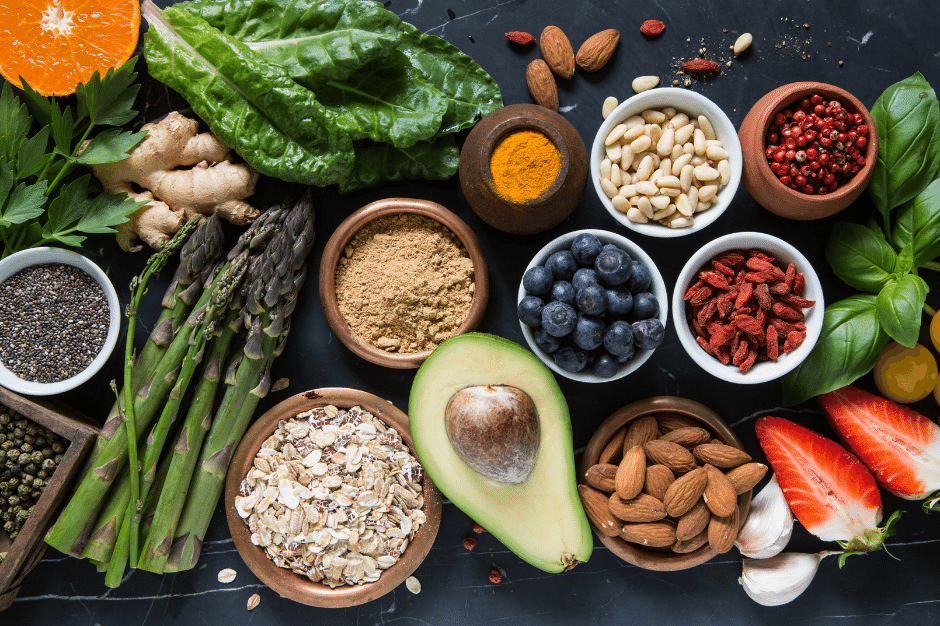


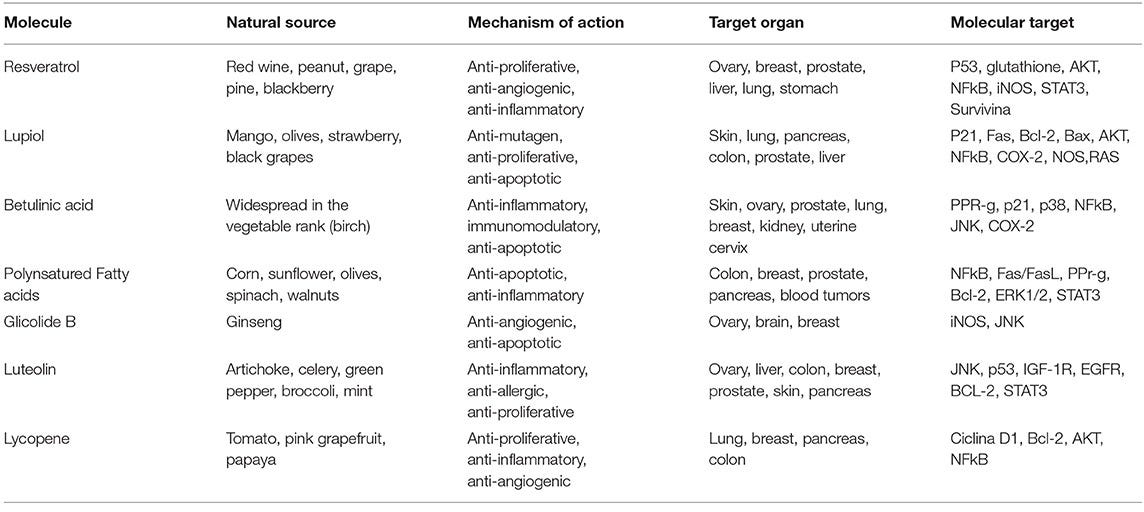


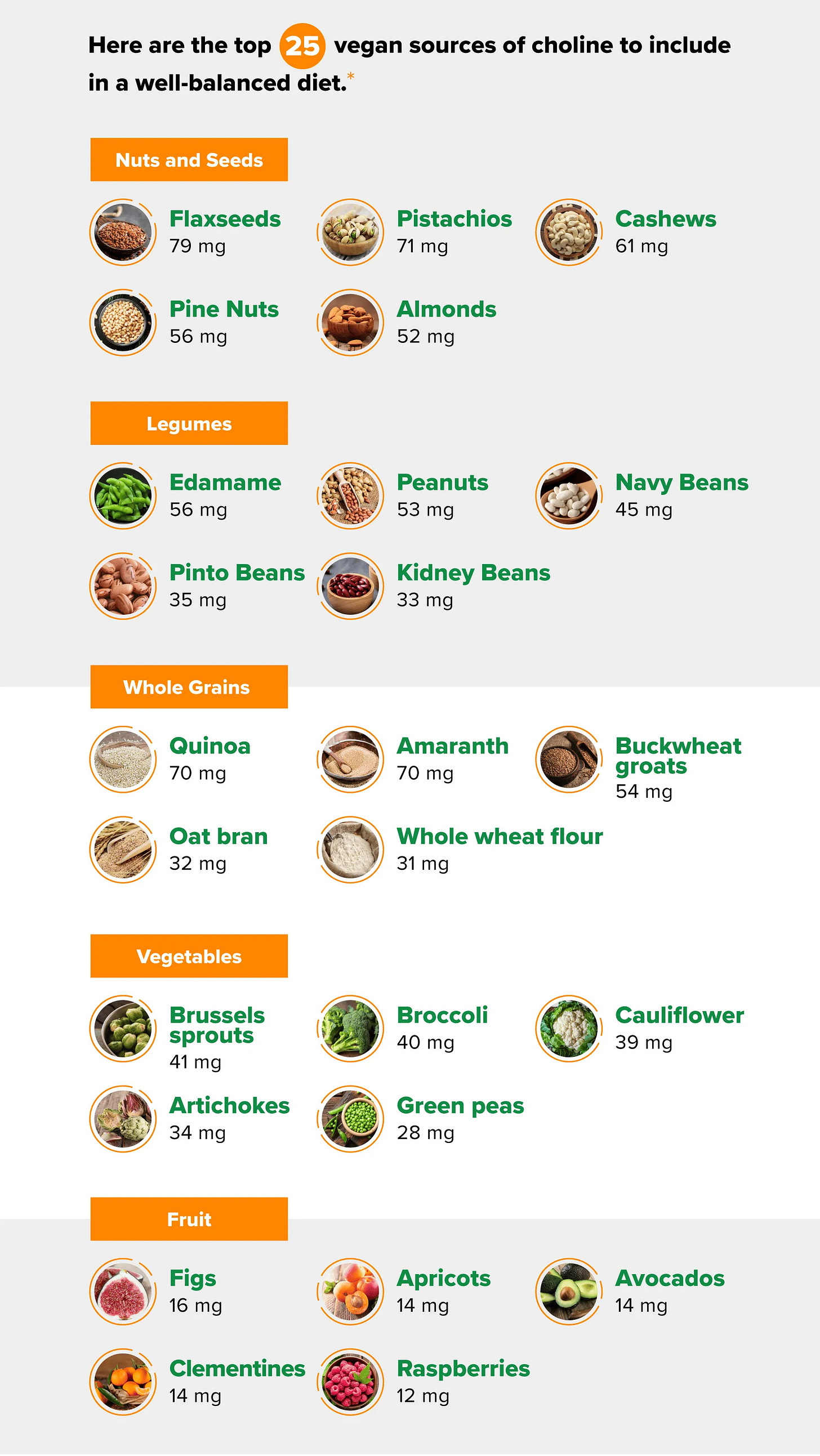

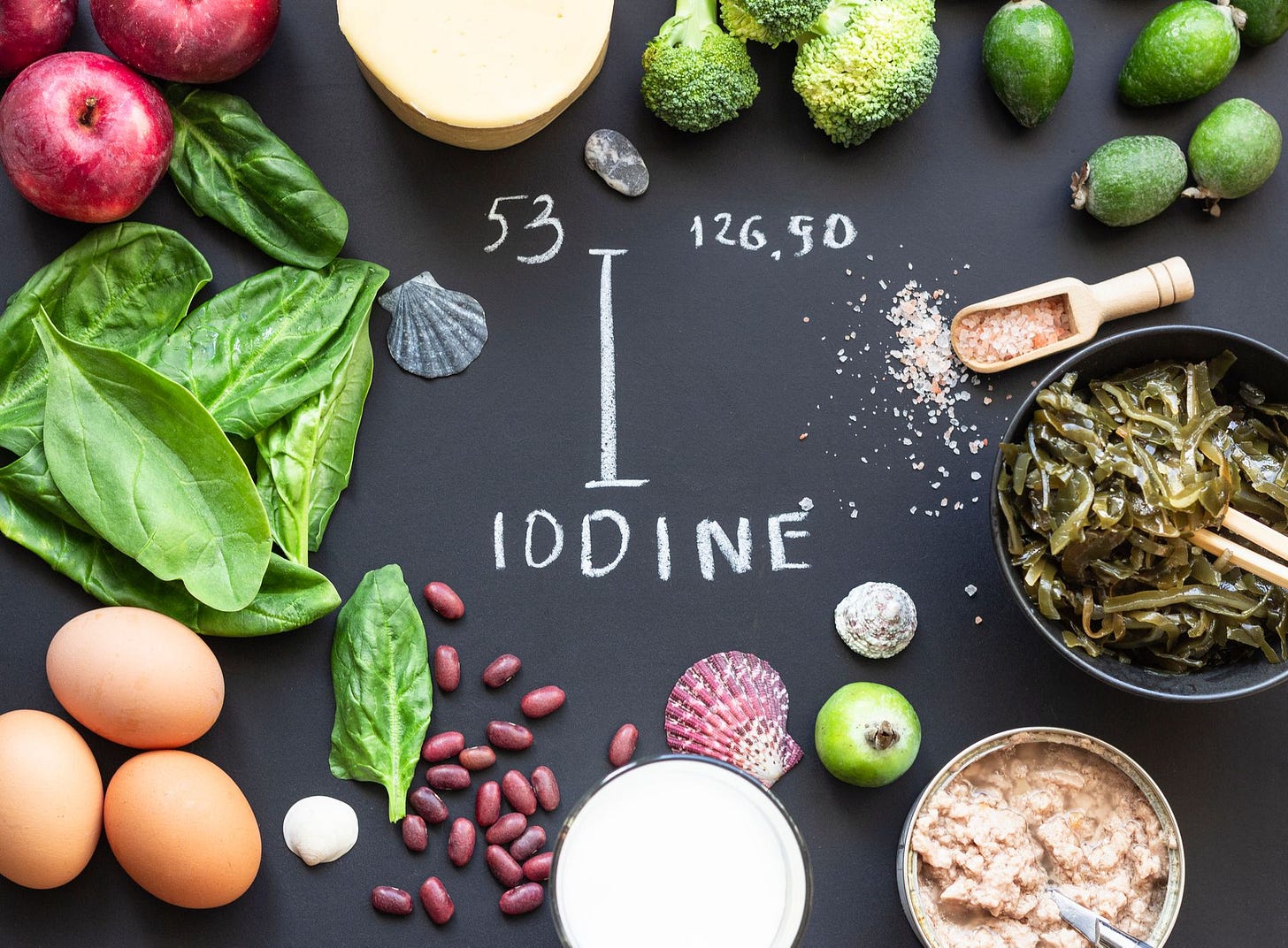
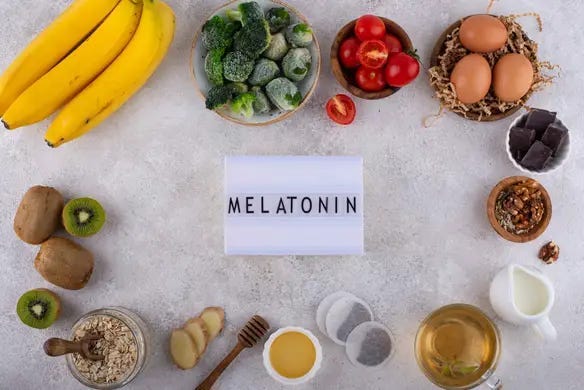
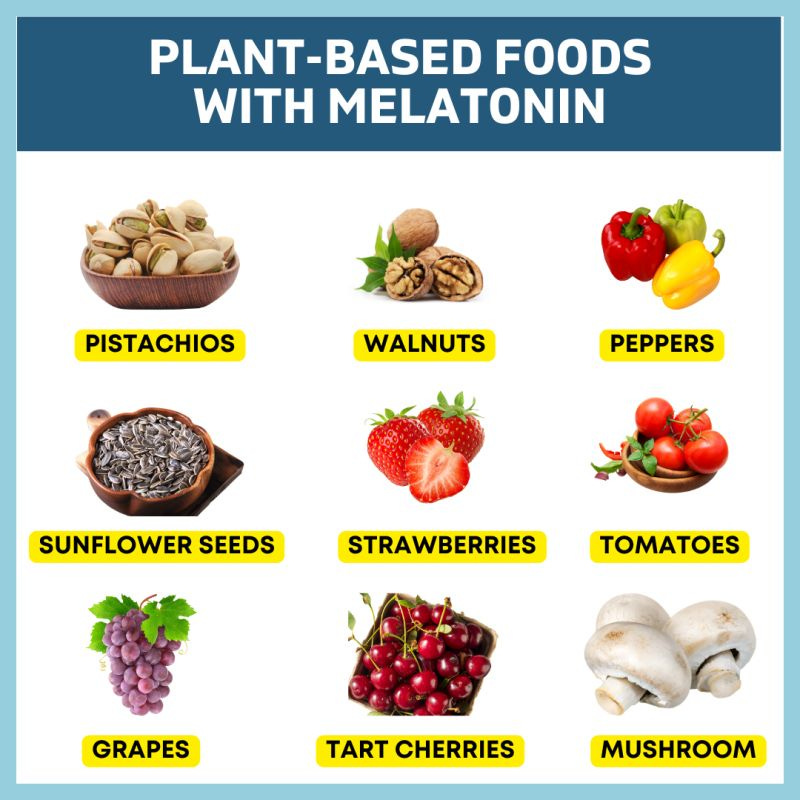

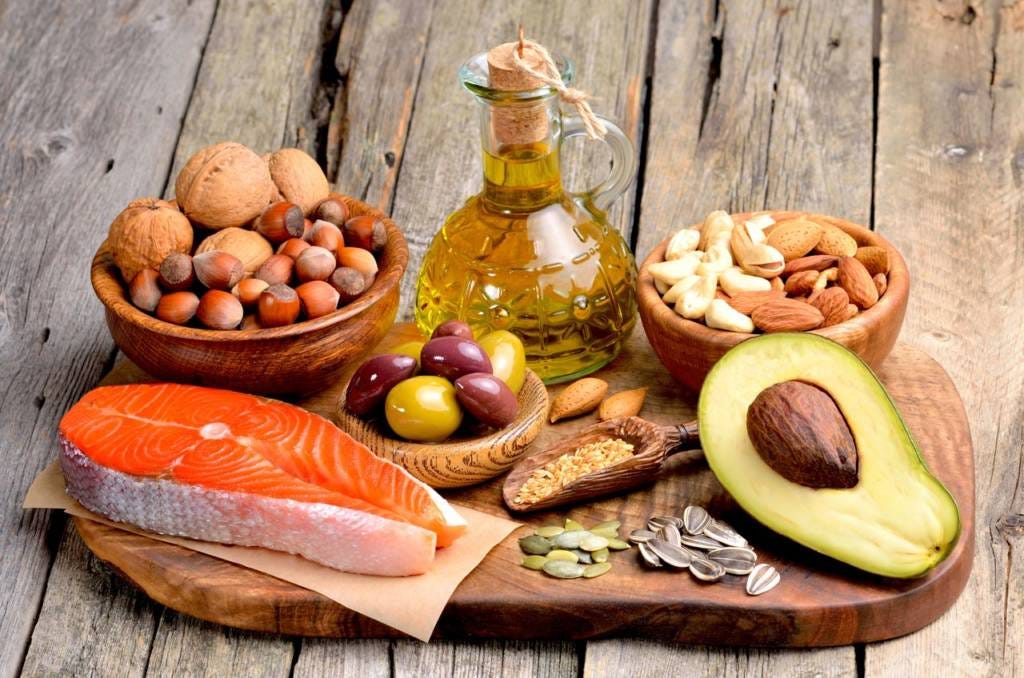

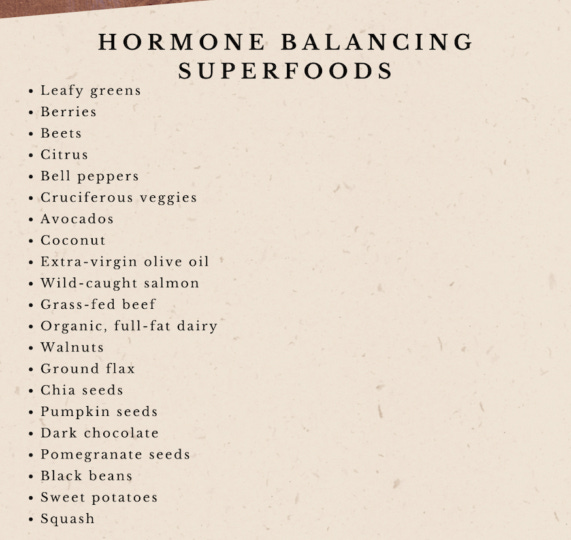







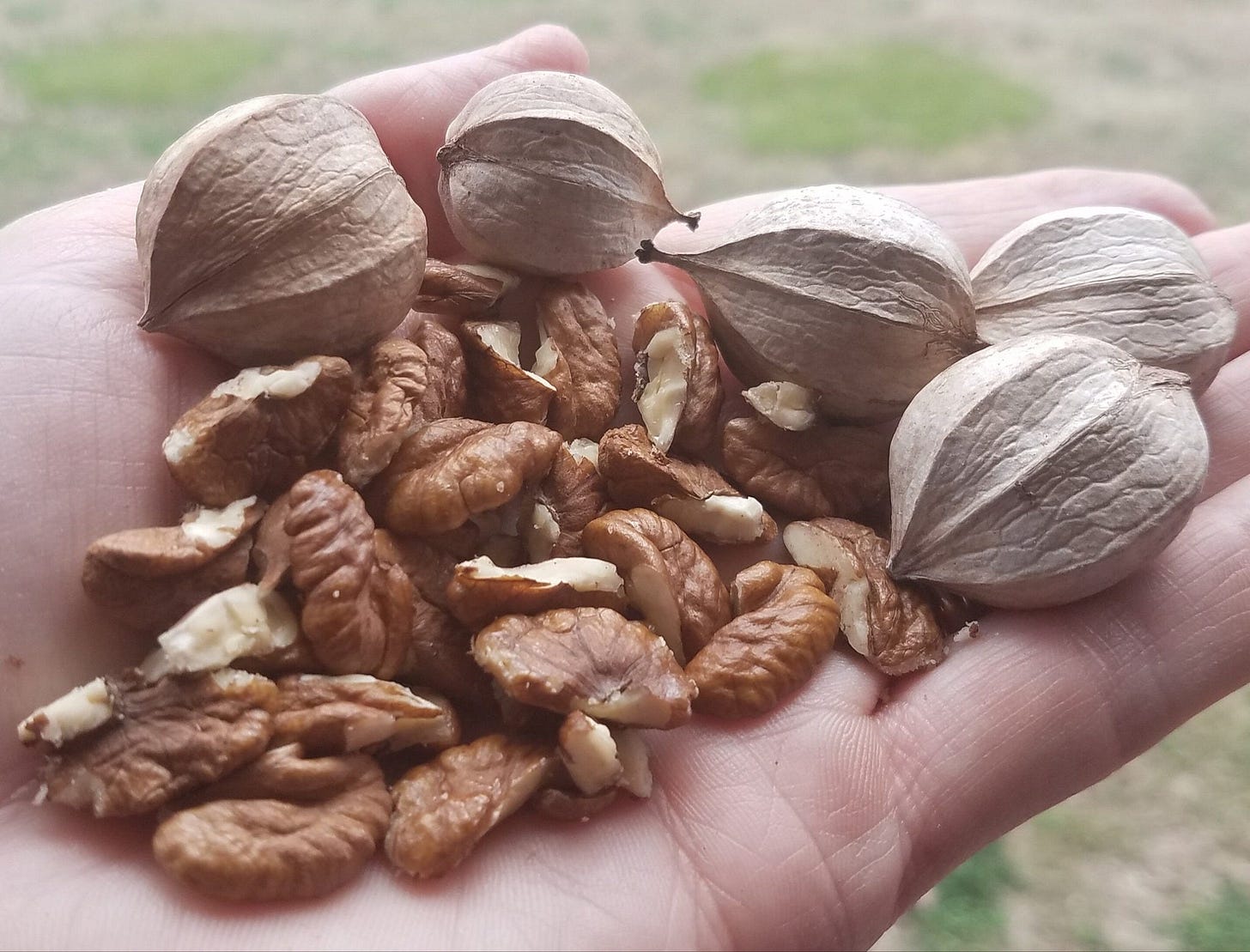
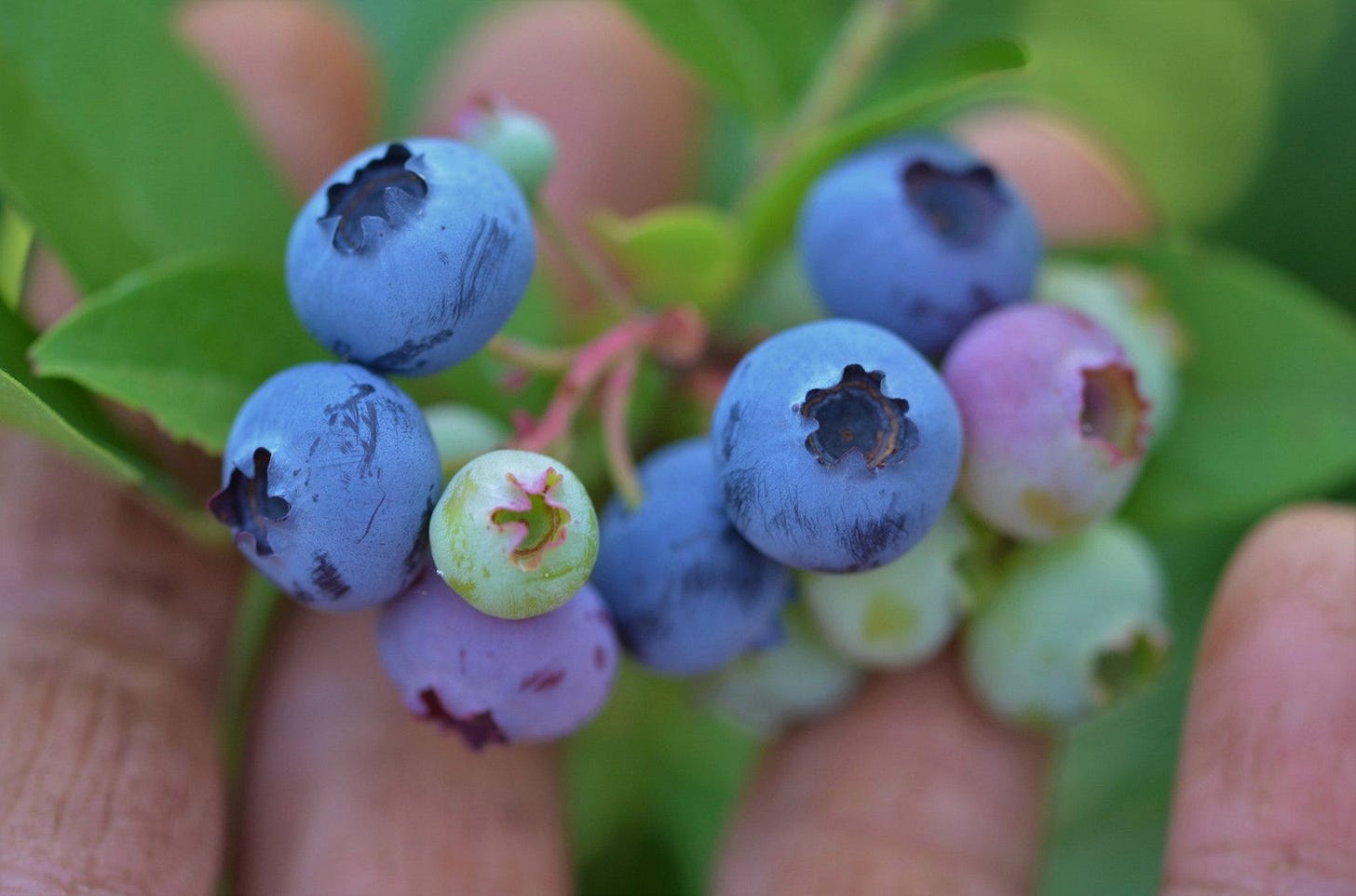


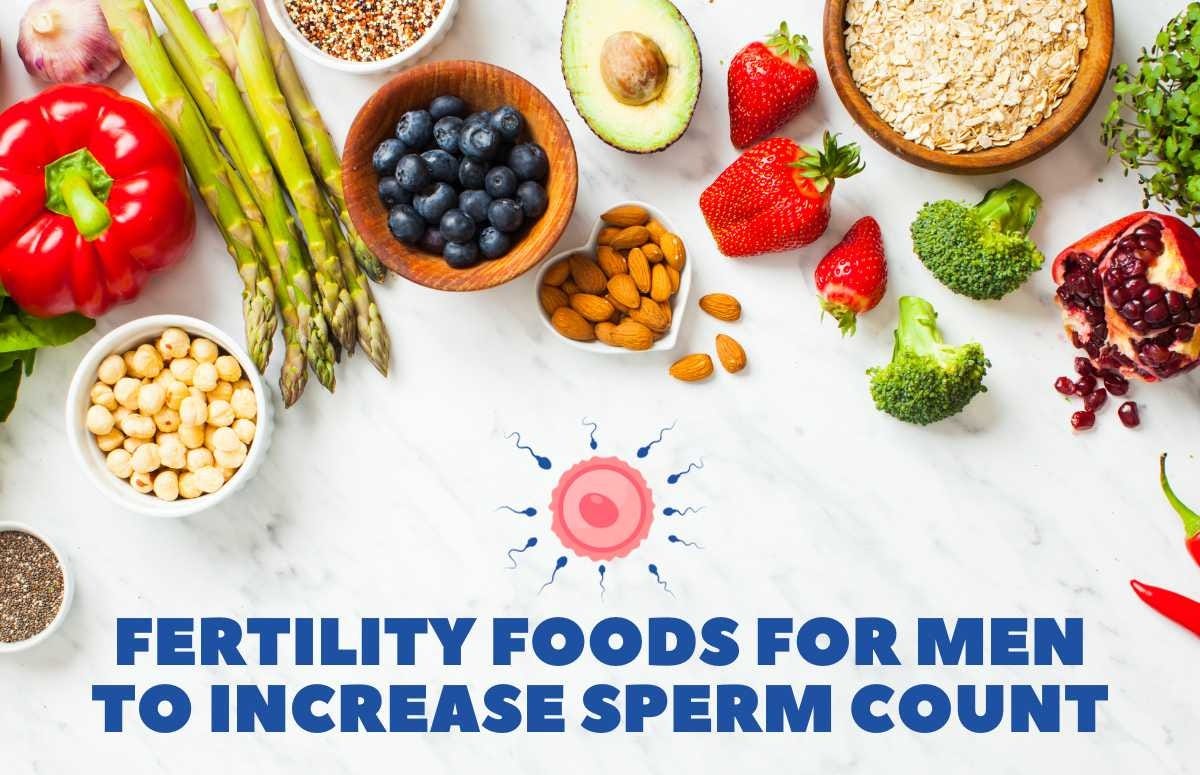

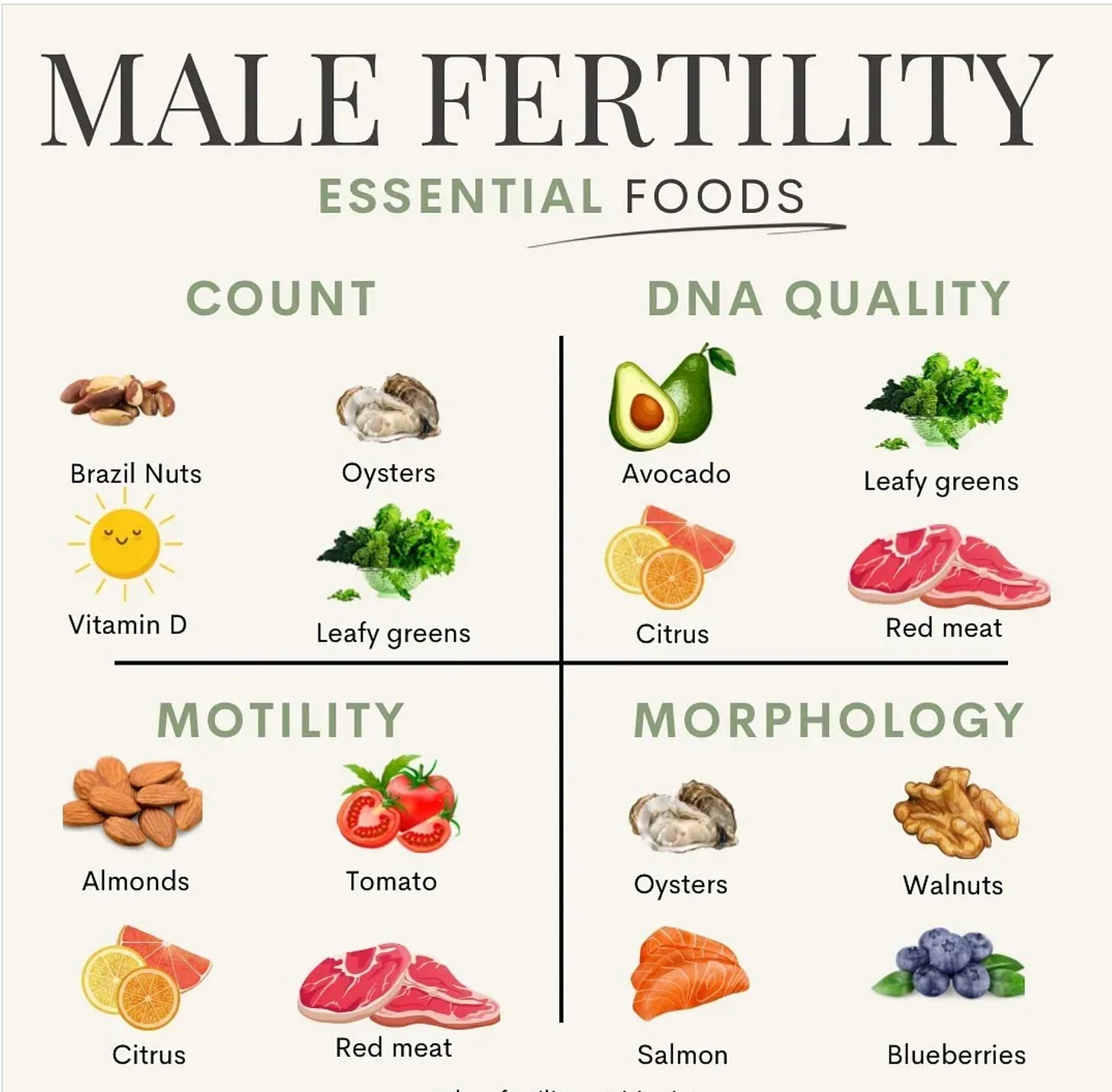

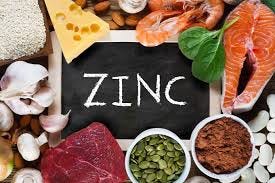
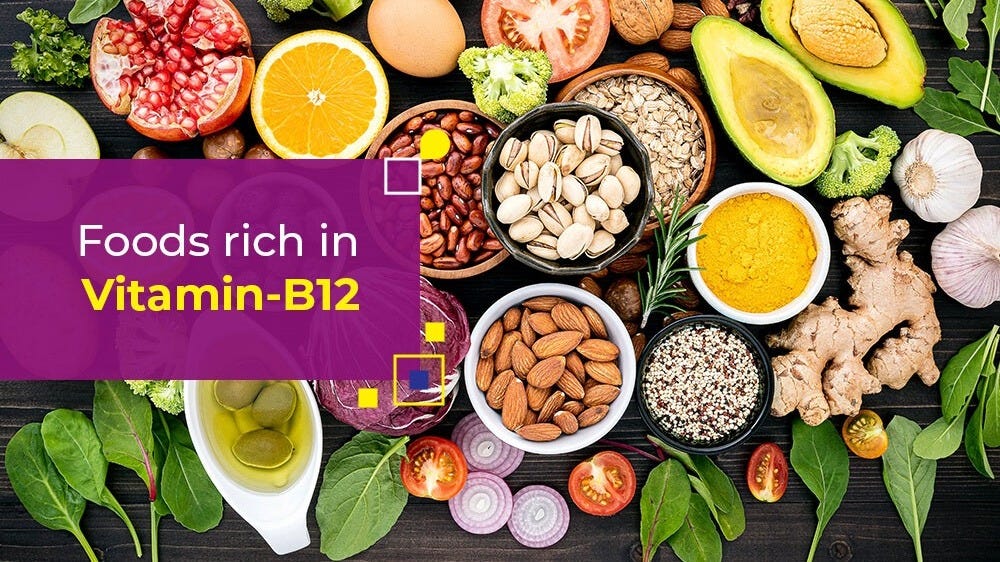
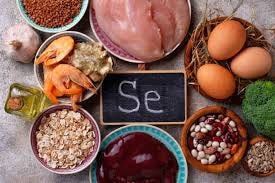
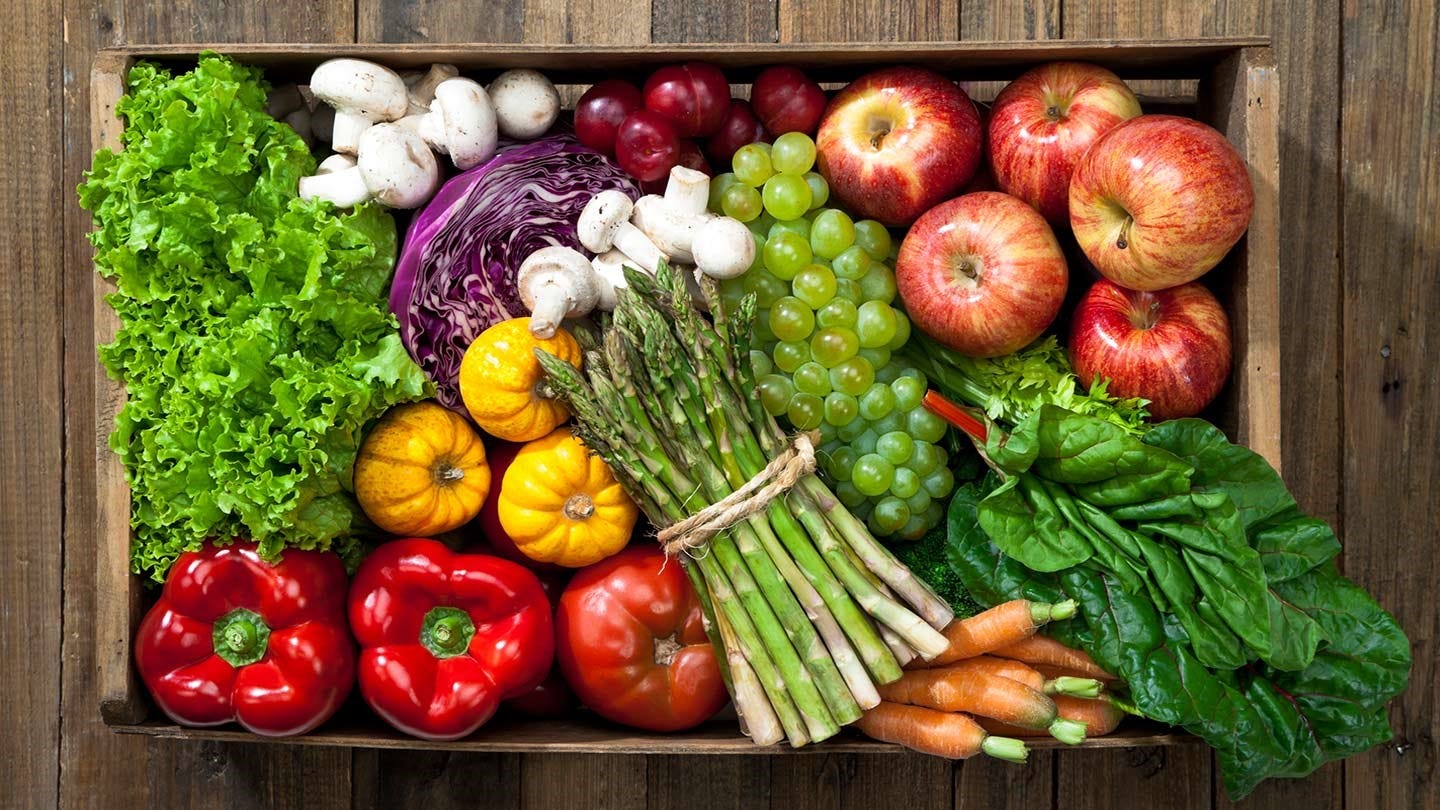
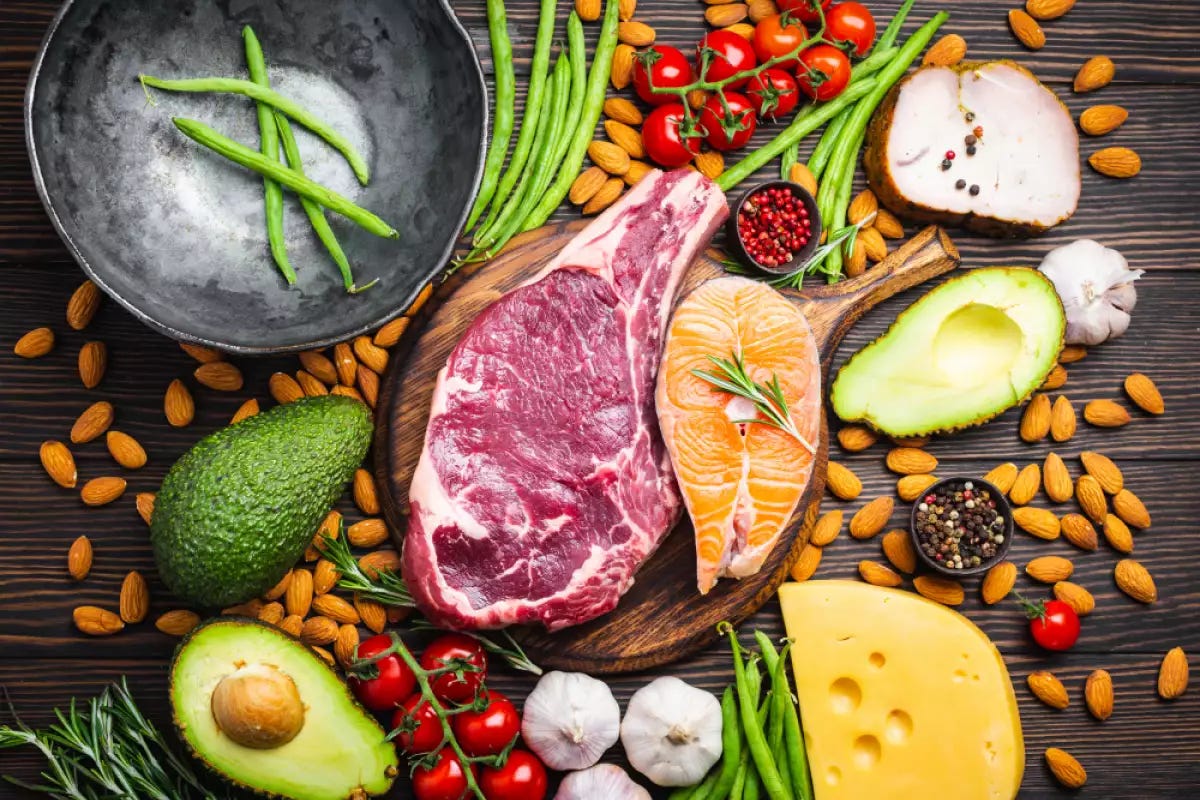
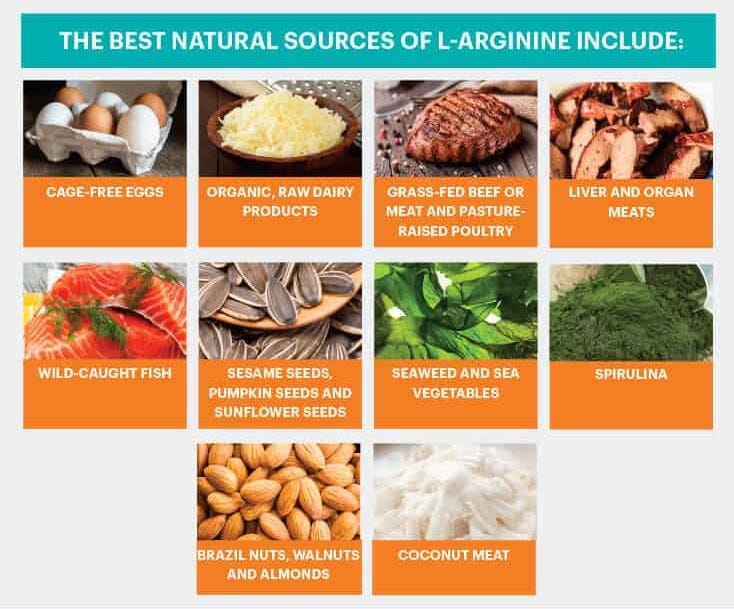
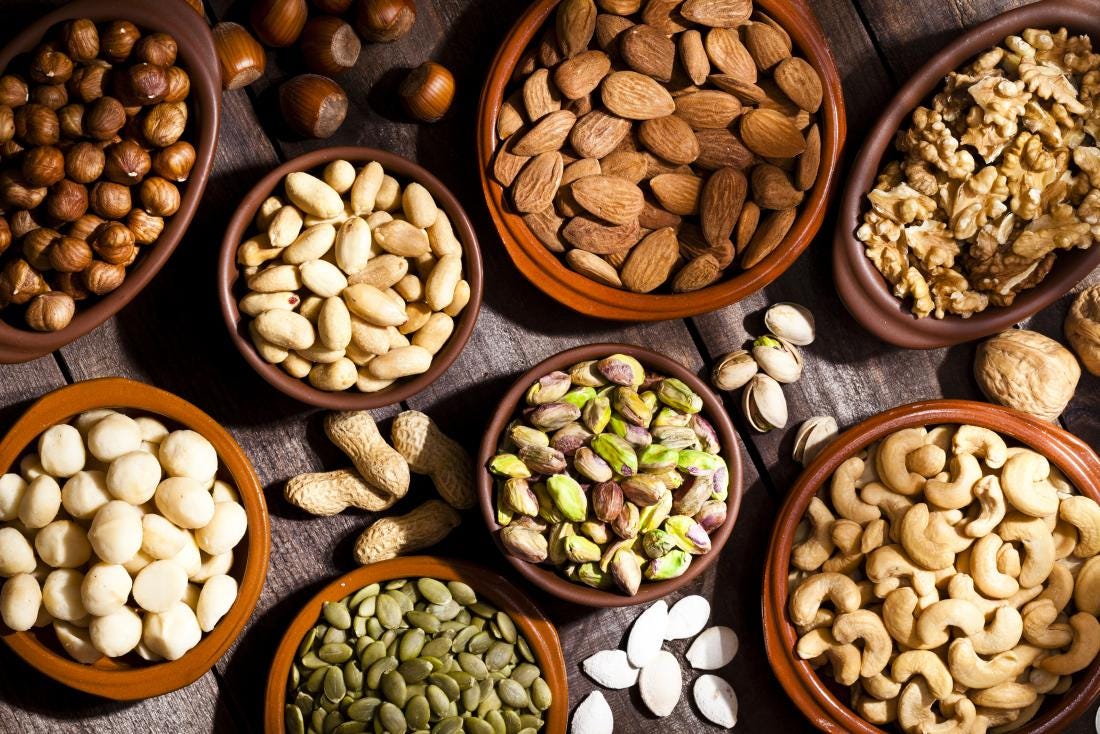
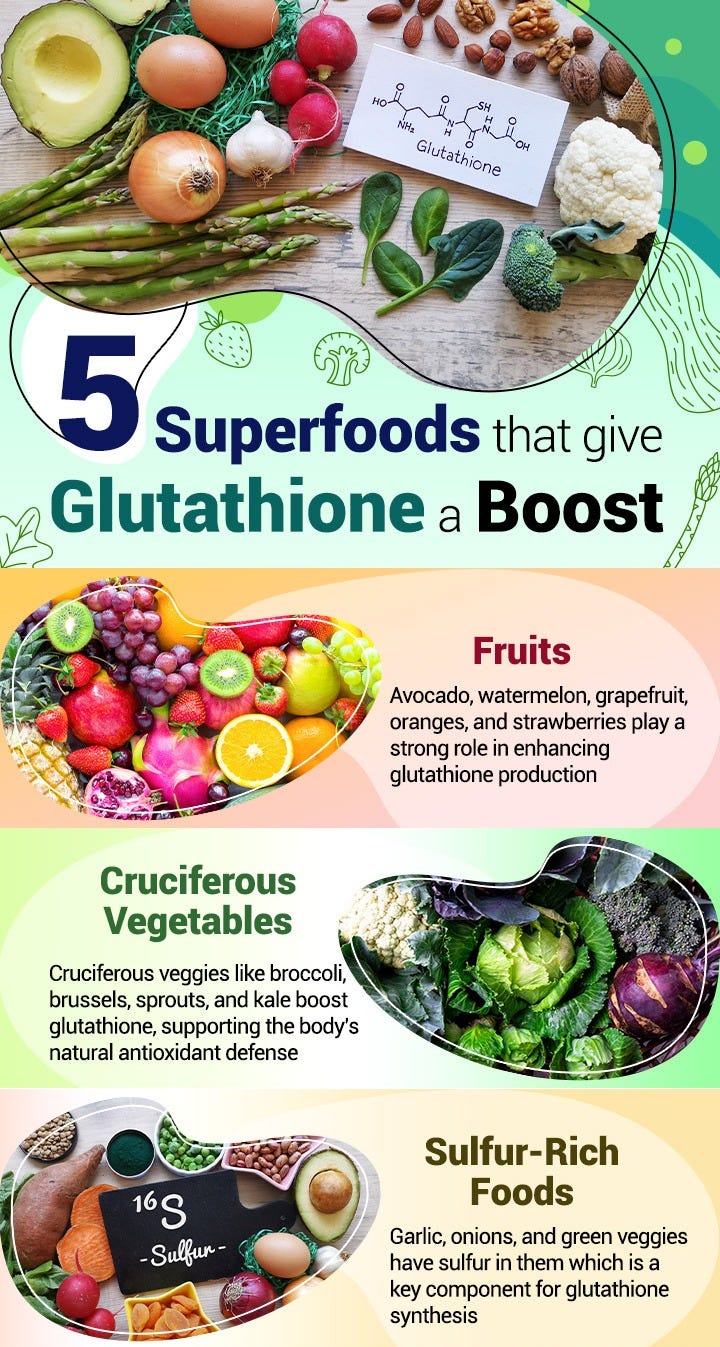



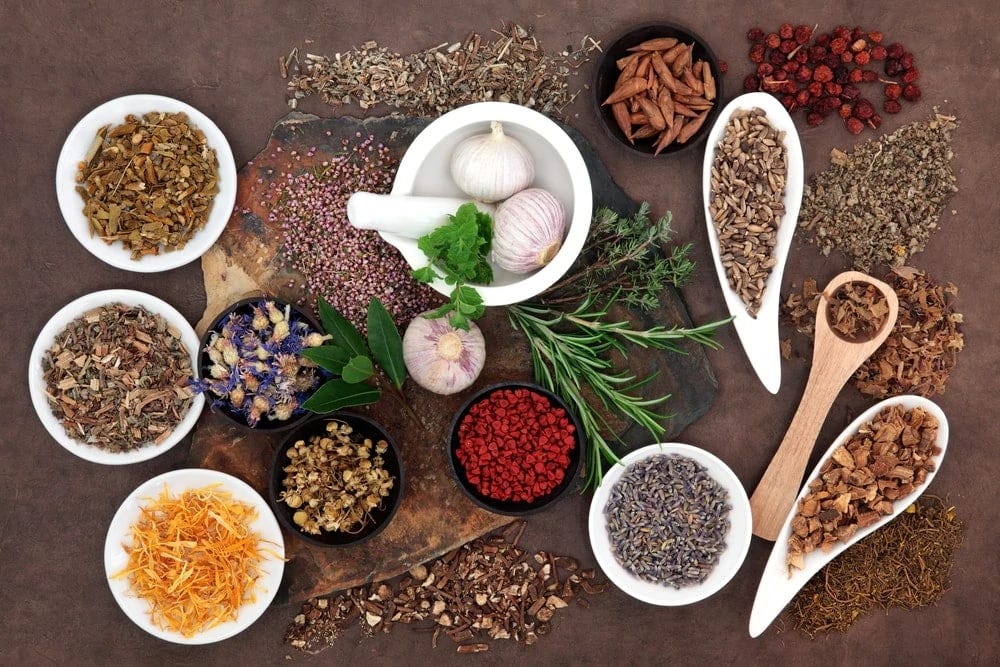


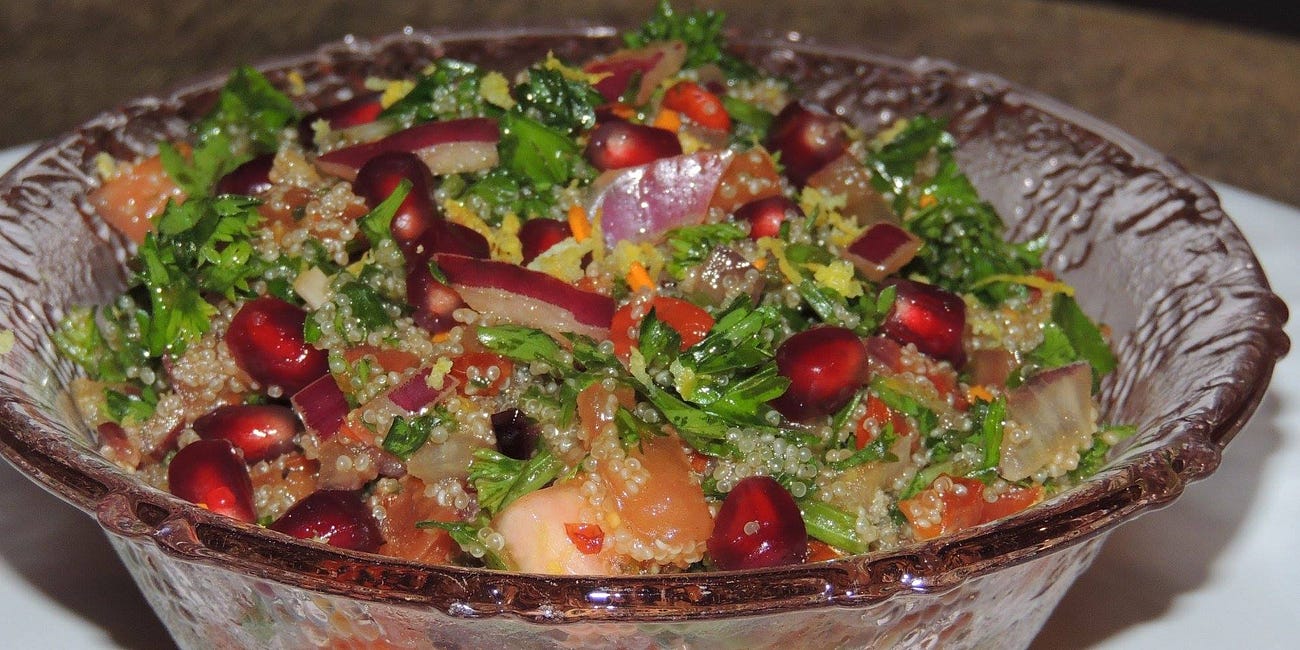
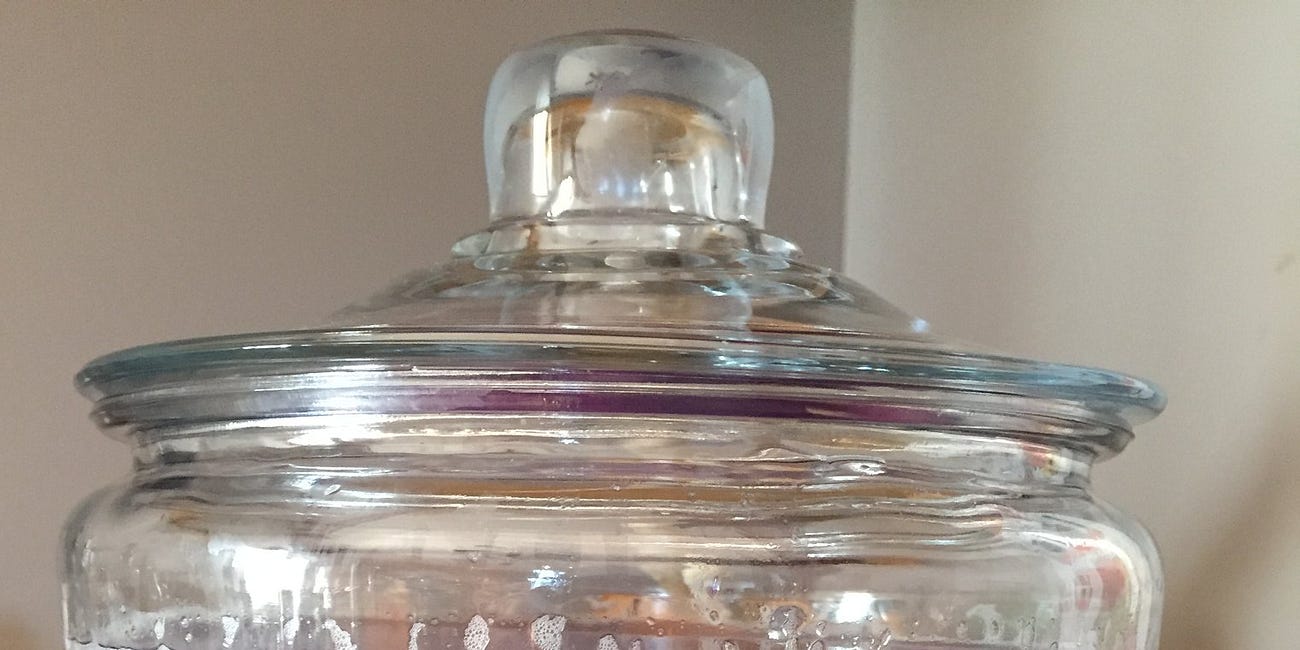
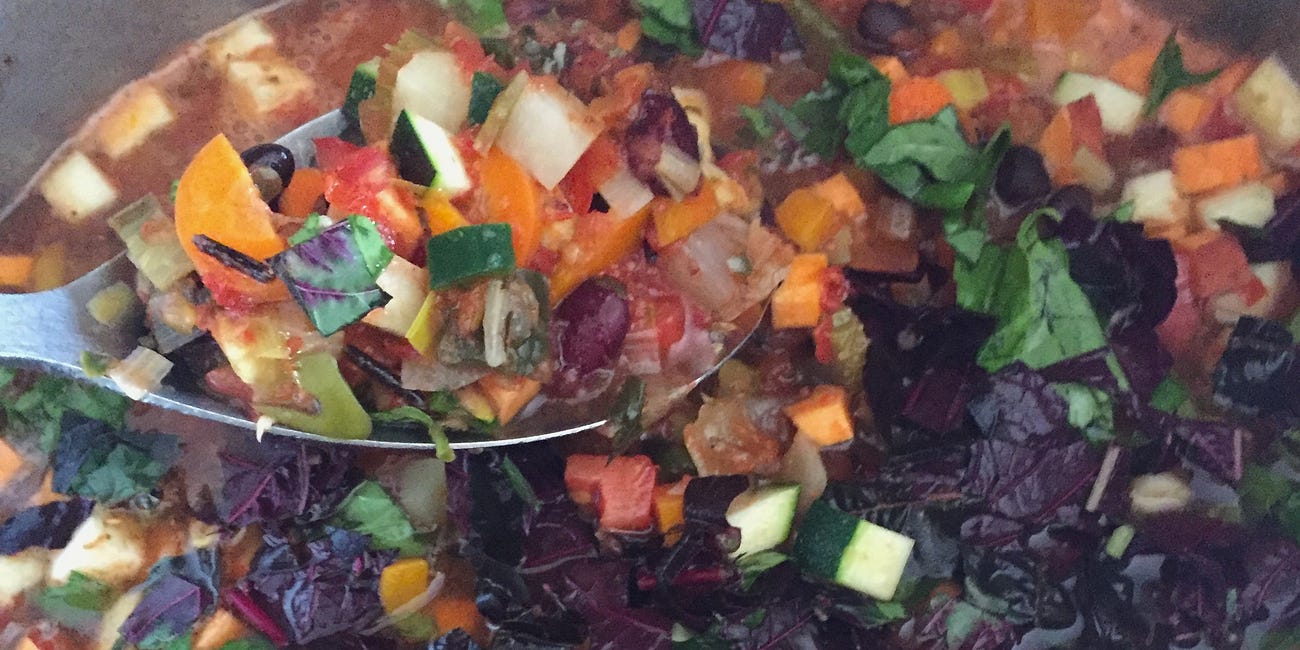


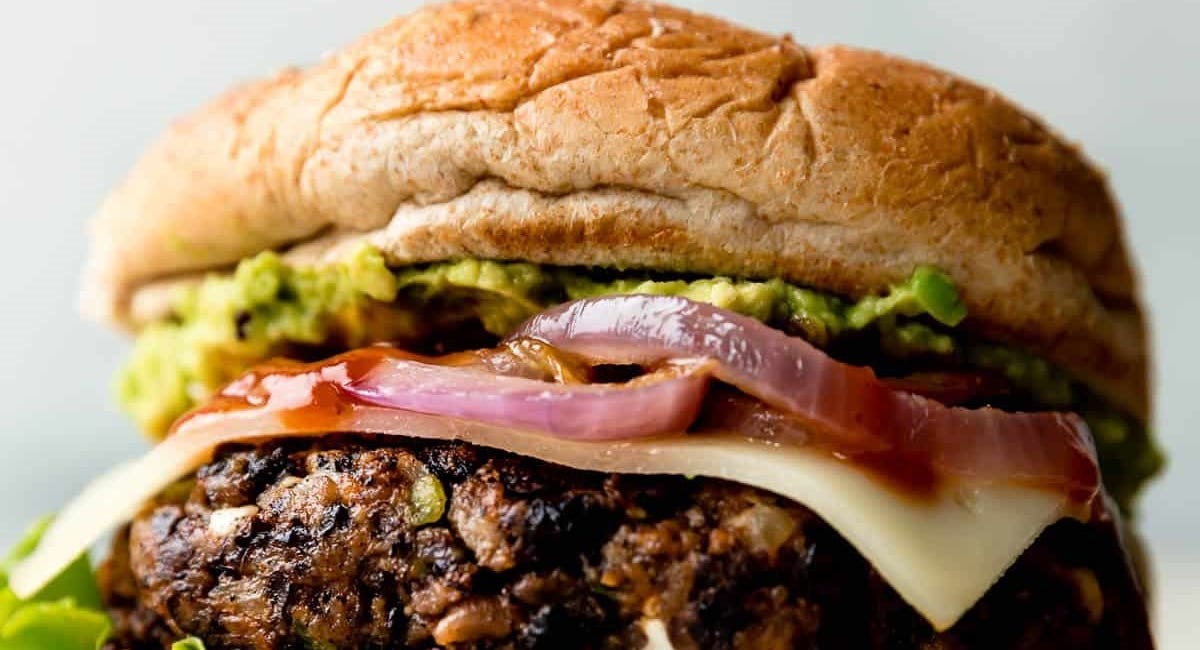
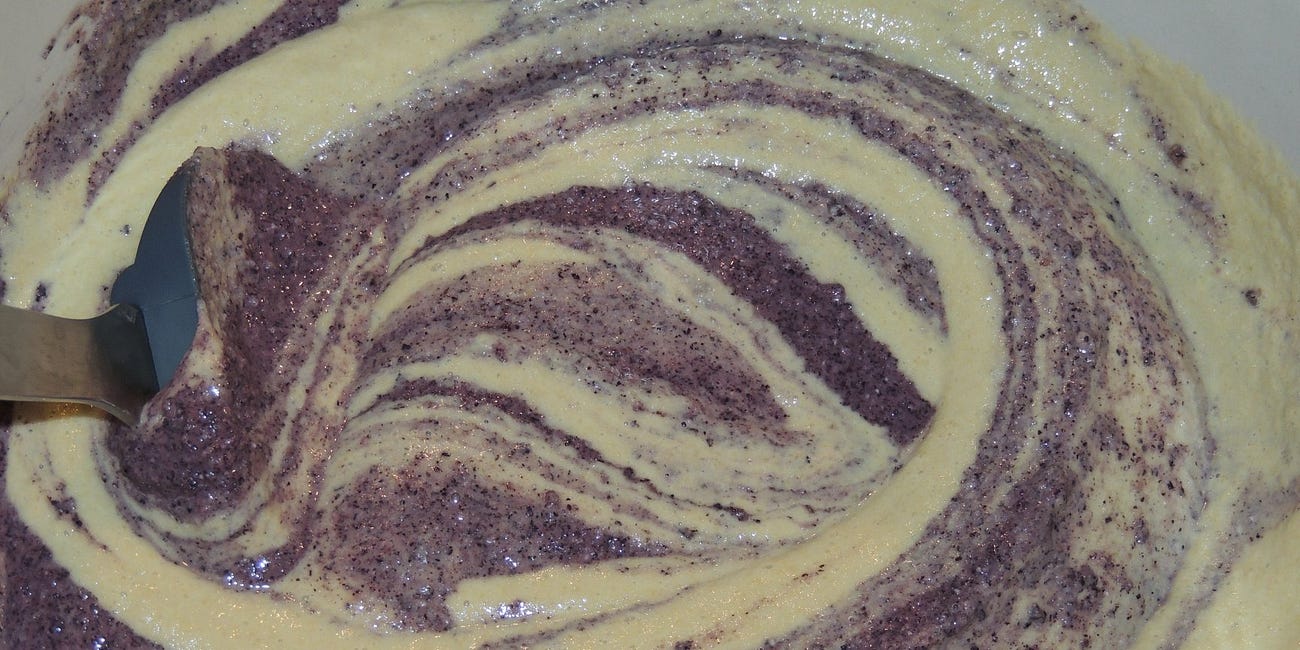

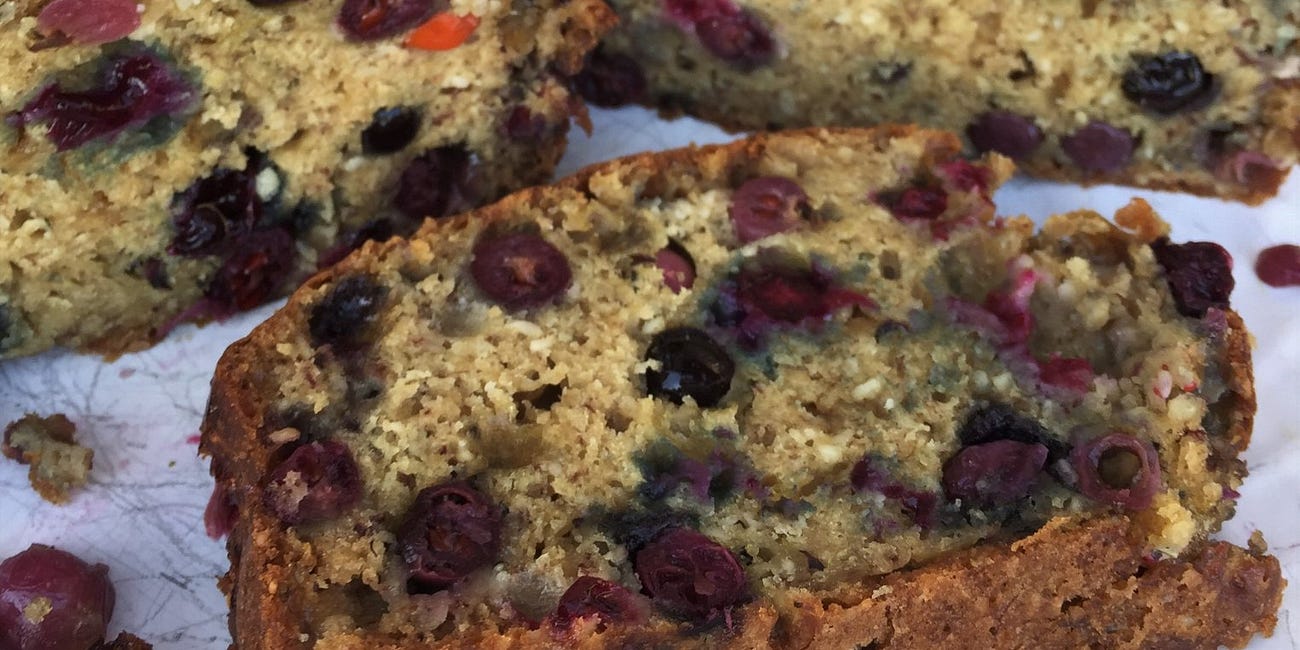



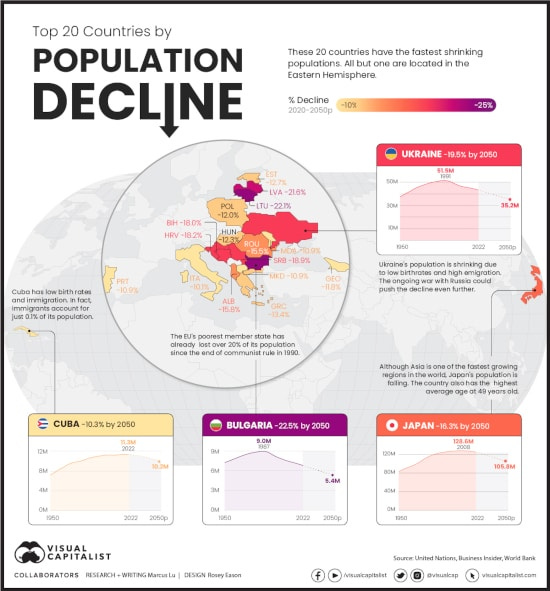

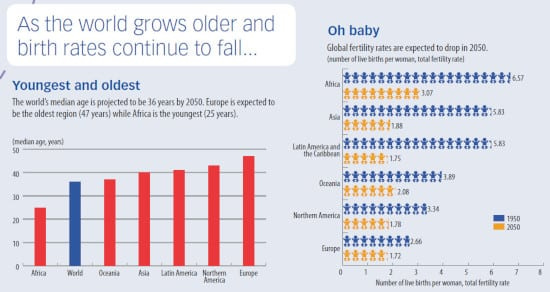







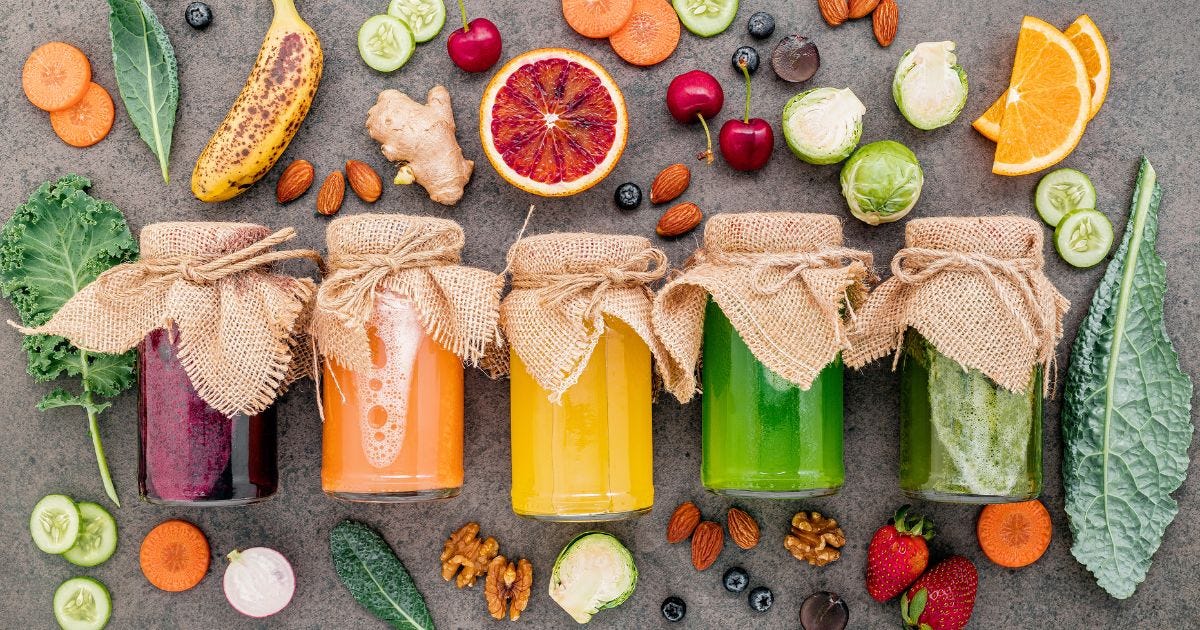

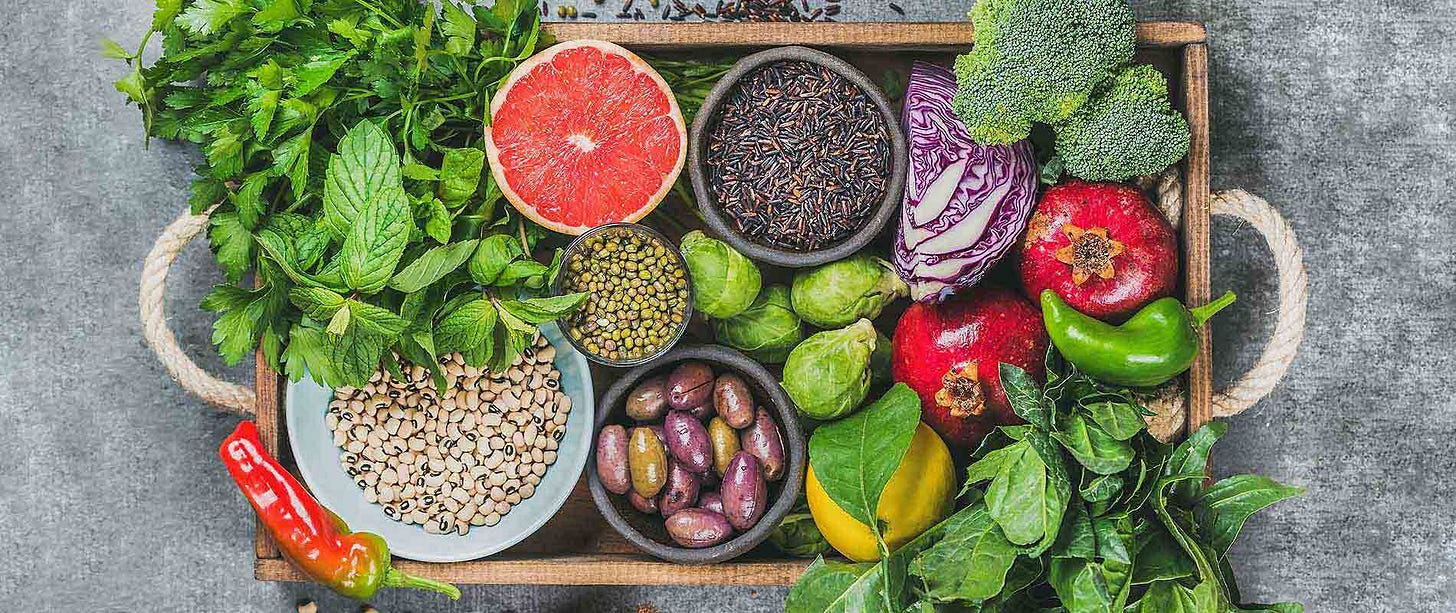

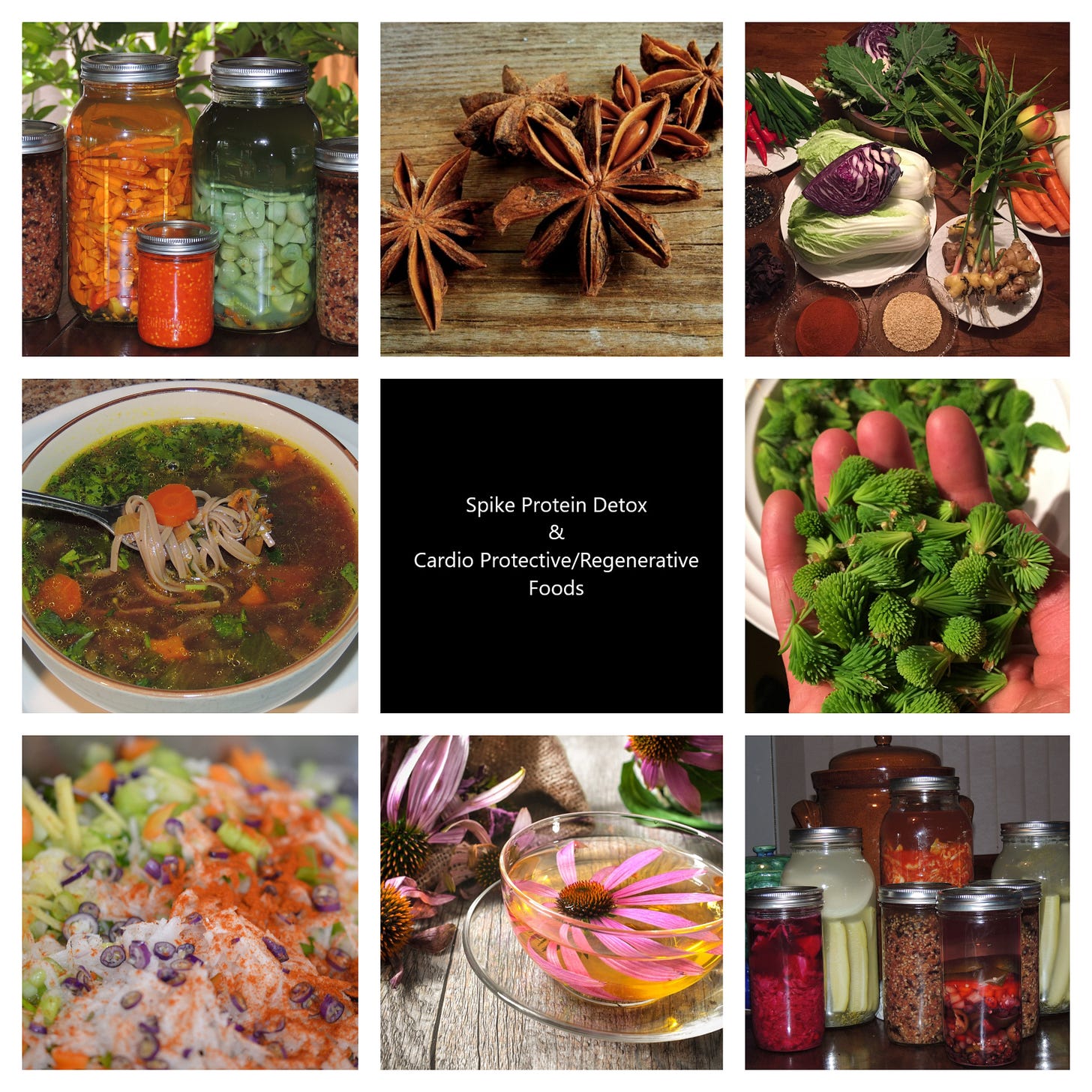
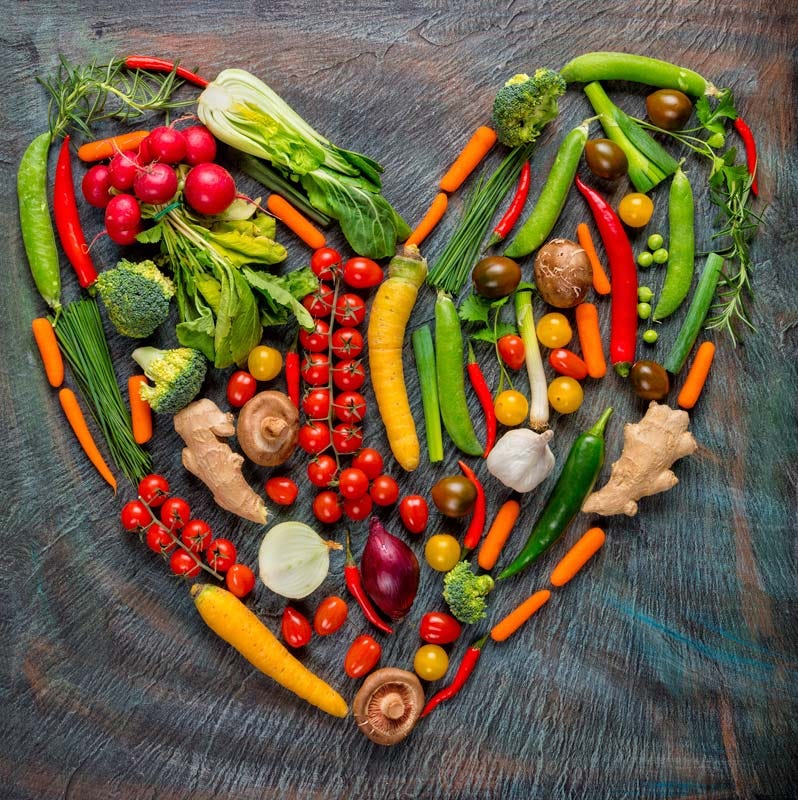
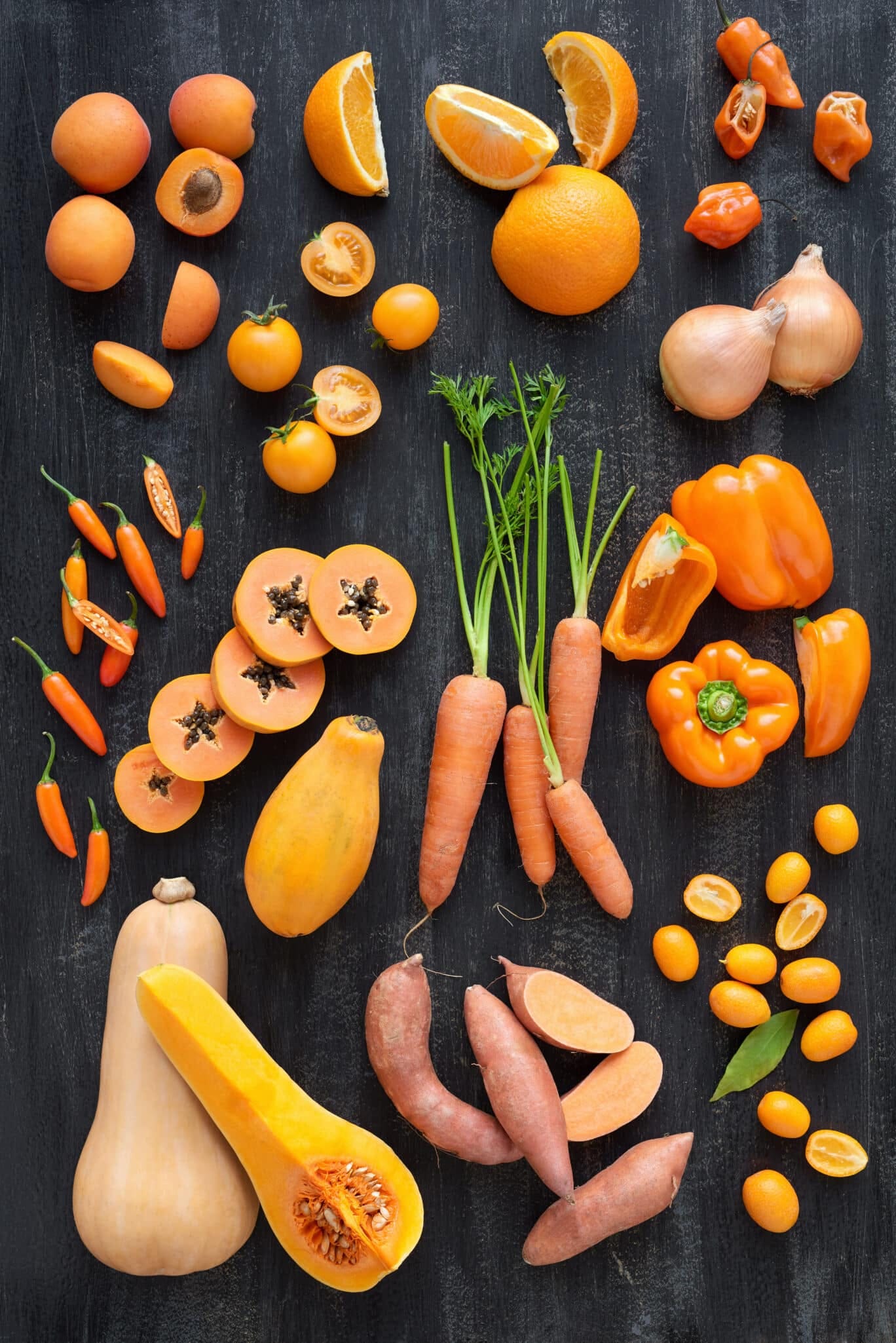
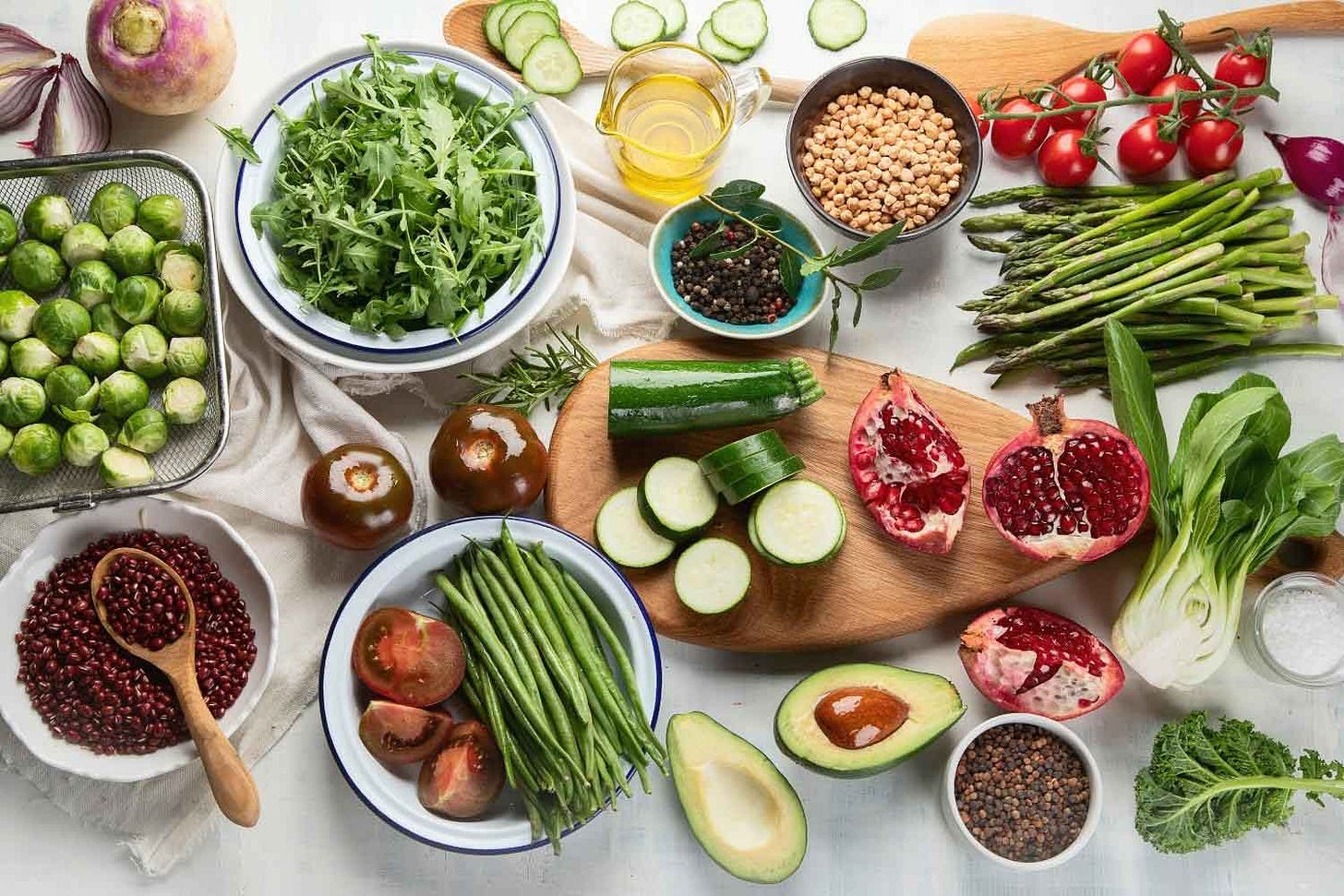
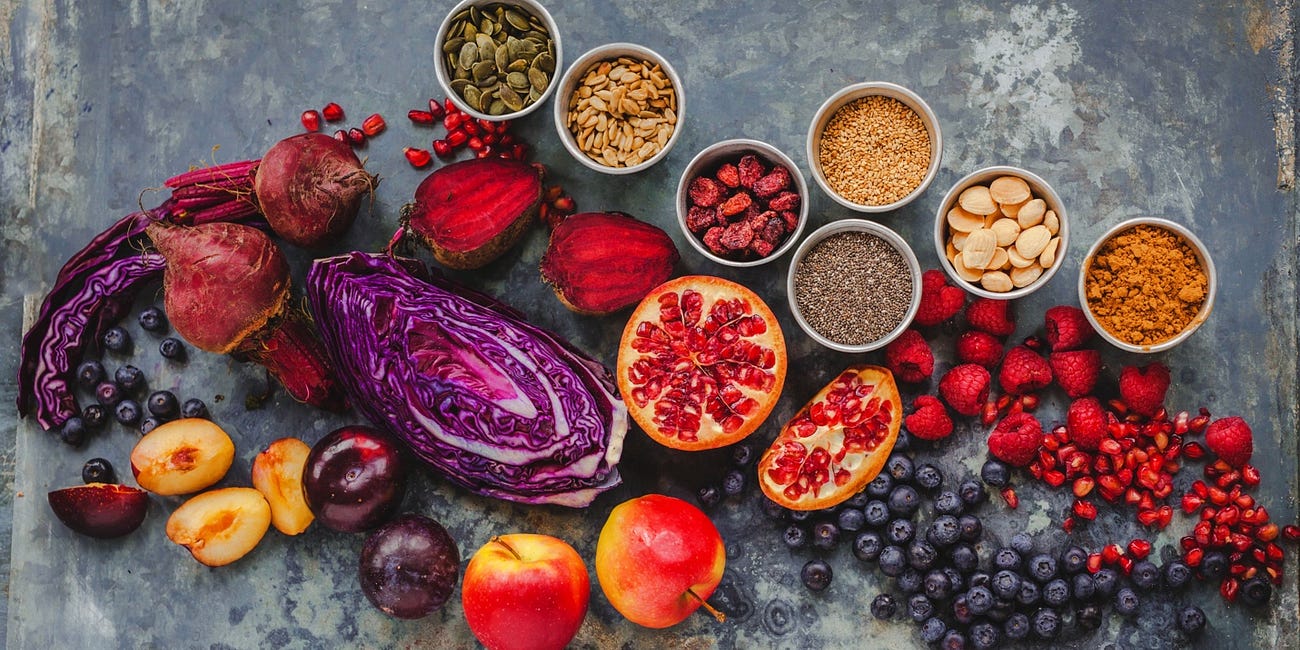
"We could help others realize that we do not live on a fixed pie and that every new human is not simply another mouth to feed with that ever-shrinking resource"
"We could argue that the culling of the future population by our decision not to have children deprives the world of the next genius who will come along to invent a solution to one of our many problems or the next great visionary who will inspire humanity to reach even greater equilibrium with the world around us."
Both of these statements jumped out at me today when I read James's piece. I'm glad you linked them in this stack. Very interesting and something I wish I had on my radar 16 years ago. So many things I'm learning and filing away in the hopes of a healthy grand baby someday. My eyes continue to open through each piece of new information. Thanks Gavin
Gavin! This is such a beautifully presented and luscious article...way beyond the peripheral. Your determination and inspiration is what keeps me happily hooked in wonderment to your posts. Thanks so much.